Ohio Civil War & WWI & WWII Show Our History ~ Not Forgotten

MANSFIELD, Ohio—The “Ohio Show” is a true testament that our history is not forgotten; thousands of guests filled the grounds looking for a bit of Civil War and WWI & II historical education. Mansfield, Ohio, came alive with Civil War, WWI, and WWII enthusiasts for a weekend packed with militaria and special featured events. The local community looks forward to this annual event each year. The Show is happy to support the Mansfield community. We hear that the hotels were filled, and restaurants were packed. Guests were given an opportunity to see unique and rare memorabilia, pose questions to historian experts about the details of war, and experience actual living history encampments of the Civil War and WWII. The cannon firing demonstrations are always a crowd pleaser and definitely makes some noise. The weekend is a family event that should not be missed.
Dealers traveling from over 44 states, along with over 4,000 attendees, tells the fact that the Ohio Show is the most attended event of the year. Dealers traveled
from as far as New York, Texas, Missouri, Maine, California, and even Hawaii, to share their unique wares.
The testimonials simply tell it like it is:
• “Incredible show as always
– One of the finest!” –Brendan Synnamon
• “One of the best shows of its kind in the country.” – Ron Coddington
• “Many thanks to everyone who participated and made this happen – Keeping history alive.” – Andy Rogers
• “It was AWESOME.” – Eric Sackman
The Annual Ohio Civil War, WWI &II Show is held at the Richland County Fairgrounds in Mansfield, Ohio, each year, during the first weekend in May. Seven buildings filled with military material from 1775 through 1945. This is the 45th year for the grand event.



Hats off to the Williams family who continue to manage and coordinate the Show. It takes a year in the planning to contact
all the dealers and orchestrate all the added special features that have become the crowd pleasers for young and old. The Williams family has a passion for history, and they come by it honestly. Don Williams originated the Show in 1977 with just a small isle of tables and a dream to keep our history alive. The Show quickly grew to over 750 tables with all the added outdoor features, making the Historical Show an event for all ages to enjoy.
The Show’s favorite features are the Civil War and WWII encampments spread over the entire grounds; rows of cannons stand along the tent lines; fire pits set up for evening campsite story telling. As the still of the night came alive each morning with a grand opening ceremony by the infantry, both Civil and Revolutionary Wars. What a spectacular sight to enjoy with your morning coffee.
Everyone enjoys music and the Camp Chase Fife & Drum Corps and the 73rd OVI Regiment Band played favorite tunes and featured period duty calls using drum beats throughout the day. Abraham Lincoln presented the Gettysburg
Address to a full crowd of interested guests, The Brigade of the American Revolution, along with Confederate and Union Civil War infantry, fired weapons and marched in line across the grounds. What a great photo opportunity it was.
Special Civil War and World War II Living History
Encampments showed visitors how the soldiers survived and endured life during periods when they were not marching or in combat. An educational presentation by the WWII U.S. 801st Medical Air Evacuation Squadron was one presentation not to miss. Guests learned how the squadron took care of the wounded and how they evacuated them in such challenging conditions. What a great history lesson.
The Artillery demonstration is a unique portion of the Show; the only one of its kind in the United States, showcasing artillery field pieces from the Revolutionary War through World War II. Visitors enjoyed seeing fullscale cannons, limbers, caissons, and artillery shells along with an eight-cannon firing line.
Reenactors took to the field in full dress to give an educational and entertaining demonstration of artillery firing.
In addition to celebrating Civil War valor and history, the World War I & World War II exhibitors were added to the Show due to the interest in our history. U.S. and German soldiers walked amongst the crowd and answered questions from guests who wanted to learn and understand more. A rare encampment set-up within the large barn showed complete living quarters, uniforms, weapons, and ammunition. Onlookers were in awe as U.S. WWII GI’s and German Soldaten demonstrated with blank firing WWII military weapons.
The educational displays never disappoint. Exhibitors were invited to participate in a display competition, where 26 dealers showcased unique items with historical facts in outstanding visual displays.
Thanks for all the great educational presentations this year.
Vol. 49, No. 7 40 Pages, July 2023 $4.00 America’s Monthly Newspaper For Civil War Enthusiasts 14 – American Battlefield Trust 34 – Book Reviews 12 – Central Virginia Battlefield Trust 26 – Critic’s Corner 28 – Emerging Civil War 39 – Events 24 – The Graphic War 18 – The Source 20 – This And That 10 – The Unfinished Fight 16 – Through the Lens H Ohio . . . . . . . . . . . . see page 4
Award winners from left to right: Daryl Poe, Richard Wolfe, Kevin Kinney, Cliff Krainik, Bret Schweinfurth (with daughter), Tom McEvoy, Abe Lincoln, Cathy Spencer (with spouse) and Lynda Setty. (Elizabeth Topping is not shown)
Camp Chase Fife & Drum Corps.
Civil War News
Published by Historical Publications LLC
2800 Scenic Drive, Suite 4-304, Blue Ridge, GA 30513 800-777-1862 • Facebook.com/CivilWarNews
mail@civilwarnews.com • civilwarnews.com
Advertising: 800-777-1862 • ads@civilwarnews.com
Jack W. Melton Jr. Publisher C. Peter & Kathryn Jorgensen Founding Publishers
Editor: Lawrence E. Babits, Ph.D.
Advertising, Marketing & Assistant Editor: Peggy Melton
Columnists: Craig Barry, Salvatore Cilella, Stephen Davis, Stephanie Hagiwara, Gould Hagler, Chris Mackowski, Tim Prince, and Michael K. Shaffer
Contributor & Photography Staff: Greg Biggs, Curt Fields, Michael Kent, Shannon Pritchard, Leon Reed, Bob Ruegsegger, Carl Sell Jr., Gregory L. Wade, Joan Wenner, J.D.
Civil War News (ISSN: 1053-1181) Copyright © 2023 by Historical Publications LLC is published 12 times per year by Historical Publications LLC, 2800 Scenic Drive, Suite 4-304, Blue Ridge, GA 30513. Monthly. Business and Editorial Offices: 2800 Scenic Drive, Suite 4-304, Blue Ridge, GA 30513, Accounting and Circulation
Offices: Historical Publications LLC, 2800 Scenic Drive, Suite 4-304, Blue Ridge, GA 30513. Call 800-777-1862 to subscribe. Periodicals postage paid at U.S.P.S. 131 W. High St., Jefferson City, MO 65101.
POSTMASTER: Send address changes to: Historical Publications LLC 2800 Scenic Drive Suite 4-304 Blue Ridge, GA 30513

Display advertising rates and media kit on request. The Civil War News is for your reading enjoyment. The views and opinions expressed herein are those of its authors, readers and advertisers and they do not necessarily reflect the official policy or position of Historical Publications, LLC, its owners and/or employees.
Current Event Listings
To see all of this year’s current events visit our website at: HistoricalPublicationsLLC.com
Please send your book(s) for review to: Civil War News
2800 Scenic Drive Suite 4-304 Blue Ridge, GA 30513
Email cover image to bookreviews@civilwarnews.com. Civil War News cannot assure that unsolicited books will be assigned for review. Email bookreviews@civilwarnews.com for eligibility before mailing.
ADVERTISING INFO:
Email us at ads@civilwarnews.com
Call 800-777-1862
MOVING?
Contact us to change your address so you don’t miss a single issue. mail@civilwarnews.com • 800-777-1862
SUBSCRIPTION RATES
U.S. Subscription rates are $41/year, digital only $29.95/year, add digital to paper subscription for only $10/year more. Subscribe securely at CivilWarNews.com
Terms and Conditions
The following terms and conditions shall be incorporated by reference into all placement and order for placement of any advertisements in Civil War News by Advertiser and any Agency acting on Advertiser’s behalf. By submitting an order for placement of an advertisement and/or by placing an advertisement, Advertiser and Agency, and each of them, agree to be bound by all of the following terms and conditions:
1. All advertisements and articles are subject to acceptance by Publisher who has the right to refuse any ad submitted for any reason. Mailed articles and photos will not be returned.
2. The advertiser and/or their agency warrant that they have permission and rights to anything contained within the advertisement as to copyrights, trademarks or registrations. Any infringement will be the responsibility of the advertiser or their agency and the advertiser will hold harmless the Publisher for any claims or damages from publishing their advertisement. This includes all attorney fees and judgments.
3. The Publisher will not be held responsible for incorrect placement of the advertisement and will not be responsible for any loss of income or potential profit lost.
4. All orders to place advertisements in the publication are subject to the rate card charges, space units and specifications then in effect, all of which are subject to change and shall be made a part of these terms and conditions.
5. Photographs or images sent for publication must be high resolution, unedited and full size. Phone photographs are discouraged. Do not send paper print photos for articles.
6. At the discretion of Civil War News any and all articles will be edited for accuracy, clarity, grammar and punctuation per our style guide.
7. Articles can be emailed as a Word Doc attachment or emailed in the body of the message. Microsoft Word format is preferred. Email articles and photographs: mail@civilwarnews.com
8. Please Note: Articles and photographs mailed to Civil War News will not be returned unless a return envelope with postage is included.
2 CivilWarNews.com July 2023 2 July 2023 CivilWarNews.com
P UBLISHERS :
Deadlines for Advertising or Editorial Submissions is the 20th of each month. Email: ads@civilwarnews.com Digital Issues of CWN are available by subscription alone or with print plus CWN archives at CivilWarNews.com Advertisers In This Issue: Ace Pyro LLC 31 American Battlefield Trust 25 Artilleryman Magazine 13 Ashley R. Rhodes Militaria 17 CWMedals.com, Civil War Recreations 13 Civil War Navy Magazine 17 College Hill Arsenal – Tim Prince 31 Day by Day through the Civil War in Georgia – Book 18 Dell’s Leather Works 9 Dixie Gun Works Inc. 9 Georgia’s Confederate Monuments – Book 22 Gettysburg Foundation 7, 19 Gunsight Antiques 19 Harpers Ferry Civil War Guns 2 HistoryFix.com 29 The Horse Soldier 5 James Country Mercantile 9 Le Juneau Gallery 11 Mercer University Press 27 Mike McCarley – Wanted Fort Fisher Artifacts 29 Military Antique Collector Magazine 38 National Museum of Civil War Medicine 15 N-SSA 6 Regimental Quartermaster 6 Richard LaPosta Civil War Books 35 Shiloh Chennault Bed and Breakfast 10 Suppliers to the Confederacy – Book 31 Ulysses S. Grant impersonator – Curt Fields 4 Events: Chicago Civil War Show 7 J. James Auctions 17 MKShows, Mike Kent 3, 34 Military Antique Show – Virginia 31 Poulin’s Auctions 40 Southeastern Civil War & Antique Show 6










Mike Kent & Associates, LLC • PO Box 685 • Monroe, GA 30655 770-630-7296 • Mike@MKShows.com • www.MKShows.com Military Collectible & Gun & Knife Shows Presents The Finest Williamson County Ag Expo Park 4215 Long Lane Franklin, TN 37064 Dec. 2 & 3, 2023 Middle TN (Franklin) Civil War Show Promoters of Quality Shows for Shooters, Collectors, Civil War and Militaria Enthusiasts WNC Ag Center 1301 Fanning Bridge Road Fletcher, NC July 8 & 9, 2023 Asheville Gun & Knife Show Exchange Park Fairgrounds 9850 Highway 78 Ladson, SC 29456 Sept. 9 & 10, 2023 Charleston Gun & Knife Show WNC Ag Center 1301 Fanning Bridge Road Fletcher, NC Oct. 7 & 8, 2023 Asheville Gun & Knife Show Myrtle Beach Convention Center 2101 North Oak Street Myrtle Beach, SC 29579 Nov. 4 & 5, 2023 Myrtle Beach Gun & Knife Show
H Ohio from page 1
Award winners this year included Cliff Krainik who received a Judges Award for “Black Hawk From Frontier Warrior to Cultural Icon,” Lynda Setty won a Judges Award for her display entitled “Jumpers: 1852 to 1876,” Richard Wolfe received another Judges Award for his display “General Benjamin Franklin Kelley,” Kevin Kinney won Best Arms and Equipment with “German Machine Guns 1938–1945,” Elizabeth Topping won Best Educational with her display “Sanitary Fairs,” Bret Schweinfurth received Best Photographic for his display entitled “Invalid Corps,” Daryl Poe received Best Outstanding Artillery display for his “U.S. Model 1905 3-inch Field Gun with 1904 Limber,” and Cathy Spencer won Best World Wars for her display of “American Barrage Balloons in WWII.”
The Best of Show Award for 2023 went to Tom McEvoy for his display of a very rare historical inclusive view of Lincoln’s funeral arrangements. A history lesson of its own presented beautifully.


It was another successful year for both dealers and guests.
The Ohio Show is honored to make your visit enjoyable and memorable. Never forget our history and what our country fought for.
Make the Ohio Civil War Show your travel destination each year. Take time to step back in time!






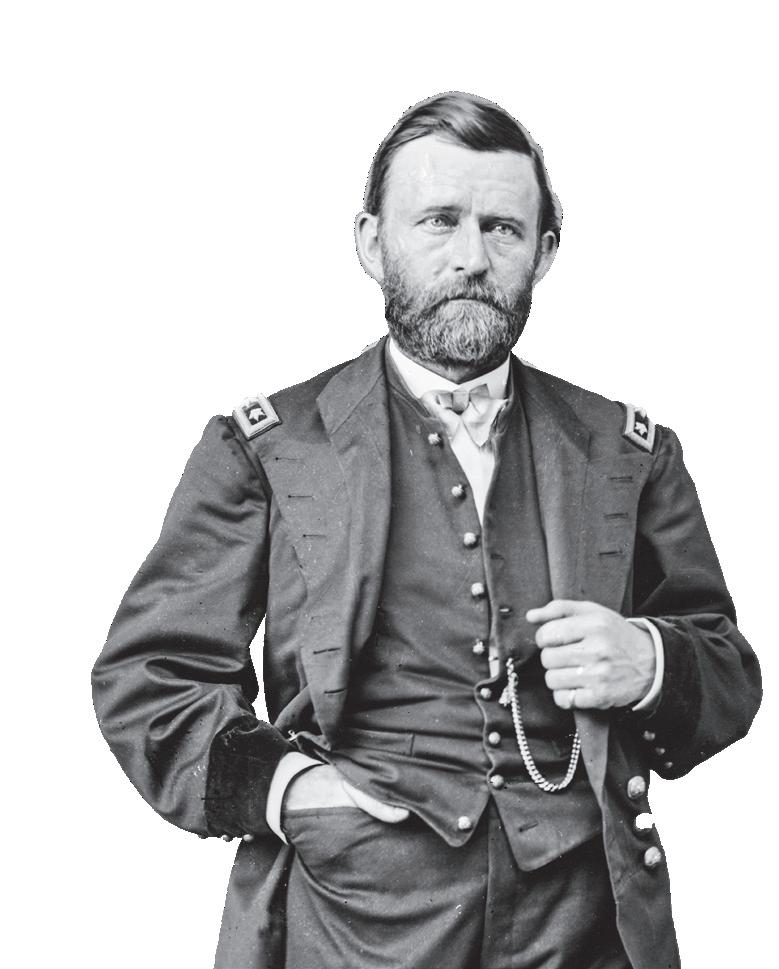

Mark your calendars for May 4-5, 2024. The show will be held in the same location, the Richland County Fairgrounds, located in Mansfield, Ohio.

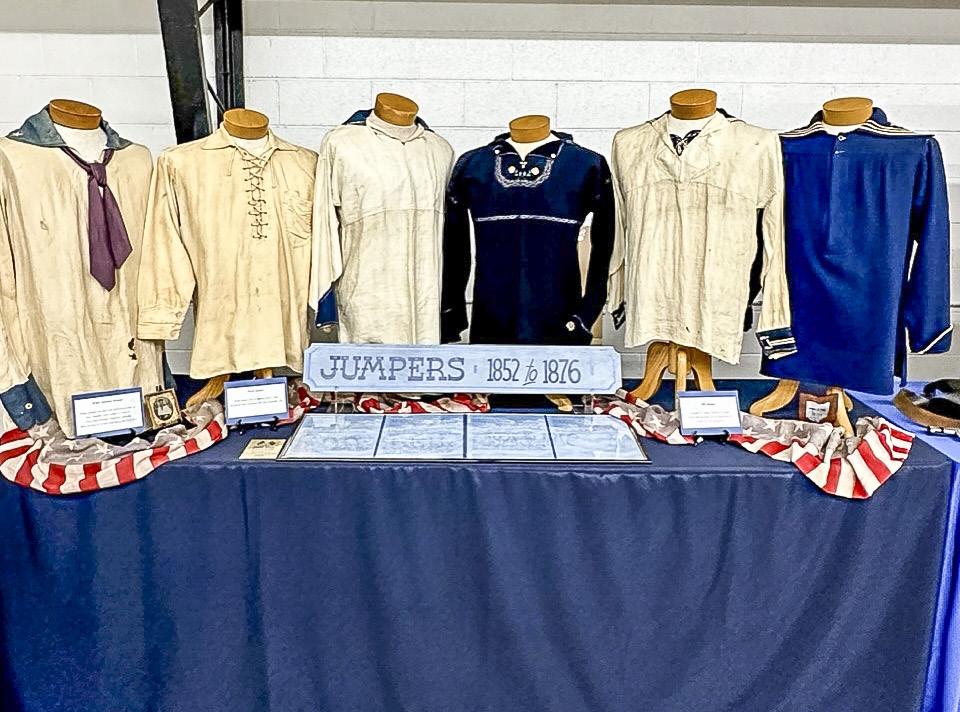
Visit us on Facebook – Ohio Civil War Show and find out more information and stay up to date at: ohiocivilwarshow.com.

4 CivilWarNews.com July 2023 4 July 2023 CivilWarNews.com
41st OVI Infantry Regiment.
Cathy Spencer’s, American Barrage Balloons in WWII.
Ulysses S. Grant Portrayed by E.C. Fields Jr., Ph.D. HQ: generalgrantbyhimself.com E-Telegraph: curtfields@ generalgrantbyhimself.com Signal Corps: (901) 496-6065 Facebook@ Curt Fields
Jerry Everts’ Tin Type Images display.
Abe Lincoln presenting Best of Show award to Tom McEvoy.
Tom McEvoy’s Best of Show award winning display, Abraham Lincoln Candidate to Canonized.
Want To Advertise In Civil War News? Email us at ads@civilwarnews.com Call 800-777-1862 CW N Vol. 46, No. 48 Pages, January 2020 $3.50 Civil War News America’s Monthly Newspaper For Civil War Enthusiasts Remembrance Day, 2019, Gettysburg President Lincoln was wrong–and visiting monuments.enactors; still impressive num-(Garry Adelman, American
Lynda Setty’s cloth
display
of Jumpers 1852 to 1876.
Kevin Kinney’s German Machine Guns 1938–1945.






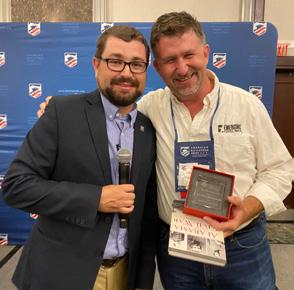

5 July 2023 5 July 2023 CivilWarNews.com CivilWarNews.com
Daryl Poe brought his 3-inch 1904 limber to the show.
There were plenty of for
tables full of antique weapons and artifacts. Here is Ed
Daryl Poe’s U.S. Model 1905 3-inch Field Gun.
sale
Knisley’s sale table.
Current Event Listings To see all of this year’s current events visit our website: CivilWarNews.com Want To Advertise In Civil War News? Email us at ads@civilwarnews.com Call 800-777-1862 48 Pages, September America’s Monthly Newspaper For Civil War Enthusiasts Bonaventure University’s Jandoli focused on the protection of Through educational programs of our nation’s history. for Outstanding Service at its 2022, in Mobile, Ala. Deputy Director Education collaborator with Mackowski, appreciate everything he brings teacher workshops his tours to passion shows through. You added his congratulations. Mackowski Receives Outstanding Service Award from American Battlefield Trust and unexpected honor for me,” opportunities over the years, and there for those opportunities. It’s celebrated its 20th year in 2022, country. While attendance, days of workshops, battlefield and tools more creatively and pivotal conflicts of America’s COVID necessitated suspension the trust spearheaded the creation At this year’s in-person Historical Events.” During this he presented workshop on the draft history. Past workshops teaching Civil War controversy Battlefield Trust from the trust’s Deputy Director of Education Kristopher D. White at “virtual field trip” for the trust on students. In September, he’ll host trust Charleston, S.C. professor in the Jandoli School winning Emerging Civil War He has authored, co-authored, appeared all the major Civil Trust, regional battlefield serves on the advisory board property on the Spotsylvania Deadlines for Advertising or Editorial Submissions is the 20th of each month. ads@civilwarnews.com Subscribe online at CivilWarNews.com
Richard Wolfe’s display about General Benjamin Franklin Kelley.
H Ohio from page 5
45th Annual
Aug. 12 & 13, 2023
Saturday 9–5
Sunday 9–3
Southeastern Civil War & Antique Gun Show





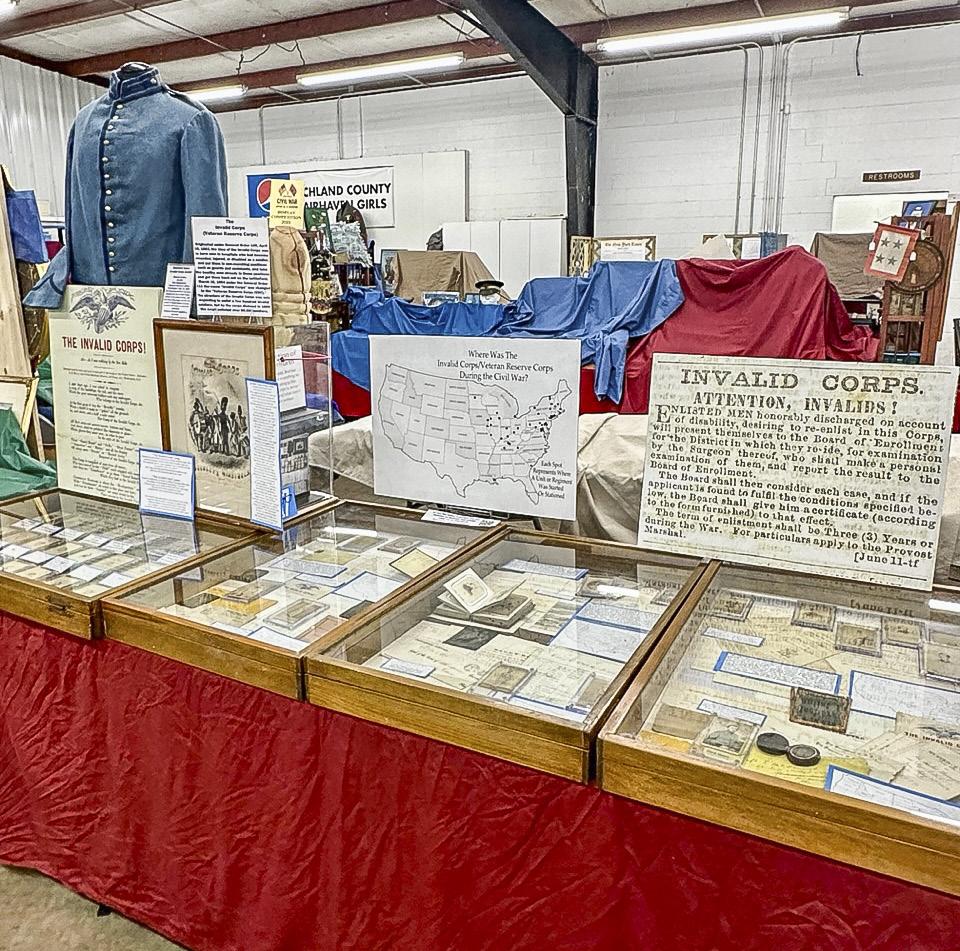
Cobb County Civic Center
548 S. Marietta Parkway, S.E., Marietta, Georgia 30060
Over 190 8 Foot Tables of:
• Dug Relics
• Guns and Swords
• Books
• Frameable Prints
• Metal Detectors
• Artillery Items
• Currency
Free Parking
Admission: $8 for Adults
Veterans & Children under 10 Free Inquires:

NGRHA

Attn: Show Chairman
P.O. Box 503, Marietta, GA 30061 terryraymac@icloud.com
The N-SSA is America’s oldest and largest Civil War shooting sports organization. Competitors shoot original or approved reproduction muskets, carbines and revolvers at breakable targets in a timed match. Some units even compete with cannons and mortars. Each team represents a specific Civil War regiment or unit and wears the uniform they wore over 150 years ago. Dedicated to preserving our history, period firearms competition and the camaraderie of team sports with friends and family, the N-SSA may be just right for you.

For more information visit us online at www.n-ssa.org.
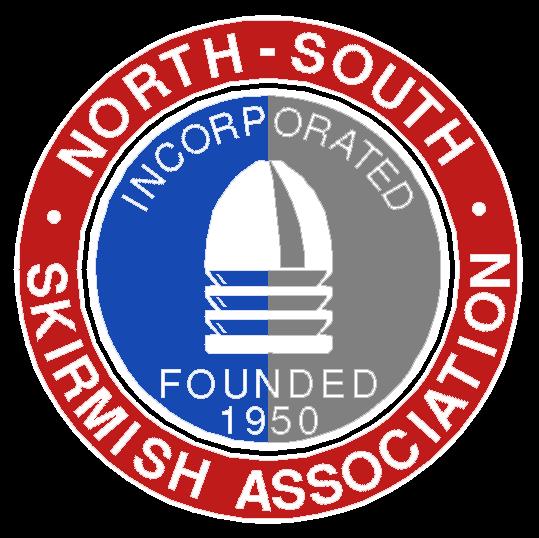
6 CivilWarNews.com July 2023 6 July 2023 CivilWarNews.com
Bret Schweinfurth Invalid Corps display.
Cliff Krainik’s display, Black Hawk: From Frontier Warrior to Cultural Icon.
Elizabeth Topping’s display of Sanitary Fairs memorabilia.
George
The





Children
Ticket
The virtual reality experience at the Gettysburg Lincoln Railroad StationTM Travel back to 1863. Meet some unlikely station occupants. Hear stories of their experiences during the aftermath of the battle. Witness their unforgettable journeys.
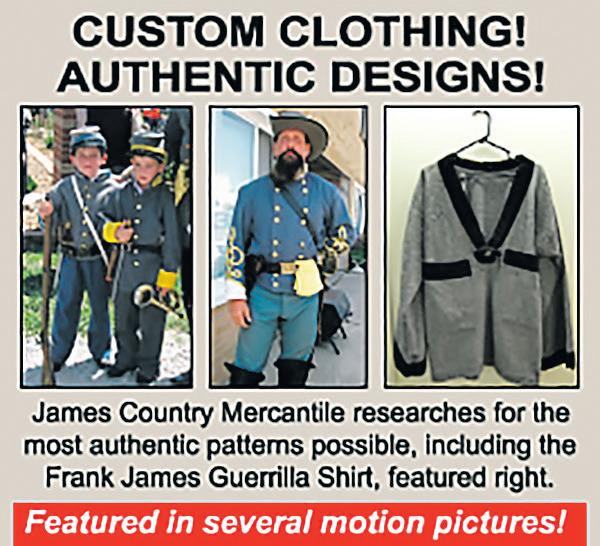

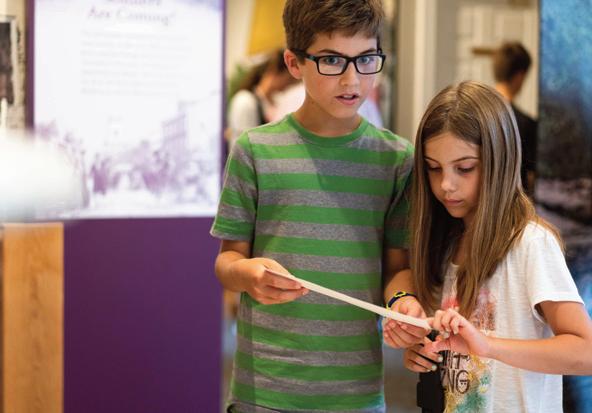


7 July 2023 7 July 2023 CivilWarNews.com CivilWarNews.com Want to Advertise in Civil War News? Email: ads@civilwarnews.com th Gettysburg National Military Park Museum & Visitor Center THE OFFICIAL START TO YOUR GETTYSBURG VISIT Proceeds from tickets and other purchases in the Museum & Visitor Center benet Gettysburg National Military Park and Eisenhower National Historic Site. See the Film Experience the Gettysburg Cyclorama. Explore the Museum Tour the Battleeld with a Licensed Battleeld Guide Connect with National Park Service Ranger programs Explore Eisenhower National Historic Site Visit the David Wills House and Gettysburg National Cemetery Journey to our historic sites and experiences For tickets and current hours, call 877-874-2478 or visit GettysburgFoundation.org THE GETTYSBURG FOUNDATION PRESENTS: Historic Sites and Experiences
Spangler Farm & Field Hospital
best surviving example of a corps-level eld hospital from the Battle of Gettysburg Living historians and docents make history come alive at this family farm suddenly transformed into a Civil War eld hospital in July 1863.
Season: Now through Aug. 13
through Sunday
Summer
Friday
of Gettysburg 1863®
most family-friendly interactive children’s history museum Explore the stories of Gettysburg through the experiences of children who lived here during the 1863 battle. Engaging rst-hand accounts and interactive exhibits bring the stories to life.
Gettysburg’s
to the Past –Unforgettable Journeys
For tickets and current hours, call 877-874-2478 or visit GettysburgFoundation.org GET TYSBURG explore Special Exhibit Now Open C O MMEMORATIVE EVENT gf-explore gettysbrug ad_CWN 0723.qxp_Layout 1 5/22/23 5:28 PM Page 1 19th CENTURY LIVING HISTORY! James Country MERCANTILE 111 N. Main Liberty, MO 64068 816-781-9473 • FAX 816-781-1470 www.jamescountry.com Ladies – Gentlemen Civilian – Military • Books • Buttons • Fabrics • Music • Patterns • Weapons Mens, Ladies and Children’s • Civilian Clothing • Military Clothing • Military Accessories • Accoutrements Everything needed by the Living Historian! Our Clothing is 100% American Made! The home of HOMESPUN PATTERNS© Visit our website at: HistoricalPublicationsLLC.com 1,000’s of Civil War Treasures! Plus! Revolutionary War • Spanish-American War Indian Wars • Mountain Men • Bowie Knife Collector Arms • Fur Traders • World Wars I & II Civil War & Military Show 9 - 4 / $10 • Early Buyer’s 8am / $25 • Free Parking September 23 2023 • Fall Show • Saturday
An Historical Snapshot 20th Massachusetts Volunteers: Henry Tremlett and Paul Revere
By Joan Wenner, J.D.
There were about a dozen men of the 20th Massachusetts Volunteers, the Harvard Regiment, who might be labeled as ”notable.” One is well known; one is far lesser known. Paul J. Revere fought at Gettysburg, and Henry Tremlett who did not, but was engaged in most large eastern battles.
The battle of Gettysburg raged over three pivotal days in high summer 1863 is arguably the key battle of the entire Civil War according to Iain MacGregor in his recent U.S. Civil War Battle by Battle, and numerous other authors and historians. Lee's invading Army of Northern Virginia, fresh from a dramatic victory at Chancellorsville, attempted to finally break the Union Army of the Potomac, now commanded by Meade, on its own territory to hopefully force a diplomatic solution.
By the beginning of the second day, the Union line resembled a
fishhook east and south of the town. Lee determined to drive them from their positions on Culps Hill, Cemetery Hill, and its southern ridge, with all-out assaults on both flanks; locations whose names were made famous by resolute assault and defense on July 2, 1863. "It ended in complete disaster with over half his command killed, wounded or captured--and with it the cause of the Confederacy fatally wounded." After Gettysburg, even the staunch North Carolinians for example, a growing majority had enough of war.
Much has been written about Paul J. Revere, the grandson of famed Revolutionary War dispatch rider Paul Revere. Colonel Revere, 20th Massachusetts, was part of Lander's Brigade, II Corps, Army of the Potomac. Lander’s Brigade was composed of the 19th and 20th Massachusetts, 7th Michigan, 42nd and 59th New York. At Gettysburg, the
brigade was part of General John Gibbon’s 2nd Division in Winfield Scott Hancock’s II Corps. The brigade was led by Colonel Norman Hall who had risen to brigade command by his service in the 7th Michigan. Revere, who was wounded and captured at Ball’s Bluff the fall of 1861, was mortally wounded on July 2, 1863, by artillery canister shot as the 20th helped stop the Confederate attack; he died two days later on July 4, 1863. Here we shine a spotlight on another member of the 'Harvard Regiment' as the enlistees were referred to on occasion. In addition to the Harvard-educated Revere and others from the college, the Twentieth included Henry Tremlett. Born January 1, 1833, Henry grew up in a mercantile family. Henry doesn’t seem to have attended Harvard but he did graduate from the prestigious college-preparatory Chauncey Hall School. Henry is said to have loved traveling and went on exotic foreign trips customary for affluent graduates to augment their experience and education. Henry noted he preferred that to university. The son of a prominent Boston shipping merchant, he gravitated toward a mercantile life. In 1855, age 22, he settled down long enough to enter the family business along with his older brother, doing business as Tremlett Bros., a company separate from their father's firm. Since their father was in poor health, a merger was orchestrated, making firm Deblois & Tremlett. The firm enjoyed much success but there was a storm brewing on the horizon, a war between the states.
Henry M. Tremlett enlisted July 10, 1861 for three years, or the way. As a captain, he was assigned to lead a company in the "Harvard Regiment" as it was called. Company command was awarded him because he had been an NCO in the Massachusetts Volunteer Militia before the war. Henry and his company fought at Ball's Bluff, then regiment served through the Peninsula Campaign before he went home recruiting during the summer of 1862.
During his recruiting efforts, he was reassigned to the 39th Massachusetts Regiment as its second in command. Most of his service over the next three years was in the 39th Massachusetts. Serving first as the regiment’s second in command, he reenlisted July 10, 1864, and was soon



8 CivilWarNews.com July 2023 8 July 2023 CivilWarNews.com
Lt. Col. Henry M Tremlett, 20th Mass Volunteers Infantry. (MOLLUS_ Mass_V93_4794.)
Paul Joseph Revere, grandson and namesake of Revolutionary War patriot Paul Revere.
Paul Joseph Revere. A different poise from the same photographer.
promoted to lieutenant-colonel. Along with his regiment, he spent the winter of 1862-63 in Poolesville, Maryland, guarding the Potomac River’s northern shore. During the Spring 1863, the regiment was assigned to the Washington, D.C., defenses until the Overland Campaign was underway. Leaving the capital, the regiment was assigned to Robinson’s Brigade, the Second Brigade, Second Division, V Corps, and participated in the battles around Richmond, before moving to the siege operations against Petersburg, Va. While leading the regiment during the siege of Petersburg, he was wounded January 5, 1865. Praised as "courageous," he died of the wound later during June 1865.



For a references to the 20th Massachusetts at Gettysburg, go to ArmyHeritage.org and see: "Isn't this Glorious! 20th Massachusetts Volunteer Regiment at Gettysburg’s Copse of Trees" by Edwin Root and Jeffrey Stocker, 2006. "Harvard's Civil War: a History of the Twentieth Massachusetts Volunteer Infantry," a text on the Twentieth, was published by University Press of New England, Hanover, NH, 2005. Another informative website is:walkbostonhistory. com + :nps.gov/places/20thmassachusetts-monument.htm.
Gun Works, Inc.

Thousands of blackpowder hobbyists and aficionados, from history buffs and re-enactors to modern hunters and competitive shooters, trust Dixie Gun Works for its expertise in all things blackpowder: guns, supplies, and accessories and parts for both reproductions and antique guns. Whether you’re just getting started or you’re a life-long devotee, everything you need is right here in the 2023 DIXIE GUN WORkS’ catalog.

9 July 2023 9 July 2023 CivilWarNews.com CivilWarNews.com – MAKER –LEATHER WORKS (845) 339-4916 or email sales@dellsleatherworks.com WWW. DELLSLEATHERWORKS.COM DIXIE GUN WORKS, INC. 1412 W. Reelfoot Avenue PO Box 130 Union City, TN 38281 INFO PHONE: (731) 885-0700 FAX: (731) 885-0440 EMAIL: info@dixiegunworks.com VIEW ITEMS AND ORDER ONLINE! www.dixiegunworks.com Major credit cards accepted FOR ORDERS ONLY (800) 238-6785 PROFESSIONAL SERVICE AND EXPERTISE GUARANTEED
TODAY! STILL ONLY $5.00! The tried-and-trusted choice of today’s blackpowder enthusiasts.
ORDER
Lt. Col. Henry M Tremlett, 20th Mass Volunteers Infantry. (MOLLUS_ Mass_V93_4795.)
The 20th Massachusetts Monument at Gettysburg.
Henry Tremlett, sergeant, U.S. Mass. Militia 1861. (MOLLUS_Mass_ V84_4229.)
Joan Wenner, J.D. is a longtime contributor, with a law degree, to Civil War News and other
history publications. Comments are welcomed at joan_writer@ yahoo.com
Taking the Oath: Alcohol Use in the Civil War



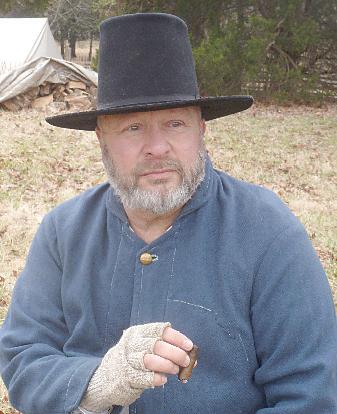
The subject of whiskey consumption in America during the Civil War-era is as well documented as any activity of the 1860s. In American society during the 1860s, the drinking of alcoholic beverages was seen in some quarters as a shameful but common habit, particularly in larger American cities. Perhaps the influx of Irish and German immigrants and their drinking customs contributed to that view. The Temperance movement oversimplified the matter of alcohol to the point where a person spoken of as “having no vices” might refer to as little in his character as “not drinking (alcohol), smoking nor chewing tobacco.” Temperance was not, as is sometimes thought, the campaign of rural backwaters; rather, it was on the cutting edge of social reform and was closely
allied with the anti-slavery and women’s rights movements in the North. 1860s women as a group were less likely to partake than men, at least in public. This was due to the attitudes of the time, Temperance, and related societal mores. However, there were fewer settings where decorum permitted a lady to partake of this form of refreshment.
Partaking of spirits was well documented among the American population. Some civilians were gulping hot grog in the winter, sipping mint juleps in the summer or downing smashes, Windsorcoolers, cobblers, skins, morning glory, Tom and Jerry, private smiles, corpse revivers, fiscal agents, four-forty-fours, Jersey lightning (applejack), monitor, swamp-angel, eye-opener, moustache-twister, egg noggs, gin-sling, timble doodle, stone fence, and other “saloon drinks.”
Americans in the 1860s made a grand ceremony of “taking the oath” a period term for liquoring up.

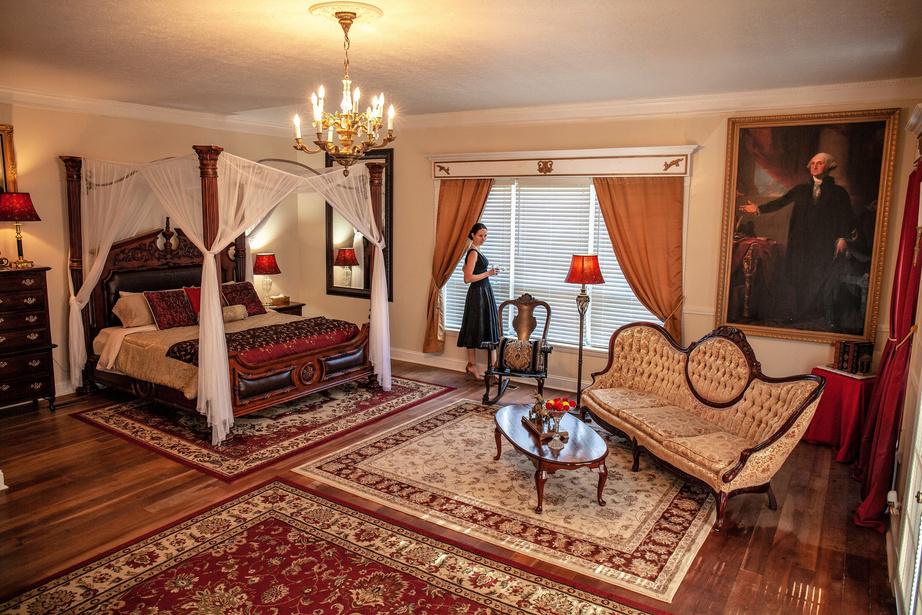
The vices of 1860s men were not limited to tobacco and gambling, and many enjoyed whatever whiskey or other alcoholic beverages they could obtain. One of the many period terms for the common grain-based beverages, was “John Barleycorn.” It comes from an English ballad of the same name; Barleycorn being the personification of the principal ingredients in whiskey. As with
any traditional folksong or ballad, there are a variety of versions with different interpretations. Robert Burns wrote a version in 1782 that is certainly not a condemnation of whiskey:
John Barleycorn was a hero bold, Of noble enterprise; For if you do but taste his blood, ‘Twill make your courage rise…
In most versions of the traditional ballad, regardless of previous vice, the last stanza usually concludes with a final nod to the necessity of “old demon” alcohol:
Now the Huntsmen he can’t hunt the fox
Nor so loudly blow his horn
And the Tinker he can’t mend his kettles or pots,
Without a little John Barleycorn.
Beer was not as uncommon
as the lack of period references would suggest and it was certainly well-known to soldiers of the era. “Ale” was an item of issue approved by the Continental Congress during the American Revolution period and continued to be issued as rations until the middle of the 19th century when it was replaced by coffee. In contrast with distilled spirits in the 1860s, beer was considered in a different category. It was an item of sustenance and in some cases nutrition. The stronger distilled spirits were enjoyed more for their inebriating qualities after the workday was done while beer drinking began early and went on throughout the day primarily to add calories and quench thirst.
The first hop flavored beers were brewed one thousand years ago in Europe and were often made in monasteries. The ration for the Benedictine monks was five quarts of beer per day. Ronald Sarasin noted in his article,

10 CivilWarNews.com July 2023 10 July 2023 CivilWarNews.com
Bealeton, Va. Noncommissioned officers’ mess of Co. D, 93rd New York Infantry. (Library of Congress)
Enlargement of the table from the group photo below.
Celebrate America’s History with Beer, that the beer ration on the Mayflower was a gallon per day for every man, woman, and child. This was not considered unusual because drinking water was not always potable. As a result, “They (Pilgrims) had hoped to sail further south, but due to a shortage of beer decided to land and settle in Massachusetts.”
While often called a “lager,” the most common beer may have been a stouter dark brew known as “porter,” as it kept from spoiling without refrigeration longer than lagers or pilsners. The term “lager” refers to the less common, low hop beer that was fermented naturally (45 days or longer) and requires colder temperatures. The term “pilsner” refers to the 1840s German pale gold lager beer. Lagers and pilsners reached their greatest popularity after the Civil War-era. Ales were also popular during the time period. Most references to beer drinking come from Northern men though not necessarily because Southern temperance, chivalry, or religiosity eliminated a Confederate’s partaking. The main factors were the North’s
Dinner party outside tent, Army of the Potomac headquarters (Library of Congress) greater access to raw materials, transportation, and the number of brewers who naturally settled in the cooler regions of what was then termed the “Northwest,” but what we now call the “upperMidwest.” The Confederacy did have some breweries. One of the best known was at Chimborazo Hospital, located in Richmond. It not only boasted a large bakery, but it also helped recuperation of the wounded by means of its 400 keg capacity brewery. In one period account, a soldier on leave in New York City noted that:

“I am afraid to say how much Bavarian beer was disposed of... the more we drank the thirstier we seemed to get: In fact, no one who has not seen Germans drink beer can form any adequate idea of the quantity they consume. Bavarian beer is, of course, not nearly so strong as the English beer; but is still a very agreeable drink, and tastes much like pale ale.”
Why was lager beer less common in the 1860s? Lager beer requires consistently cold temperatures for brewing.

is storehouse. Hence this kind of malt beverage derives its name, the variety of it brewed for summer drinking, especially, being stored away for some months before it is considered fit for use... As in Bavaria, so it is here and there is hardly a street, lane, or alley in the city in which the lager beer saloon, in some of its various forms, is not to be found.”
Of course, that Southern center of debauchery known as New Orleans, was also famous for absinthe, had several breweries but fell into Union hands early in the Civil War. Ginger beer was also popular in the South. The principal predecessors of ginger beer were mead and a spiced version called Metheglin, which date back to the early 1600’s in colonial America, and a thousand years in Europe and Scandinavia. Metheglin was a naturally carbonated, yeastfermented honey beverage, that often included spices, such as ginger, cloves, and mace. It was one of the most popular and longest surviving beverages from the earliest colonial days in America.


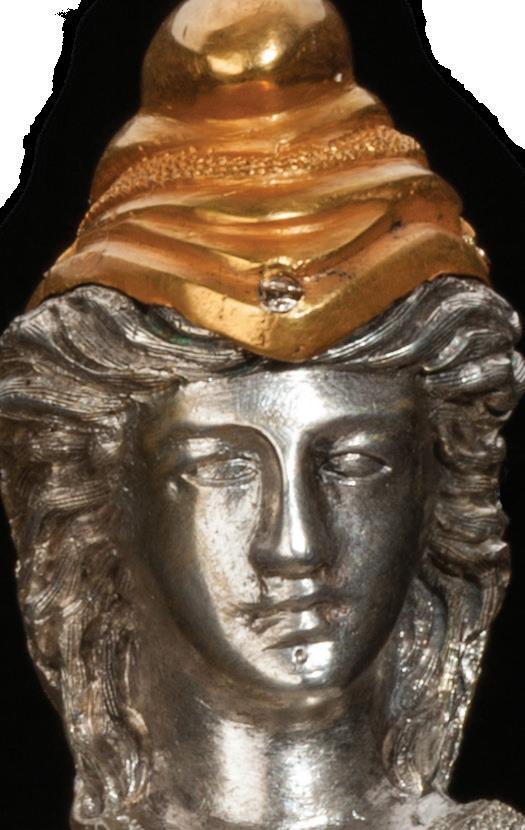
Brandy is usually a distilled form of wine, or at least

produced from grapes, but the term was also known to include “applejack,” a freeze distilled hard cider. Applejack was popular during the Civil War-era. It was also called “Jersey lightning” dating from the colonial period. George Washington was said to have asked for the recipe in 1760 and introduced it to the Virginia colony soon thereafter. Brandy was substituted in period saloon “receipts” when whiskey was in short supply.
Craig L. Barry was born in Charlottesville, Va. He holds his BA and Masters degrees from UNC (Charlotte). Craig served The Watchdog Civil War Quarterly as Associate Editor and Editor from 2003–2017. The Watchdog published books and columns on 19th-century material and donated all funds from publications to battlefield preservation. He is the author of several books including The Civil War Musket: A Handbook for Historical Accuracy (2006, 2011), The Unfinished Fight: Essays on Confederate Material Culture Vol. I and II (2012, 2013). He has also published four books in the Suppliers to the Confederacy series on English Arms & Accoutrements, Quartermaster stores and other European imports.
Refrigeration was a post-Civil War technology and the temperatures only got cold enough for brewing lager beer a few months out of the year. Ice harvesting and deep cellars were used to extend the necessary conditions for brewing production. In contrast, German style lager was common in the larger cities such as St Louis with substantial German immigrant populations. The following account dates from The Illustrated London News dated December 3, 1864, and suggests lager beer was quite popular there among German civilians, just as it was in America.
“To appreciate the great German element in the social and political life of America requires,” says our New York correspondent, “a treatise on lager beer.” Lager beer proper is composed of malt, hops, and water, and its excellence is said to depend much upon the quality of the spring from which the water is obtained. It is lighter than the beer of England, and has a bitteraromatic flavour, very grateful to the palate… One of the meanings of the German word ‘lager’
11 July 2023 11 July 2023 CivilWarNews.com CivilWarNews.com HistoricalPublicationsLLC.com Buying and Selling The Finest in Americana 11311 S. Indian River Dr. • Fort Pierce, Florida 34982 770-329-4985 • gwjuno@aol.com George Weller Juno
Brandy Station, Va.
“We Were Obliged to Retire:” Bartlett’s Brigade’s May 5, 1864, Wilderness Experience
By Tim Talbot
Depending on a host of circumstances, the fighting that unfolded at the Battle of the Wilderness produced mixed results in terms of gained ground. As with battles fought primarily in open fields, maintaining connections with brigades operating on one’s flanks was key, as was receiving reinforcements when pressed. The broken terrain of the Wilderness and its mishmash of dense thickets and small cleared farm openings exacerbated combat situations that were challenging enough in ideal conditions. On May 5, 1864, Brig. Gen. Joseph Bartlett’s V Corps regiments encountered some of these
issues that contributed toward a measure of early success melting away into chaos, and ultimately a withdrawal back to their starting points.
Fully composed, Bartlett’s Brigade in Charles Griffin’s Division, consisted of the 1st and 16th Michigan, 18th Massachusetts, 20th Maine, 83rd and 118th Pennsylvania, and 44th New York. These regiments were very much undermanned due to earlier losses. Detailed to guard the brigade wagon train on May 5th, the 16th Michigan did not get into the battle.

The brigade’s regiments marched from their Culpeper County camps on May 3, and crossed the Rapidan River at Germanna Ford on the morning of May 4. The brigade reached the Wilderness that afternoon and camped. The following morning, May 5, orders came to move forward and engage Confederates in their front, largely Gen. John Jones’ Virginia Brigade, partially covered by woods on the west end of Saunders Field.
The 1st Michigan served as the brigade’s primary skirmishers. Fanning out on the left side of the Orange Turnpike, their right rested near the road. Ordered to advance, the skirmishers “on a double-quick over an open, but broken piece of ground,” went forward “driving the enemy’s skirmishers,” reported
Lt. Col. William Throop. Soon the Michigan men received “so severe a fire that we were obliged to retire from the woods and fall back to our supports . . . our loss was very heavy,” Throop explained.
Bartlett’s first battleline behind the skirmishers included from left to right, the 18th Massachusetts, 83rd Pennsylvania, and 44th New York. “In this order an advance was made at double-quick across the field, driving in the enemy’s skirmishers,” Lt. Col. DeWitt McCoy of the 83rd reported. The historian of the 83rd remembered that they, “with bayonets fixed, ran forward with such a yell as must have made the Johnnies realize for once . . . ‘hell broke loose.’” This strong movement broke Jones’ Confederate line. During the pursuit, Col. Orpheus Woodward of the 83rd received a wound below the right knee that later required amputation. Bartlett’s regiments outpaced Sweitzer’s Brigade on the left and Ayers’ Brigade to the right, so they halted and awaited orders.
During the assault across Saunders Field’s open ground and the woods further west, the 18th Massachusetts captured about 40 prisoners, who they escorted to the rear. They received orders to “fall back on account of the failure of the right [Ayers] to drive the enemy,” reported Lt. Col. William White of the 18th. During the withdrawal, Col. Joseph Hayes received a painful but not fatal bullet wound to the head. When they returned to improvised works they dug earlier, Maj. [Thomas] Weston suffered “so severe an attack of sunstroke as to render him temporarily insane. . . .” In addition to Col. Hayes and Lt. Timothy McCarty (both wounded), the Bay State regiment suffered five killed and 14 wounded.
The 44th New York Infantry’s regimental history explains they were also in Bartlett’s first line. Placed to the right of the 83rd Pennsylvania, which probably put them on an across the north side of the Orange Turnpike, they went forward unsupported. Maj. Edward Knox reported that “After about one-half hour’s hard fighting we were relieved, and fell back about half a mile and took position behind breast-works.”
Regardless of Knox’s brief battle report, the 44th lost 12 killed and 48 wounded.
The 20th Maine and the 118th Pennsylvania made up Barlett’s second line, with the Maine men on the right. Maj. Ellis Spear of the 20th Maine reported the regiment pressed forward about three-quarters of a mile, but coming to a second opening in
the woods, halted after taking heavy fire from the front and left. Noticing he was unsupported on the right, Spear threw out skirmishers and refused his left. But “pressed from the right and left and in front, we fell back to our original works,” he explained. The 20th Maine managed to capture 35 Confederates, but lost 10 men killed, 58 wounded, and
16 missing.
Lt. Holman Melcher’s May 5, 1864, experience illustrates the confused fighting during Barlett’s attack. The young 20th Maine officer and a group of 17 comrades advanced through an opening created by the assault and advanced so far they lost all connection with their regiment or any other Federals. Worried

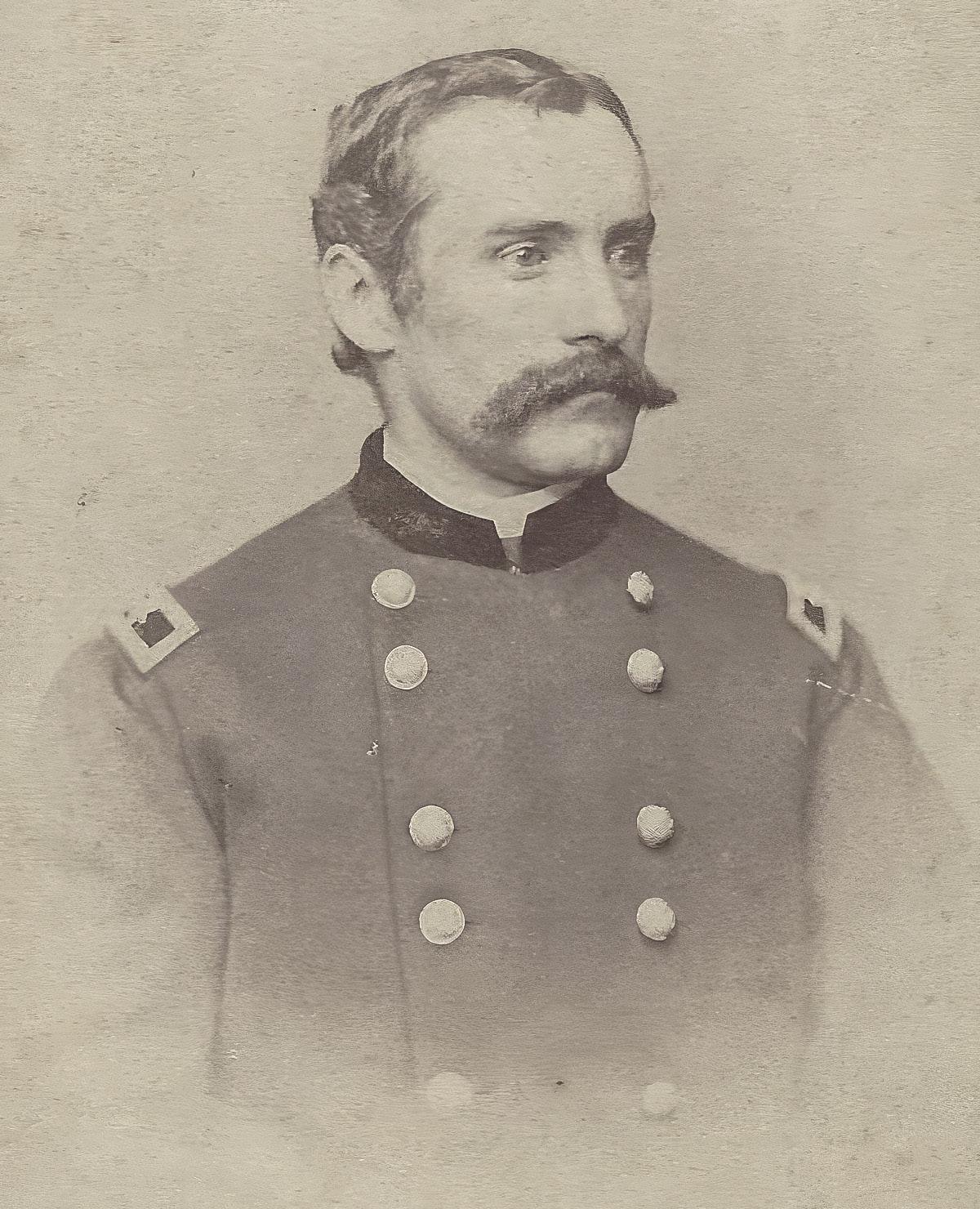
Advancing

12 CivilWarNews.com July 2023 12 July 2023 CivilWarNews.com
too far into Confederate territory, the 20th Maine’s Lt. Holman Melcher (pictured here) and 17 comrades fought their way back through to Union lines at the Wilderness. (Public domain)
Col. Joseph Hayes, 18th Massachusetts, was wounded in the head during the May 5, 1864, fighting. (Public domain)
Brig. Gen. Joseph J. Barlett survived a fearful tumble after having his horse shot and rolling over him during the Battle of the Wilderness. (Library of Congress)
they would end up captured, or thought cowards who ducked the fight, Melcher believed “Our only chance was to cut our way through.” Finding a lightly defended place, the small group attacked from behind. The sudden surprise nabbed some Confederates as prisoners while others fought Melcher’s little group hand-to-hand. Two of Melcher’s men were killed, and
several wounded, but they ended up capturing 32 Confederates, who were hustled to the Federal lines. Melcher’s men turned over the prisoners and located their regiment.
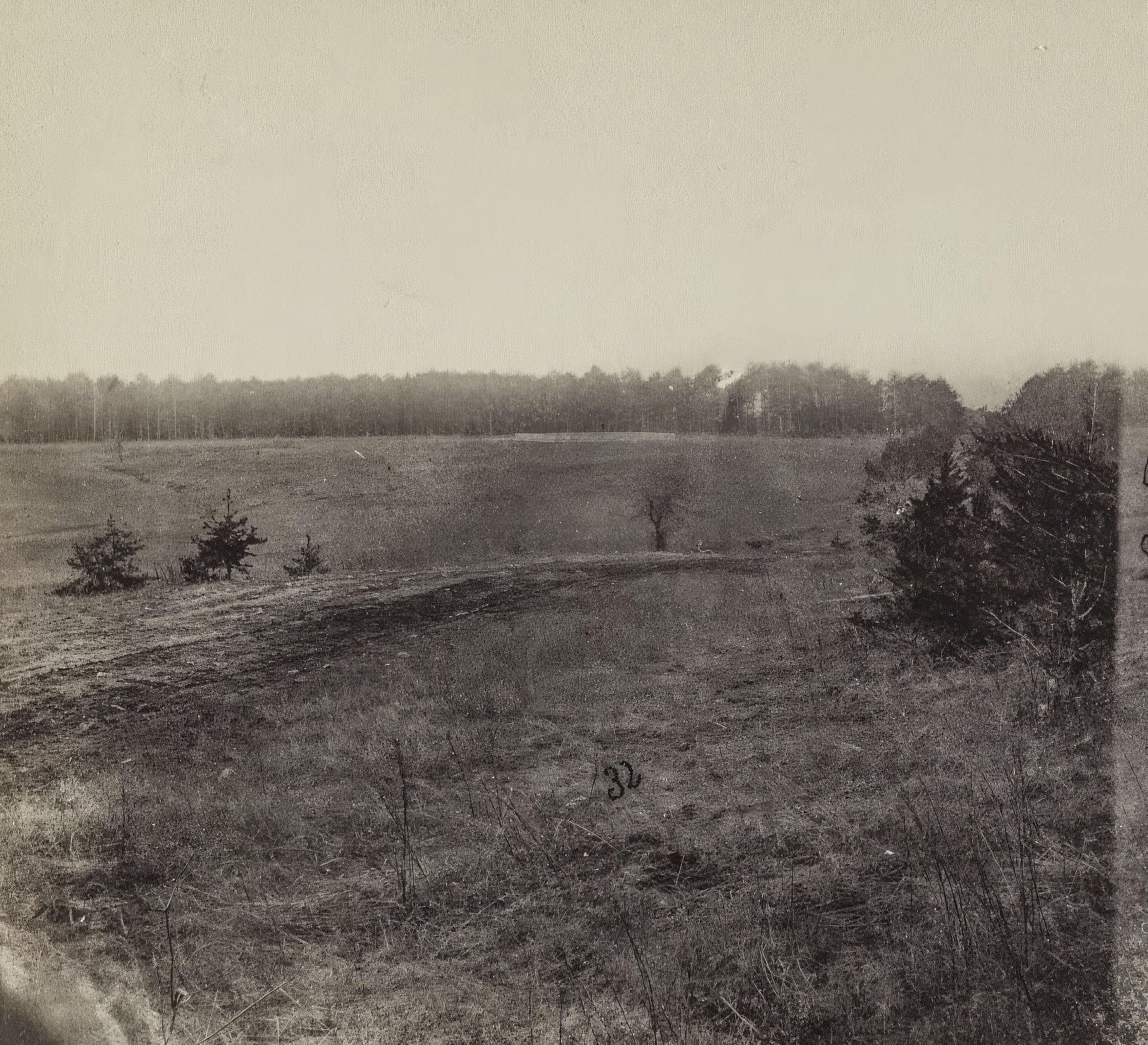
Lt. Col. Charles Herring of the 118th Pennsylvania also gave a brief official report. He noted that “after charging and engaging them, they were found on the flanks, pressing to our rear;

the regiment returned with the brigade by order.” The regiment’s commander, Col. James Gwynn, was wounded in the action. In addition, two men were killed, 26 wounded, and 27 missing.
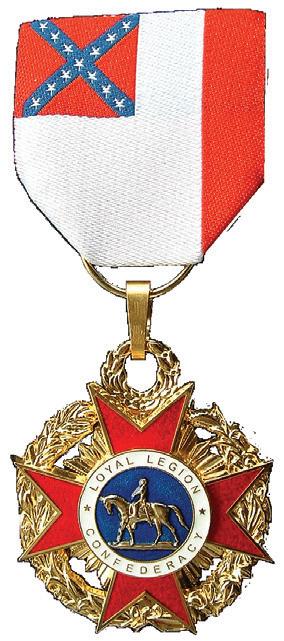
Bartlett himself barely escaped May 5 alive. In the chaos of the battle, the general received a facial wound and had to make a mad dash back toward his lines on horseback only to have his

steed shot and tumble over on him. Amazingly, he withstood the crushing blow and walked off the field.
Bartlett’s regiments, not being formally engaged, spent most of May 6, 1864, in support roles. However, the 118th Pennsylvania and 18th Massachusetts reported being shelled by Confederate artillery, and the 1st Michigan noted harassing enemy sharpshooters. More difficult combat for these regiments was just ahead in the coming weeks and months at Spotsylvania, Petersburg, and on to Appomattox.
Tim Talbott is the Chief Administrative Officer with the Central Virginia Battlefields Trust. CVBT has helped save over 220 acres of Wilderness battlefield land. The mission of CVBT is to preserve land associated with the four major campaigns of: Fredericksburg, Chancellorsville, Mine Run, and the Overland Campaign, including the Wilderness, and Spotsylvania Court House. To learn more about this grassroots preservation non-profit, which has saved over 1,700 acres of hallowed ground, please visit: www.cvbt.org.
13 July 2023 13 July 2023 CivilWarNews.com CivilWarNews.com Loyal Legion of the Confederacy CSA National Defense Medals & other banned internet items Civil War Recreations WWW.CWMEDALS.COM cwmedals@yahoo.com 1 Smithbridge Rd., Unit 61, Chester Heights, PA 19017 Visit our website at: HistoricalPublicationsLLC.com e Artilleryman is a quarterly magazine founded in 1979 for enthusiasts who collect and shoot cannons and mortars primarily from the Revolutionary War, Civil War to World War II. Now expanded and fully illustrated in rich color throughout the entire magazine. 520 Folly Road, Suite 25 PMB 379, Charleston, SC 29412 • 800-777-1862 • mail@artillerymanmagazine.com www.ArtillerymanMagazine.com The Artilleryman Magazine FOUR INCREDIBLE ISSUES A YEAR
On May 5, 1864, Bartlett’s Brigade fought across the ground shown in this period photograph of Saunders Field at the Wilderness. (Library of Congress)
This modern photograph of Saunders Field provides a view from the Confederate perspective. (Tim Talbott)
Play a Part in Preserving 24 acres across Tennessee and Kentucky
Second only to Virginia, the state of Tennessee saw the greatest number of battles throughout the Civil War, but President Lincoln saw Kentucky as so decisive he said, “I think to lose Kentucky is nearly the same as to lose the whole game.” The Trust has launched a campaign to protect four Civil War sites in the Volunteer and Bluegrass states, totaling 24 acres.
The sites the Trust is targeting carry heavy historical significance but are currently eyed by developers. To protect these hallowed grounds, the Trust needs to raise $118,000 to help unlock $13.75 million in federal, state, and local matching funds. Thankfully, five different preservation-minded allies have also provided key matching funds, positioning the Trust to present donors with a $117-to-$1 match.
Although not as widely known as Gettysburg or Antietam, the Battle of Franklin saw 28,000 Union soldiers under the leadership of Gen. John Schofield hold out against Confederate Gen. John Bell Hood. After long and arduous fighting, Hood’s army was crippled at Franklin; the Confederate general lost 20 percent of his men, allowing the Federals to move toward Nashville. Then, at the Battle of Nashville, the Union victory
completely obliterated Hood’s Army of Tennessee and effectively ended the war in Tennessee. There, the Trust has an opportunity to save two of the most threatened acres at Fort Neeley, a well-preserved Union fort in downtown Nashville.
In Kentucky, the Battle of Belmont was the first true test for battlefield commander Gen. Ulysses S. Grant but garnered an inconclusive end to which both sides claimed victory. Although the battle was fought on the Missouri side, the troops were positioned in Kentucky, on the same tract where the Trust is seeking to preserve land.
Lastly, the Battle of Richmond saw counterbattery artillery fire that lasted for two hours. Here, 20 acres nearly became acres of housing development that would have erased the history of the 1862 battle forever.
To learn more about this preservation opportunity, visit https://www.battlefields.org/ give/save-battlefields/helpus-save-hallowed-groundtennessee-and-kentucky
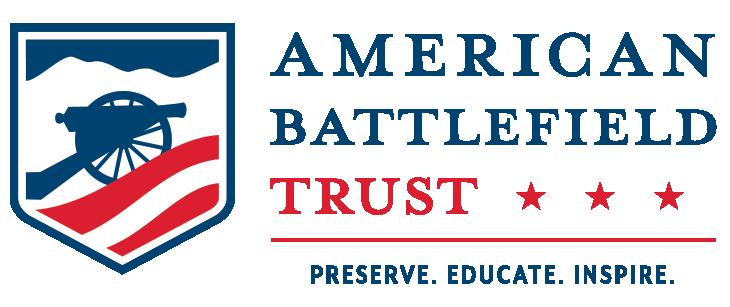
Nashville Leaders Recognized for Efforts at Fort Negley
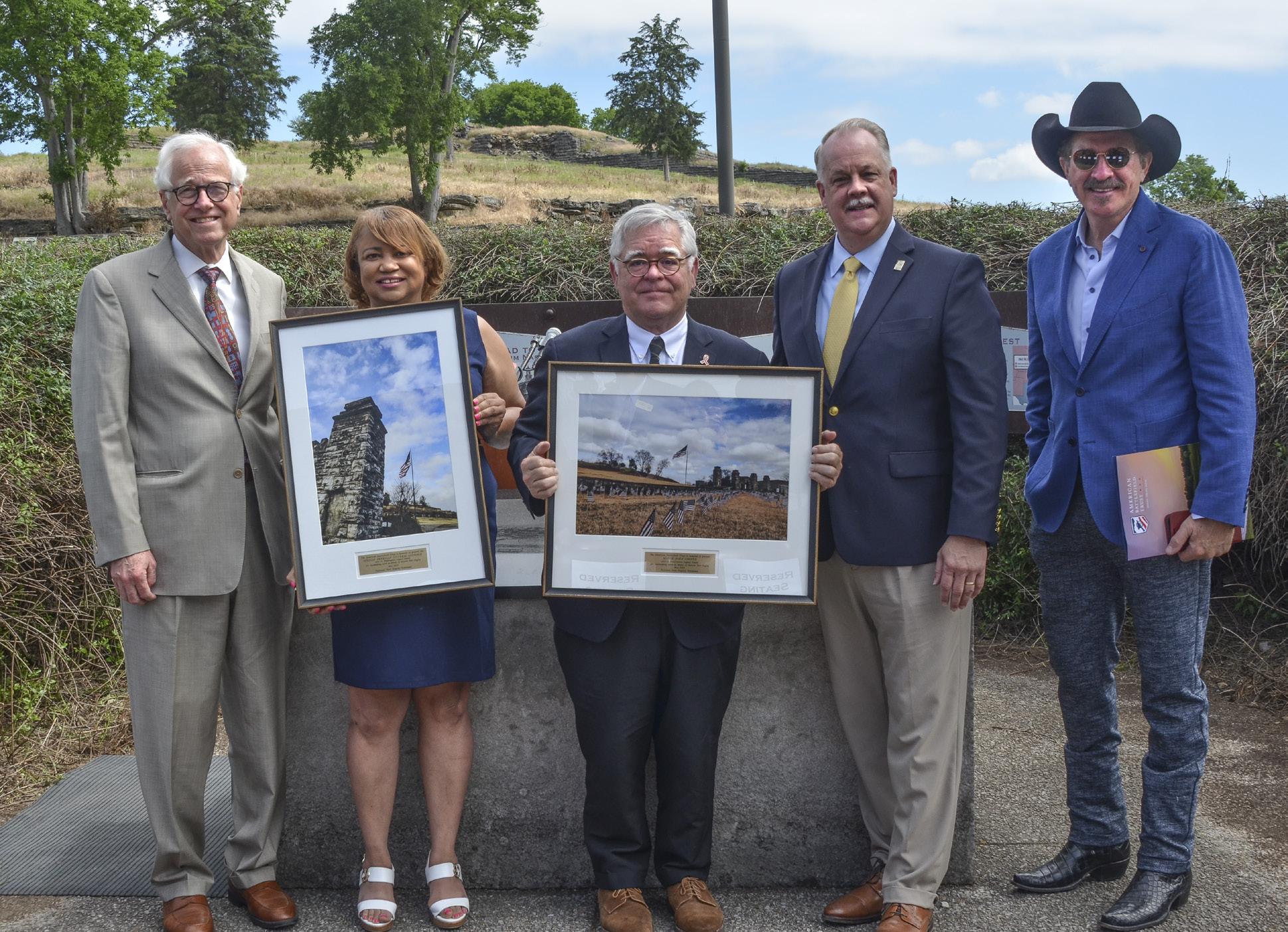
Although it dates to the Civil War, Nashville’s Fort Negley did not play a decisive role in the city’s namesake engagement during that conflict. Instead, it has faced 21st-century battles as the focus of controversial plans that pitted conflicting visions for
a growing city against an iconic place integral to its past. Gathered on those heights overlooking the city, at the outset of its Annual Conference in May, the Trust presented both Mayor John Cooper and the African American Cultural Alliance of Nashville with its prestigious Preservation Legacy Award in recognition of their stalwart commitment to the site’s integrity. The announcement followed on the heels of a Metro Nashville Council meeting that passed a resolution “affirming the protection of Fort Negley” and pledging the site will now be devoted to “educational purposes, archeological research, historic interpretation, and public park uses and shall not be developed for any purpose other than those proposed in the 2022 Fort Negley Master Plan.”
More recently, concerns arose when the neighboring Adventure Science Center announced plans to plant an arboretum on land it leases from Metro Parks. This
was an area where archaeological surveys indicated possible unmarked Civil War-era graves. The African American Cultural Alliance was at the forefront of efforts, supported by the Civil War history and preservation communities, to negotiate a compromise solution. Although the damaging proposals were circumvented, those threats and the response to them elevated public appreciation for and understanding of Fort Negley’s place in Nashville’s historical narrative. It is this type of lasting change that the Trust honors with its Preservation Legacy Award.
Vote in Orange County Approves Mega-Development Near the Wilderness
Despite major public opposition, the Orange County Board of Supervisors voted in favor of a devastating rezoning proposal that would impact core Wilderness Battlefield land and threaten the nearby Congressionally authorized boundary of Fredericksburg and Spotsylvania Battlefields National Military Park. The decision was reached in one hearing session with little debate and public discussion.
At 2,602 acres, the “Wilderness Crossing” proposal is the largest rezoning in the county’s history. It would severely impact the rural region, turning it into a
congested area. The residential and commercial development is proposed to consist of more than 200,000 square feet of mixeduse commercial development, 5,000 new residential units, and over 730 acres of data centers and distribution warehouses. These would inevitably disturb adjacent Wilderness Battlefield land negatively. Moving forward, the Trust and its allies are considering all available options to best advocate and protect the threatened battlefield. To stay tuned in to recent news at the Wilderness, visit www.battlefields.org/ preserve/speak-out/fightcontinues-wilderness-battlefield
The Trust is Gettysburg Bound for 2024 Annual Conference
The clock is ticking; in less than one year, hundreds of Trust members will descend on Gettysburg for the organization’s 2024 Annual Conference. From April 25–28, they’ll enjoy tours, talks and other special gatherings at an event designed to showcase both the battlefield and the community that surrounds it. Over the past two decades, the Trust has saved just shy of 1,240 acres associated with the three day Battle of Gettysburg. Members have invested millions in land acquisition, landscape restoration, and the development of groundbreaking interpretive

14 CivilWarNews.com July 2023 14 July 2023 CivilWarNews.com
Franklin Battlefield in Franklin, Tenn.
Photo by Mike Talplacido.
The American Battlefield Trust presents the African American Cultural Alliance and Mayor John Cooper with its Preservation Legacy Award for their work on preserving historic Fort Negley. From left to right: Cyril Stewart, President of Friends of Fort Negley Park; Jeneene Blackman, CEO of the African American Cultural Alliance; John Cooper, Mayor of Nashville; David Duncan, Trust President; Country Music Star Kix Brooks.
Photo by Melissa A. Winn.
technologies to bring the battlefield to life.
A pre-registration mechanism for the event is now live, ensuring interested attendees first notice of tour options and other key milestones in the countdown, as well as provide a way to suggest personal favorites and other can’t-miss spots. The Trust is committed to working with a variety of local businesses and vendors to help provide lodging, transportation, food and other elements.
Trust Highlights
441 Historic Acres Saved Across Four States during “Victory Week”
During its third annual “Victory Week,” the Trust noted that 441 acres of hallowed ground across eight properties on five different battlefields associated with the Civil War’s Eastern and Western Theaters have been deemed
“preserved forever.” Included in this mass accomplishment are projects at Antietam, Md. (one acre), Belmont, Ky. (one acre), Chattanooga, Tenn. (eight acres), Mill Springs, Ky. (239 acres), and Upperville, Va. (190 acres).
Taking place amidst National Preservation Month in May, Victory Week provides an opportunity for the Trust to celebrate its success by sharing a diverse roster of preserved properties, and exercise transparency among its membership by detailing the steps taken to reach the status of “victory” on such properties.
The Trust’s use of the term “victory” signifies the conclusion of a long and arduous process to save, and often restore, battlefield acreage. The process includes confirming historic actions that unfolded upon the pinpointed soil, negotiating with landowners, and performing full due diligence, consulting local groups and decisionmakers, hunting down all possible funding

sources and sharing preservation opportunities with donors, then finalizing the legal transaction and having the full array of funding sources (grants, partner pledges, donor contributions) in hand.
Learn more about Victory Week 2023 at www.battlefields. org/victory-week-2023
Know a Teen That Loves American History?
Youth with a hunger for history and a penchant for preservation are encouraged to apply to the American Battlefield Trust’s Youth Leadership Team for the 2023-2024 school year. This competitively selected group of



high schoolers, aged 15-18, serves as the youth face and voice of the leading battlefield preservation organization, inspiring a love for America’s historic treasures through efforts spanning history education, preservation and visitation. An outstanding leadership opportunity with a historical twist, the program is accepting applications until July 1, 2023.
Learn more about the program online at www.battlefields.org/ youth-leadership-team
15 July 2023 15 July 2023 CivilWarNews.com CivilWarNews.com
Chattanooga Battlefield in Lookout Mountain, Tenn.
Photo by Buddy Secor.
Youth Leadership Team members take a tour of the Antietam Battlefield with Trust Chief Historian Garry Adelman. Photo by Melissa A. Winn.
Trust President David Duncan gathers with a crowd of Gettysburg partners at Lee’s Headquarters to announce the 2024 annual conference location.
48 E. Patrick St., Frederick, MD. 301-695-1864 / civilwarmed.org Divided by Conflict. United by Compassion.
Photo by Melissa A. Winn.
A Grand Sight to Witness
Longstreet was “sitting on his horse like an iron man with his spyglass to his eye, coolly watching the effect of our shots. Limbs of trees fell and crashed around him, yet he sat as unmoved as a statue.” – C.S. Capt. Decimus et Ultimus Barziza, 4th Texas Infantry
On July 2, 1863, the second day of the Battle of Gettysburg, Penn., Gen. Robert E. Lee was sitting under a tree discussing the tactical situation with his generals before dawn. Gen. James Longstreet opposed a tactical offensive due to the Confederates’ finite number of men; he wanted to wait for Gen. George Pickett’s Division to arrive before launching any major attack. “I never like to go into battle with one boot off,” Longstreet remarked.

The Army of Northern Virginia had a successful first day and wanted to continue the momentum. Lee ordered
an assault on the Federal left with divisions from generals James Longstreet’s 1st Corps and Ambrose Powell Hill’s, 3rd Corps. Longstreet would borrow Gen. Richard Heron Anderson’s Division to replace Pickett’s. Lee stated, “The enemy is here, and if we do not whip him, he will whip us.”
Lee tasked Capt. Samuel Johnson, “to reconnoiter along the enemy’s left and return as soon as possible.” Johnson reported that the roads to Cemetery Hill and Little and Big Round Tops were clear of Federal troops. Gen. Lafayette McLaws’ Division would lead the attacking force, which moved under orders “not to display the colors as we were supposed to be in ambush.”
At Herr Ridge, Gen. Joseph Kershaw spotted Federal signal flags on Little Round Top. Moving forward would reveal the huge Southern column to the Federal lookouts. Longstreet ordered a countermarch, a complicated maneuver. To maintain the order in which they had marched that day, the men at the head of the
column would have to peel off along the right and left, face to the rear, and resume leading the march.
About 3:30 p.m. the Confederates cleared the woods on the edge of Seminary Ridge and were greeted by Federal fire. “The view astonished me,” wrote McLaws, “as the enemy was massed in my front, and extended to my right and left as far as I could see.” Kershaw’s Brigade immediately positioned themselves behind a stone wall paralleling the Emmitsburg Road. On their left was Gen. William Barksdale’s Mississippi Brigade; Col. H.G. Cabell’s eighteen cannon rumbled in and soon began firing. Gen. John Bell Hood’s Division were behind them on their right rear.
The fire came from U.S. Gen. Daniel Sickles’ III Corps positioned on farmer Sherfy’s peach orchard 600 yards away, occupying a key location in Lee’s attack plan. Nationally known, Sickles was “loved more sincerely, and hated more heartily, than any man of his day.”
The former New York lawyer, diplomat, U.S. Congressman, and philanderer came from a wealthy family, had the character of “one of the bigger bubbles of scum,” and the people skills of a confidence man.
In 1859, Sickles shot and killed his wife’s lover, Philip Barton Key II, the son of Francis Scott Key, author of “The StarSpangled Banner.” In the first use of the temporary insanity defense, future Secretary of War Edwin Stanton argued that Sickles was driven temporarily insane by his wife’s infidelity. He was acquitted. The public was more outraged that Sickles forgave and reconciled with his wife.
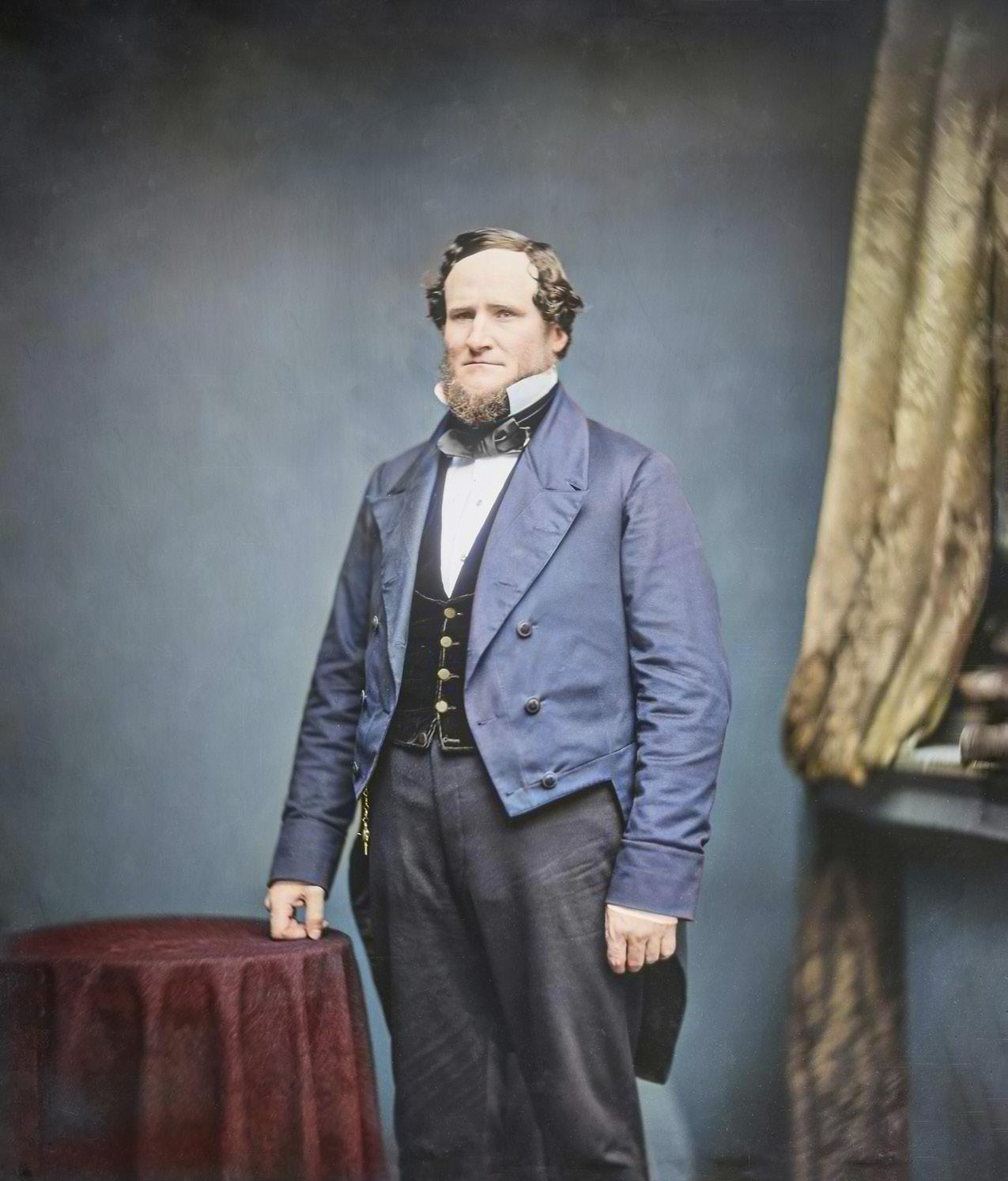
Sickles, a Democrat, had not voted for Lincoln but supported the Union cause by recruiting the five regiment “Excelsior Brigade.” Needing bi-partisan support, Lincoln promoted Sickles to brigadier general. At Gettysburg, Sickles was the only non-West Point corps commander in either army.
Sickles considered his assigned position in the Federal “fishhook” line “a low marshy swale.” Sickles repeatedly appealed to Gen. George Meade, commanding the Army of the Potomac, to move his divisions three-quarters of mile west as far as the Emmitsburg Road and Sherfy’s peach orchard to gain the advantage of “commanding ground.” Having received what he considered tacit approval, Sickles marched 10,000 men to the peach orchard with flags flying and drums beating. It was “a grand sight to witness this little
corps of two divisions gallantly move on the advance,” wrote an officer.


Under heavy fire Meade rode out to Sickles’ position, a half a mile in front of the army, and vulnerable to fire from two sides and well “beyond supporting distance.” Gen. Andrew Humphreys’ Division on the right flank was completely exposed. On his left, and also exposed, Gen. David Birney’s Division occupied the Peach Orchard, stretching past a wheat field to Devil’s Den and the Plum Run Valley beyond.
Without realizing it, Sickles had imperiled the entire Federal Army. In the ensuing discussion Meade pointed out, “this is in some respects higher ground than that to the rear; but there is still higher ground in front of you, and if you keep on advancing you will find constantly higher ground all the way to the mountains.”

Sickles offered to return to his original position. “I wish to God you could, Meade shouted over the cannon fire, “but those people will not permit it.” At which point Meade’s borrowed horse, in an “uncontrollable frenzy” dashed off with Meade in “a heavy shower of shells.”
About 3:45 p.m. C.S. Col. Edward Porter Alexander open fire with an estimated 54 cannon. Federal batteries roared back. “I could hear bones crash like glass in a hail storm,” wrote a Confederate. Within 20 minutes a shell seriously wounded Hood’s left arm. Gen. Evander Law assumed divisional command. “I don’t think there was ever
16 CivilWarNews.com July 2023 16 July 2023 CivilWarNews.com
Gen. Daniel E. Sickles and Gen. Samuel P. Heintzelman. Colorization © 2014 civilwarincolor.com, courtesy civilwarincolor.com/cwn. (National Archives)
Senator William Barksdale. Colorization © 2023 civilwarincolor.com, courtesy civilwarincolor.com/cwn. (National Archives)
cigar to reassure his men. He was soon chloroformed, and the leg was amputated in a house on Baltimore Pike. Sickles survived the operation to conduct a lifelong feud with Meade and regularly visited his amputated leg that he had donated to the National Museum of Health and Medicine where it can still be seen today.

Sources
• Guelzo, Allen C. Gettysburg: The Last Invasion. Knopf Doubleday Publishing Group, 2013
• Wert, Jeffry D. Longstreet: The Confederacy's Most Controversial Soldier. Simon & Schuster, 1993
• Clark, Champ, and the Editors of Time-Life Books. Gettysburg. The Confederate High: Time-Life Books, 1985
C.S. Gen. James Longstreet. Colorization © 2017 civilwarincolor.com, courtesy civilwarincolor.com/cwn. (Public Domain) in our war a hotter, harder, sharper artillery afternoon than the second day at Gettysburg,” wrote Alexander. Longstreet had promised Lee that he would take personal responsibility in the fighting much to McLaws’ annoyance.

Barksdale began appealing to both Longstreet and McLaws to send his brigade to attack. Barksdale was a former fireeater secessionist senator. He was known for stopping a fullscale brawl on the congressional floor with laughter by putting his knocked off wig on his head backwards. “I wish you would let me go in, General … I would take that battery in five minutes.” Longstreet kept refusing, “we are all going in presently.”
Finally, at the signal to go into battle, his face “radiant with joy,” Barksdale led the charge yelling, “Forward, men, forward!” Barksdale’s 1,600 Mississippians responded with the Rebel yell, charging “with the savage courage of baited bulls.” The Federal line collapsed before them. Longstreet ordered Alexander to deploy his batteries at the peach orchard. The “pieces and caissons went at a gallop, some cannoneers mounted, and some running by the sides--not in regular line, but a general race and scramble to get there first.” Barksdale, waving his sword at the head of his troops, urging his men forward beyond the Trostle Farm, dropped from his saddle, mortally wounded.

Humphreys’ Division retired in good order while under attack.
His horse was wounded six times and threw Humphreys off after the seventh. “Twenty times did I bring my men to a halt and face about.” He managed to reach Cemetery Ridge with less than 3,000 of his 5,000 men.
At his Trostle Farm headquarters, Sickles was struck in the right leg while mounted on his horse He shouted for a tourniquet. As he was carried off on a stretcher, Sickles was puffing away on a big Havana
• Hessler, James A.. Sickles at Gettysburg: The Controversial Civil War General Who Committed Murder, Abandoned Little Round Top, and Declared Himself the Hero of Gettysburg. Savas Beatie, 2013
Stephanie Hagiwara is the editor for Civil War in Color.com and Civil War in 3D.com. She also writes a column for History in Full Color.com that covers stories of photographs of historical interest from the 1850’s to the present. Her articles can be found on Facebook, Tumblr, and Pinterest.
17 July 2023 17 July 2023 CivilWarNews.com CivilWarNews.com
R. Rhodes Ashley Rhodes (318) 419-0535 or email luckydog530@yahoo.com Original Colonial, Revolutionary War, Antebellum & Civil War, Documents, General Orders, Newspapers, Images, and Imprints. Visit my eBay store at: www.ebay.com/str/reddevilsmilitaria Over 15,000 sales and 100% Positive Feedback Join the Crew! civilwarnavy.com 1 Year—4 Issues: $37.95 Subscribe Now at civilwarnavy.com Or send a check to: CSA Media, 29 Edenham Court, Brunswick, GA 31523 International subscriptions subject to postage surcharge.
Ashley
Library of Congress Research Guides

Many researchers have used the Chronicling America newspaper collection at the Library of Congress (LOC). An introduction to the LOC Civil War research guide may assist in future quests. Begin the journey at https:// guides.loc.gov/chroniclingamerica-topics/war-conflictevent. (See image.) While the LOC frequently makes additions to their collections, as of this


writing, 16 guides exist. Users can select from the following: Battle of Appomattox Court House, Battle of Fort Sumter, Battle of Gettysburg, Belle Boyd, Blockade Runners, Boston Corbett, Civil War Ballooning, Ironclads, Maps, Secessions, Dr. Mudd, Lincoln Assignation, Memorial (Decoration) Day, Nathan Bedford Forrest, Sherman’s March to the Sea, and Slavery and Abolition. Gettysburg is the tutorial to coincide with this month’s 160th battle anniversary.
Library of Congress research guides.
July 10, 1863, Abingdon Virginian article.
Day by Day through the Civil War in Georgia

Until now, a daily account (1,630 days) of Georgia’s social, political, economic, and military events during the Civil War did not exist. In Day by Day through the Civil War in Georgia, Michael K. Shaffer strikes a balance between the combatants while remembering the struggles of enslaved persons, folks on the home front, and merchants and clergy attempting to maintain some sense of normalcy. Maps, footnotes, a detailed index, and bibliographical references will aid those wanting more.
February 2022 • $37.00, hardback
Michael K. Shaffer is a Civil War historian, instructor, lecturer, newspaper columnist, and author. He is a member of the Society of Civil War Historians, Historians of the Civil War Western Theater, and the Georgia Association of Historians. Contact the author: mkscdr11@gmail.com
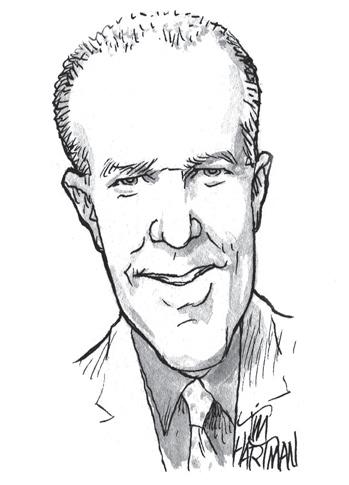
www.mupress.org
• 866-895-1472 toll-free
Search strategies and selected articles page.

Battle of Gettysburg topics.
CivilWarNews.com

18 CivilWarNews.com July 2023 18 July 2023
Select Gettysburg: https:// guides.loc.gov/chroniclingamerica-gettysburg. Peruse the details on this page before selecting ‘Read More About It!’ This link leads to a page containing search tips and a listing of pre-selected articles on the battle from various period newspapers. (See image.)
North and South, newspapers offered varying accounts of the battle, as evidenced by the July 10, 1863, edition of the Abingdon Virginian, which proclaimed “Defeat of the Federal Army.” (See image.)
The Columbia Democrat and


Bloomsburg General Advertiser, a Bloomsburg, Penn., newspaper, hailed “Army of the Potomac Victorious.” (See image.) Newspaper accounts often contained erroneous information, but, unlike today, editors seldom ran later corrections.

Explore the various guides from the LOC, and good luck researching the American Civil War!



Michael K. Shaffer is a Civil War historian, author, lecturer, and instructor who remains a member of the Society of Civil

War Historians, Historians of the Civil War Western Theater, and the Georgia Association of Historians. Readers may contact him at mkscdr11@gmail.com or request speaking engagements at www.civilwarhistorian. net. Follow Michael on Facebook, www.facebook.com/ michael.k.shaffer, and Twitter @ michaelkshaffer.
July 11, 1863, Columbia, Penn., Democrat and Bloomsburg General Advertiser.

19 July 2023 19 July 2023 CivilWarNews.com CivilWarNews.com Want To Advertise In Civil War News? Email us at ads@civilwarnews.com Call 800-777-1862 Vol. 48, No. 9 48 Pages, September 2022 $3.50 America’s Monthly Newspaper For Civil War Enthusiasts 36 Central Virginia Battlefield Trust 34 The Graphic War 20 Through the Lens ST. BONAVENTURE, School Communication, Trust the largest nonprofit Civil War battlefields, the and heritage tourism initiatives, The trust recognized “Chris has been great partner in presenting the award. “He his appearances in on our videos. David N. Duncan, president of talented historians,” Duncan Mackowski Receives Outstanding Service Award from American Battlefield Trust Chris Mackowski among them. has worked closely YouTube and Facebook pages, with number preservation my privilege to serve cause and annually attracts hundreds museum tours, and guest lectures first century. Teacher Institute, Mackowski intersection between technology, In June, Mackowski traveled July 23 event Mobile, Ala. Revolutionary War and Civil War Mackowski has taught at chief and co-founder of Emerging edited nearly two dozen books on War magazines. Mackowski preservation organization based (NC) Civil War Roundtable— battlefield central Virginia. Explore the storied past of Gettysburg, where the tactical decisions of yesterday—still relevant today—can help grow capable leaders for tomorrow. Let us guide your team to help them: • Build decisive leadership capabilities. • Navigate challenging situations. • Gain inspiration and motivation. • Achieve future success and meet organizational goals. Select from our most popular programs or customize a program specically for your organization or team.
Contact us to arrange your Leadership Development Program. 717-339-2161 • leadership@gettysburgfoundation.org GettysburgFoundation.org/Leadership-Development Gettysburg Foundation LEADERSHIP DEVELOPMENT PROGRAMS INSPIRED BY THE PAST. EMPOWERED FOR THE FUTURE. gf-leadership ad_CWN 0723.qxp_Layout 1 5/25/23 5:02 PM Page 1
Make Your Decision
The War Before the War – A Young Artillery Officer in Mexico
In 2019 I wrote three columns, under the title “The Wars after the War,” recounting the experiences of several Federal officers who led troops against hostile Indian tribes in the 1870s. This column, and some as-yet-undetermined number of others, will turn to the war before the War, the Mexican War.
We all know about the Mexican War, don’t we? The United States won; Mexico lost and ceded much of its territory to the U.S. Most of us have heard the joke that we got the part with paved roads.
We also know that the war served as a training ground for many young officers who rose to high rank in the Civil War, and beyond that? Well, beyond that I suspect most of us know very little. So, let’s go back to the 1840s and examine the experiences of some of these officers known to all CWN readers for their exploits a decade and a half later. We begin this month with a young man just out of West Point, a native of Virginia’s mountainous west, an orphan who entered the military academy badly unprepared. He succeeded by dint of hard work and determination, graduating in 1846 ranked 17th in a class of 59.
In his 1997 biography of Stonewall Jackson, James I. Robertson Jr., devoted a chapter

to Thomas Jackson’s service in the Mexican War. Most of what follows is based on this chapter. Upon graduation Jackson was assigned to the artillery, as he had hoped. He received orders to report to Capt. Francis Taylor, commanding Co. K of the 1st Artillery Regiment. Soon Jackson was at sea, bound for Point Isabel, Texas*, where the fighting with Mexico had begun. Captain Taylor’s detachment landed on September 24 and headed inland. The artillerymen fought heat, insects, rain, mud, and mountains as they labored to get their guns and themselves to Maj. Gen. Zachary Taylor’s army in Monterrey. However, when they arrived their guns were not put to use. There were rumors that Mexico was giving up. Jackson feared he had missed the fight. The regiment soon returned to the coast, but home was not the destination. The 1st Regiment
Battles of Mexico: survey of the line of operations of the U.S. Army, under the command of Major General Winfield Scott on the 19th & 20th & on the 8th, 12th, & 13th September, 1847.
An excellent map from the Library of Congress. https://www.loc. gov/item/2018593090.
Readers may wish to use the link below to view an excellent map showing the vicinity of Mexico City and the lines of operation in September 1847. The website of the Library of Congress allows the viewer to zoom in and see the details: the Pedregal lava field, Chapultepec Castle, the causeways and much more.

and other elements of Taylor’s army were headed for Veracruz. The Mexicans had not quit and there would be a great deal of fighting before they did.
While U.S. forces under Taylor continued to wage war in the north of Mexico, the main effort would begin at Veracruz, under a force commanded by Maj. Gen. Winfield Scott.

On March 9, 1847, Scott launched his amphibious landing. In four waves his 13,500-man army (in Robertson’s words) “bobbed ashore in surfboats.”
There was no opposition. Bvt. Second Lieut. Thomas Jackson and his regiment bobbed onto the beach with the others; the U.S. forces now had a foothold on the mainland without the loss of a single man.

Scott chose to take Veracruz by regular approaches rather than risk a costly assault against the fortified city. Trenches were dug and artillery was put in place. The guns opened up on March 22. The defenders replied in kind. In his first time in combat Jackson was conspicuous for his composure under fire as he commanded his guns. A West Point classmate later recalled how Jackson calmly braved “a hurricane of bullets” during the battle. In a letter to his sister Laura, Jackson described the role of Co. K in the siege and told her of a near-encounter with “a cannon ball that came within about five steps of me.”
The guns of the 1st Artillery were light field pieces that contributed to the effort, but the heavy work was done by big naval guns brought ashore. The Mexicans capitulated on March 27. In the letter to his sister Jackson wrote of the excellent performance of the U.S. forces and expressed his disappointment that the surrendering Mexicans were paroled. This newly-minted brevet lieutenant may not have considered the difficulties of guarding and feeding over 4,000 men; however, the letter provides some insight into the mind of the future leader, who (again in Robertson’s words) “thought in terms of unrelenting offensives and complete victory.”
Early the next month Scott moved inland over terrain that favored the Mexican defenders.
20 CivilWarNews.com July 2023 20 July 2023 CivilWarNews.com
Thomas Jackson. (Library of Congress)
Winfield Scott. (Library of Congress)
The first fight came at Cerro Gordo. The Americans succeeded in this battle by means of a flank attack, using a route scouted out by a captain on Scott’s staff named Lee, a Virginian like Jackson. At Cerro Gordo Jackson again performed with skill and bravery. When the Mexicans broke and fled westward, Co. K pursued for a dozen miles. Getting the guns in position was no easy task. Capt. Taylor’s report stated that “through the exertions of Lieut. Jackson, the caissons were brought up early in the night. It may be proper for me to add that the difficulties of getting the Artillery over the hills at Cerro Gordo were great. Taking out the horses, the pieces were drawn up by men by means of picket ropes attached to the carriages.”
Jackson was promoted from brevet second lieutenant to regular second lieutenant. He was assigned to a new company which remained in Jalapa on garrison duty, a job not to his liking. During this time he served on courts martial and began to study the Spanish language. In June he was sent back into action and was transferred to a company commanded by Capt. John Bankhead Magruder.
Magruder was known to be bold and aggressive in battle. Commanding guns in this “flying artillery” unit, Jackson could anticipate activity far more exciting than court martial duty and Spanish lessons.

After a pause in Puebla the artillerymen took their guns to the place where the Mexican positioned their next line. Scott’s force of 10,700 faced a larger army ensconced in a strong position. A frontal assault was not a good option; however, there seemed no feasible way to get on the enemy’s flank. The same Captain Lee again went to work. He took a small force to find a way through a large lava field, known as the Pedregal, which at first seemed impassable. As at Cerro Gordo, Lee managed to find a way. With a great deal of work the path was made passable for infantry and artillery.
As Magruder’s gunners and other artillerymen muscled their way through the Pedregal they came under fire from Mexican artillery placed in a wellfortified position. The division commander ordered the artillery to unlimber and return fire. In this three-hour duel Lt. Jackson displayed “indomitable sticking qualities,” a fellow officer wrote. He went where he was ordered to go and stayed there “without a thought of withdrawing.”

The infantry again flanked the defenders and the next day again
forced the Mexicans back, ever closer to Mexico City. Jackson once more had shown his mettle and his attitude about orders. His performance earned another quick promotion.
After a two-week truce the fighting resumed. Jackson was again in action at Molino del Rey, a site thought to be the location of a cannon foundry. The artillery played a small role here, but
from his guns Jackson observed the infantry’s frontal assault. Although successful, the attack was costly. It was pointless as well: there was no cannon foundry and no reason to attack the position.
Inadequate reconnaissance, faulty intelligence, poor tactics, high cost, no gain, lessons learned by the young lieutenant. The war’s decisive battle was fought on September 13 at
21 July 2023 21 July 2023 CivilWarNews.com CivilWarNews.com
The Battle of Cerro Gordo. (Library of Congress)
Chapultepec Castle (Library of Congress)
Chapultepec Castle, a formidable obstacle three miles southwest of Mexico City. The castle stood on a hill about 200 feet above the plain and guarded the narrow causeways which were the only routes into the capital from the south and west. On the 12th and early on the 13th Scott’s artillery bombarded the position. At 8:30 a.m. American infantry attacked.
At Chapultepec, more than at any other battle in the war, Thomas
Jackson displayed the soldierly attributes of bravery under fire, leadership, initiative, discipline, and relentless determination. Jackson, now a first lieutenant, commanded two six pounders in a force of infantry and artillery placed at the far left of the American line. Advancing along a causeway on the fortress’s north side, the troops met heavy fire, artillery and musketry, coming from a redoubt on the causeway
GEORGIA’S CONFEDERATE MONUMENTS

In Honor of a Fallen Nation
Gould B. Hagler, Jr.
This unique work contains a complete photographic record of Georgia’s memorials to the Confederacy, a full transcription of the words engraved upon them, and carefully-researched information about the monuments and the organizations which built them. These works of art and their eloquent inscriptions express a nation’s profound grief, praise the soldiers’ bravery and patriotism, and pay homage to the cause for which they fought.
www.mupress.org
866-895-1472 toll-free
and from the castle above.
Immediately, one of Jackson’s two six-pounders was damaged. All 12 horses were killed or disabled. Artillerymen scattered to seek what little protection they could find. Jackson stood in the roadway and rallied the men. First the undamaged gun, then the other, were put into position and returned fire. Infantry soon overran the Mexican redoubt.
Jackson improvised, cobbling together some limbers to pull his guns along the causeway. Jackson’s men and others “whose ardor had exceeded their orders” pursued the enemy to the gates of the city. Meanwhile the castle itself had fallen. The battle was won. Mexican forces evacuated the city and the Americans entered unopposed on the 14th. After the city fell there was a truce that lasted until the Treaty of Guadalupe Hidalgo was signed. In the intervening months and beyond, the army occupied a peaceful city. It was pleasant duty. Jackson used the time profitably. He continued his study of Spanish, sticking with it until he became fluent. He read histories of Mexico in both English and Spanish. He also read Shakespeare, presumably
in the original English. He dined with prominent Mexican families and met some of their charming daughters. Jackson was involved in two matters of honor, but not as one of the duelists. His journey of faith, begun under the influence of Capt. Francis Taylor, continued. He developed an unlikely friendship with an archbishop and explored Catholicism. As we all know, however, he ultimately decided on Presbyterianism.
In the military sphere, he served as his company’s quartermaster and commissary officer and was promoted to the rank of brevet major. He observed the conditions in military hospitals and was distressed by what he saw. He noted “the several sharp rivalries that erupted on the command level relative to battle plans and conduct.”
In June 1848 Jackson left Mexico City with the 1st Artillery. In July he reached New Orleans, the same port from which he had sailed nearly two years earlier. In this war before the War, Thomas Jackson, like many other young officers, developed his skills and learned valuable lessons on the military craft. These lessons would be applied, in the larger and more sanguinary conflict,
as he fought against many of the officers who had been his compatriots in Mexico. Many others, of course, would be Jackson’s comrades-in-arms in this later war, including Capt. Lee, with whom he had a close and famous association.
*Whether this was the Texas coast or the Mexican coast was one of the important issues over which the war was being fought. Mexico did not recognize Texas’s claim to the territory south of the Neuces River. Anyway, when Taylor, Jackson and company arrived it was occupied by U.S. troops, not by forces of the region’s other claimants.
Gould Hagler is a retired lobbyist living in Dunwoody, Ga. He is a past president of the Atlanta Civil War Round Table and the author of Georgia’s Confederate Monuments: In Honor of a Fallen Nation, published by Mercer University Press in 2014. Hagler speaks frequently on this topic and others related to different aspects of the Civil War and has been a regular contributor to CWN since 2016. His email is gould.hagler@gmail.com.
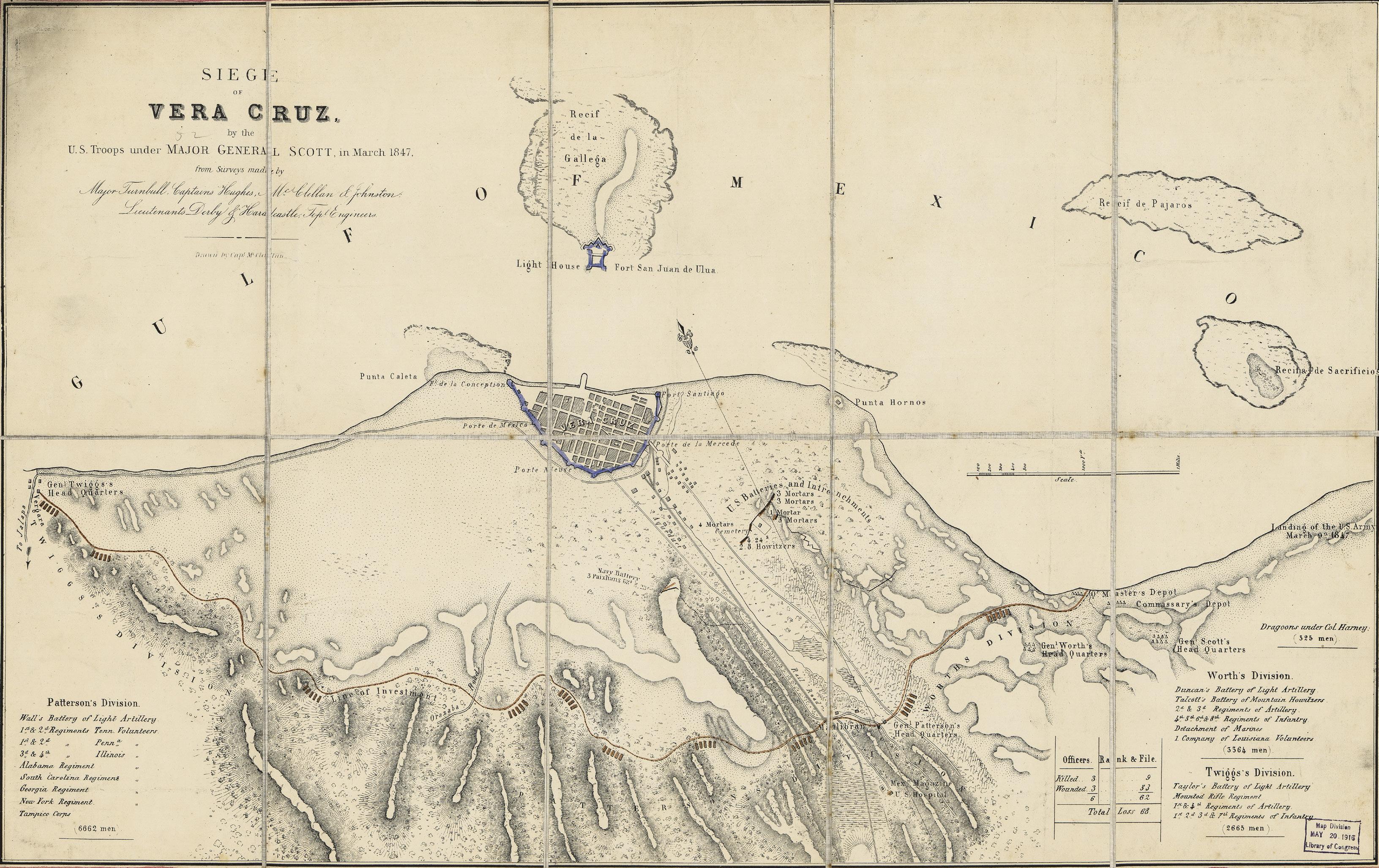
22 CivilWarNews.com July 2023 22 July 2023 CivilWarNews.com
Siege of Vera Cruz by the U.S. troops under Major General Scott, in March 1847, from surveys made by Major Turnbull, Captains Hughes, McClellan, & Johnston, Lieutenants Derby & Hardcastle, Topl. Engineers. (Library of Congress)
Former American Battlefield Trust leader honored
by Gregory L Wade FRANKLIN, TN—Civil
War battlefield preservation advocacy group, Franklin’s Charge, recently honored James Lighthizer, former president of the American Battlefield Trust (ABT), with an appreciation dinner at historic Leiper’s Fork outside Franklin, Tenn. Lighthizer led the ABT, formerly known as the Civil War Preservation Trust, from 1999 until he stepped down in 2020. He still serves on the organization’s board.
Franklin’s Charge has worked with ABT since the early 2000’s in saving or reclaiming at least fifteen battlefield properties. This work included removing numerous structures built on the grounds since the 1864 Battle of Franklin. Lighthizer is widely acknowledged as having challenged FC into action when he visited in 2003 and told them, “You have to get organized and get political.”
The first major accomplishment was purchasing a golf course planned for development into a residential mixed-use project. Over those 110 acres hundreds of Confederates lost their lives attacking entrenched Federals. The local group, with help from the City of Franklin and assistance from the ABT, was successful in purchasing the property which is now fully interpreted as part of the Franklin Battlefield. The site is now known as the Eastern Flank Battlefield.
One of the Franklin’s Charge founders and longtime board member, Mary Pearce, noted, Jim was a “supportive teacher who saw we needed help if any battleground would be saved.”
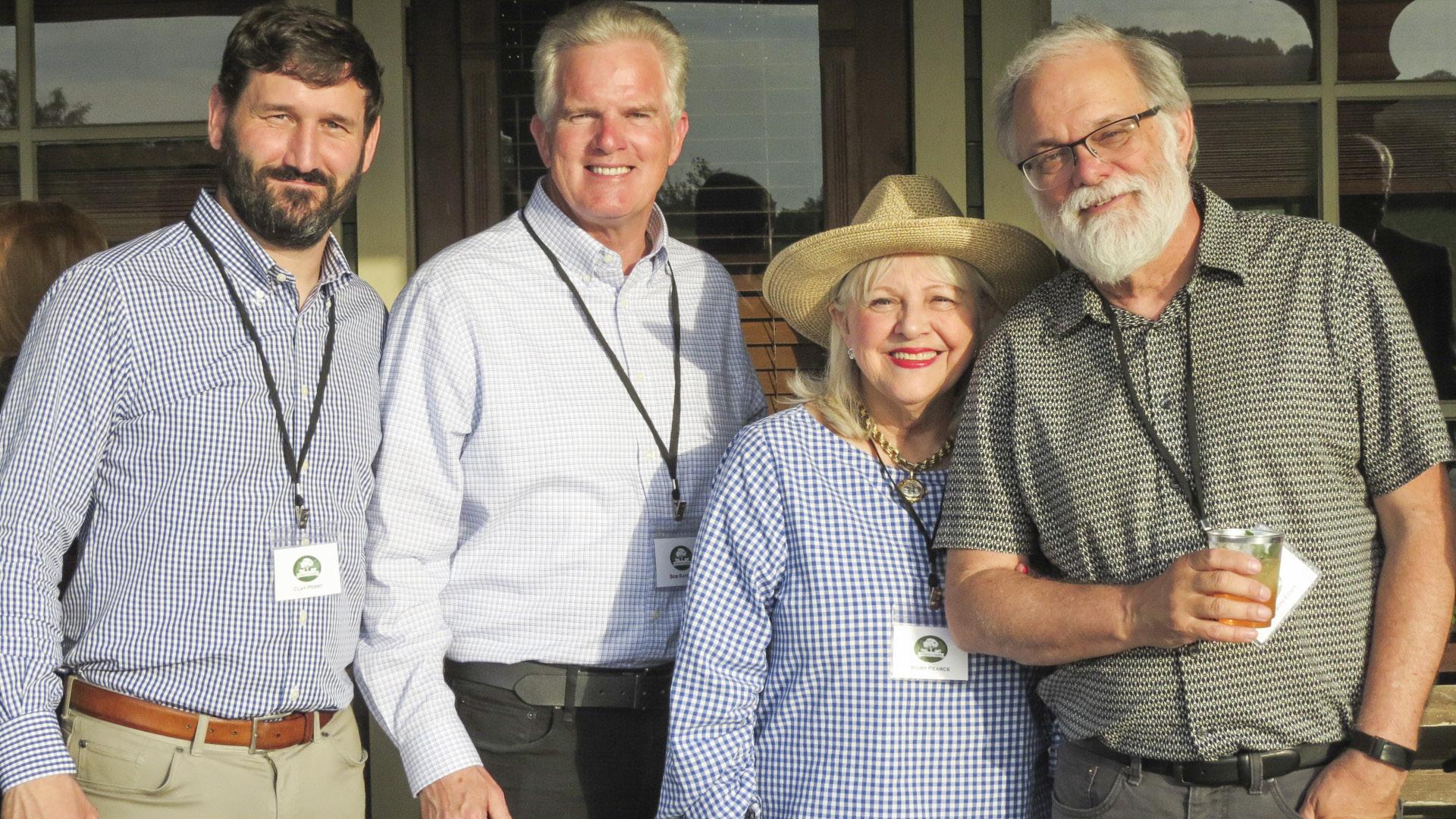
Many Franklin’s Charge former and current board members, ABT officials, and Franklin city leaders were in attendance as Lighthizer was recognized with a Tennessee Legislative Proclamation noting his contributions.

The honor was presented by Tennessee State Representative Sam Whitson and retired representative Steve McDaniel, who also worked closely with the ABT in establishing Parker’s Crossroads Battlefield in West Tennessee. Another Franklin’s Charge founder, Julian Bibb,

who continues working with the ABT on Franklin Battlefield projects, presented Lighthizer with a 12-pounder cannon ball recovered in the Franklin area. Bibb noted no preservation work has ever happened in the manner it has occurred in Franklin. Noting its importance, Lighthizer said in his remarks, “to be good citizens we have to know our history, the good and the bad. That is why battlefield preservation has been and will continue to be critical for our understanding of who we are.” He added that an “informed citizenry is critical” to our republican form of government and what has been done in Franklin is a “miracle.”
Pearce noted, “we are no longer a battlefield known for pizza restaurants, a golf course, and a lost part of our history.” Bibb shared other benefits of historic preservation work. “We have gone from 4,000 tourists a year to over 200,000 who come to see our battle sites, and there is more to come.”
Franklin’s Charge is a § 501(c)(3) Tennessee nonprofit corporation organized in 2005 dedicated to preserving America’s threatened Civil War battlefields in Williamson County, Tennessee. In addition, Franklin’s Charge has actively worked to educate the public about the 1864 Schofield-Hood campaigns, the 1864 Battle of Franklin, the 1863 Battle of Thompson’s Station, the Union earthworks in Triune, and other Civil War events in Middle Tennessee. Further, Franklin’s Charge has been an active participant in heritage tourism, American Civil War history programs, and preservation efforts.
Franklin’s Charge brought together all preservation groups operating in Williamson County. Its membership consists of representatives of the AfricanAmerican Heritage Society, the Carter House Association, the Civil War Preservation Trust, the Franklin-Williamson County Chamber of Commerce, the Harpeth River Watershed Association, the Heritage Foundation of Franklin and Williamson County, Historic Carnton, Inc., the Land Trust for Tennessee, Inc., Save the Franklin Battlefield Association, the Tennessee Civil War Preservation Association, the Tennessee National Civil War Heritage Area, the Tennessee Preservation Trust, and the Williamson County Convention and Visitors Bureau.
23 July 2023 23 July 2023 CivilWarNews.com CivilWarNews.com Subscribe online at CivilWarNews.com
Lleft to right: Clay Perry, President of Franklin’s Charge, Bob Ravener FC board member, Mary Pearch founder and FC board member, Nelson Eddy, FC board member.
Julian Bibb, founder and board member of Franklin's Charge presents cannon ball to Jim Lighthizer.
Former Tennessee State Representative Steve McDaniel (left) and Representative Sam Whitson read Tennessee proclamation honoring Jim Lighthizer.
The Charge of the First Maryland Regiment
The Graphic War highlights prints and printmakers from the Civil War discussing their meaning and the print maker or artist’s goals.
loyal Confederate, was Stonewall Jackson’s right-hand man until he wasn’t. He was “a darkcomplected, myth encumbered figure who, at the age of thirtythree was known as the ‘Black Knight of the Confederacy’.”1
The irony of his death in the war’s early years is notable. He was with Jackson in the 1862 Valley Campaign and contributed to the early rebel successes. However, at the First Battle of Kernstown,
Ashby underestimated the forces facing Jackson. Instead of four regiments, Jackson faced a division of 9,000 Federals. Again “at the First Battle of Winchester, as Union forces under Maj. Gen. Nathaniel P. Banks were retreating, Ashby failed to cut off their retreat because his troopers were plundering captured wagons.”2
Ashby met his fate near Harrisonburg June 6, 1862, when
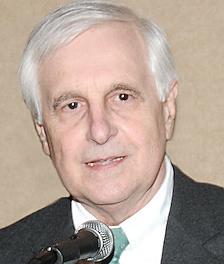
the First New Jersey Cavalry attacked his position near Good’s Farm. He survived the initial cavalry attack, but the ensuing infantry attack killed his horse. On foot, Ashby charged ahead and was stopped with a bullet through the heart. Supposedly the 13th Pennsylvania Reserve; the “Bucktails” were responsible but it may have been friendly fire. Ashby, one of the Confederacy’s leading cavalrymen, horseless, had been shot down while on foot supposedly waving his sword uttering his last words: “Charge, men! For God’s sake. Charge!”3
Answering Ashby’s call, the 1st Maryland engaged the Bucktails. After the war ended, artist William Ludwell Sheppard, depicted the charge of the 1st Maryland Infantry after Ashby fell. Lithographer G. A. Muller reproduced the image in 1867. He has since slipped from the historical record. His print was published by the Baltimore lithographic house A. Hoen and Company, an ideal publisher because of its locale. The firm had been around since before

1848 when it specialized in scientific illustrations and maps, as well as publishing local views of Baltimore and portraits. After the war, it established a printing plant in Richmond.
Muller’s lithograph depicts Corporal Shanks taking the colors from a dramatically fallen color bearer; the second having been just shot down. As authors Holzer, et al., wrote, although the casualty rate of color bearers was high, “they did not always fall so artistically…. These lithographed Maryland color bearers owe more to picturesque imagination than to battlefield reports.”4 The print’s title margin is a wealth of information including excerpts of official reports, which is remarkable since the OR were not published until 1880–1901; it includes an excerpt from Richard Ewell’s after-action report. Where he got a copy of the report to letter press onto the 1867 print remains unknown. It means the print probably does date to 1867 while the Ewell report was added toward the end of the century. It reads:
24 CivilWarNews.com July 2023 24 July 2023 CivilWarNews.com
Turner Ashby; Virginia cavalier, firebrand, fierce horseman, and
The death of Ashby, by William Ludwell Sheppard, lithograph by Hoen of Baltimore. 1867. (Library of Congress)
every action from Front Royal to Cross Keys.
On the 6th instant, near Harrisonburg, the Fifty-eighth Virginia Regiment was engaged
with the Pennsylvania Bucktails, the fighting being close and bloody. Colonel [Bradley Tyler] Johnson came up with his regiment in the hottest period of the affair, and by a dashing charge in flank drove the enemy off with heavy loss, capturing the lieutenant-colonel (Kane) commanding. In commemoration of their gallant conduct, I ordered one of the captured bucktails to be appended as a trophy to their flag.
Lithograph of Turner Ashby (Library of Congress)
The gallantry of the regiment on this occasion is worthy of acknowledgment from a higher source, more particularly as they avenged the death of the gallant General Ashby, who fell at the same time. Two color-bearers were shot down in succession, but each time the colors were caught before reaching the ground, and were finally borne by Corporal Shanks to the close of the action.”5 Sheppard, and two other others, Allen C. Redwood, and Conrad Chapman were staunch post war southern artists who embraced the Lost Cause. Viewing the three through the lens of “intellectual and artistic context,” it was obvious that they embraced the Lost Cause’s principles of “Southern rights, honor, white supremacy…and the “assertion that the confederacy was overpowered by a flood of Yankee men and materiel.”6
The print owed its origins and eventual publication to the 1st Maryland’s commanding officer, General Bradley T. Johnson. He paid Hoen and company in 1867 “when money was plenty,” to have Sheppard’s painting reproduced and published. It is not known how much it cost Johnson, but he “gave a copy to every man who was there.” The painting ended up in the Confederate Soldiers’ Home in Pikesville, Maryland, while the lithograph was supposed to be used as a fund raiser to build a monument in Baltimore to the Maryland Line, C. S A.”7 The monument was never built.

Endnotes:
1. Virginia Encyclopedia. https://en.wikipedia.org/ wiki/Turner_Ashby.
2. Ibid.
3. Ibid.
4. Holzer, et, al., The Confederate Image, Prints of the Lost Cause, Chapel Hill, University of North Carolina Press, 1987, 216-217.
5. Ewell’s report, June 16, 1862. Official Records Of The War Of The Rebellion. Operations In N. Va., W. Va., And Md. Serial 1, v. 12, part 1, page 782. [Chap. XXIV].
6. Ibid. 208.
7. Ibid. 215-217. The Soldiers’ Home was originally a
Step into a summer o Events
WALK THE BATTLEFIELDS of history with historical experts who bring the military, human and social stories to life! This summer’s schedule is full of engaging tours, talks and more hosted by the American Battlefield Trust and our partner organizations. Share your interest in history with people who share your passion! Events are geared toward novices and experts alike. We’ll see you on the battlefield!
JUNE 2 TO AUGUST 25
General Lee’s Gettysburg Headquarters Open House
Every Friday and select weekends, 10:00 a.m. – 3:00 p.m. Gettysburg, PA
JUNE 3
Cold Harbor Battle Anniversary Tour
Cold Harbor Visitor Center Mechanicsville, VA
JUNE 17
Park Day at Bulltown Camp 9:00 a.m. – 2:00 p.m. Napier, VA
JUNE 30
After 43 years in the museum field, Cilella devotes his time collecting American prints and maps and writing. His most recent books are Upton’s Regulars: A History of the 121st New York Volunteers in the Civil War (U. Press Kansas, 2009). His two-volume Correspondence of Major General Emory Upton, (U. of Tennessee Press, 2017), received the 2017–2018 American Civil War Museum’s Founders Award for outstanding editing of primary source materials. Upton’s love letters 1868-70, (Till Death Do Us Part) was published in 2020 by the Oklahoma University Press. His current book, the Memoirs of Dewitt Clinton Beckwith of Upton’s Regulars (McFarland Press) was released this spring.
Subscribe
JULY 22
Buffington Island Memorial Service 11:00 a.m. – 2:00 p.m. Portland, OH
JULY 24–26
Virtual Teacher Institute
Daily, 10:00 a.m. – 5:30 p.m. ET
AUGUST 5–6
260th Battle of Bushy Run Reenactment Jeannette, PA
Scan
for more events & details
With the help of our supporters and partners, the American Battlefield Trust has saved more than 56,000 acres at 150+ sites in 25 states — creating outdoor classrooms where the past can come alive. For a full schedule of events year-round, visit

25
2023 25 July 2023
July
CivilWarNews.com CivilWarNews.com online at CivilWarNews.com
www.battlefields.org/events.
Generations Event General Lee’s Headquarters Gettysburg, PA
The Trust leads an interpretive tour of the Cedar Mountain Battlefield, Culpeper County, Va. COLLEEN CHESLAK-POULTON
“The history of the Maryland regiment, gallantly commanded by Col. Bradley T. Johnson, during the campaign of the valley, would be the history of
federal arsenal dating to 1818. In 1888, the State of Maryland appropriated $5,000 to convert into a soldier’s home. It remained in operation until 1932. The ultimate fate and location of the original Sheppard painting is unknown.
(1940)
Among the most notable memoirs written by officers of the Army of Northern Virginia stands that written by one of General Jackson’s staff officers, Henry Kyd Douglas.

Born in September 1838 near Shepherdstown in what is now West Virginia, Douglas went to college, studied law, and practiced in Charleston. At the start of the war he enlisted as a private in Company B, 2nd Virginia, which became part of the Stonewall Brigade. First Sergeant at Manassas, he was later assigned to General Jackson’s headquarters staff and became Assistant Inspector General, even
as he remained with his company (captain, fall ’62).
After Jackson’s death he became Assistant Adjutant General in Edward Johnson’s division, with rank of major. He was wounded at Culp’s Hill, captured and imprisoned until March 1864. He returned to service as Johnson’s AAG, then Jubal Early’s, then John Gordon’s. He surrendered at Appomattox with the rank of colonel, commanding an infantry brigade.
Douglas was a well-educated and literate man; he wrote two articles on Stonewall for Battles and Leaders in the 1880s. But his memoir was a long time coming. He used a wartime diary to write his reminiscences in 1867, but waited thirty years to rework it. At the time of Douglas’ death in 1903 it remained unpublished. It was not till 1940 that a nephew consented to its publication by the University of North Carolina Press.
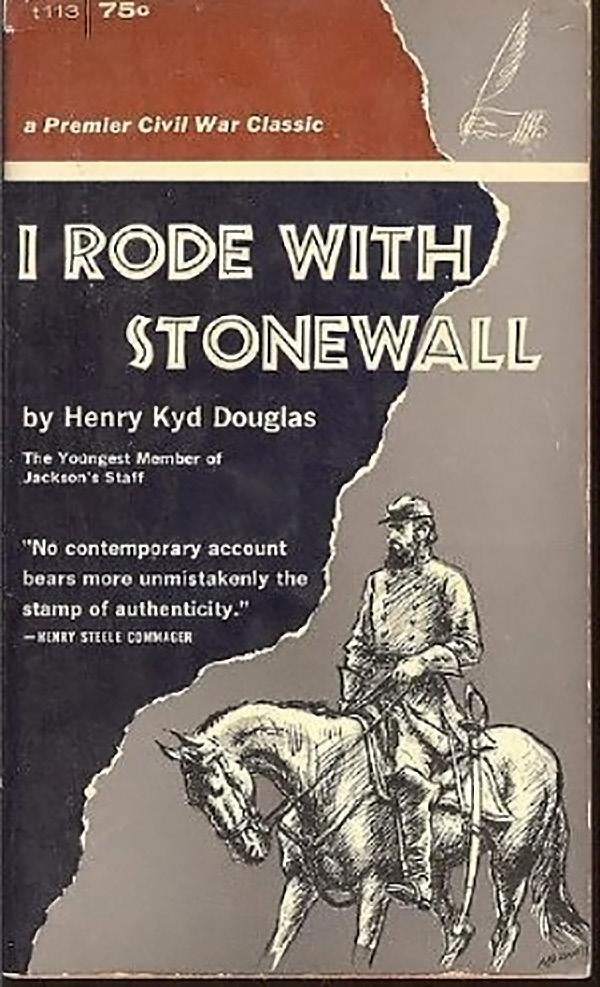

Today I Rode with Stonewall offers some of the freshest firsthand observations on Jackson to be seen in the literature. Douglas was with Stonewall in November 1861 when Jackson had to relinquish command of his First Brigade for transfer to the Valley. He heard the General’s farewell to the men, and within fifteen minutes he and another witness “wrote it out from memory, comparing our recollection of every word until we thought it accurate.” Thus when Douglas notes Jackson at least twice referring to “our second War of Independence,” he defines Stonewall’s stature as an adamant Confederate warrior. And yet, when a young hostess entertained the General and officers in her parlor by playing “Dixie,” Jackson professed a liking for the tune—but didn’t recognize it when it was played.
Douglas had plenty of time to observe his commander.
In face and figure Jackson was not striking. Above the average height, with a frame angular, muscular, and fleshless, he was, in all his movements from riding a horse to handling a pen, the most awkward man in the army. With high, broad forehead, small sharp nose, thin, pallid lips generally tightly shut, deep-set eyes,
dark, rusty beard, he was certainly not a handsome man.
“Walking or riding the General was ungainly,” Douglas adds; “his main object was to get over the ground.” So extremely self-disciplined was he that our memoirist at one point terms him “hard as nails.”
Focused on his sense of duty and his determination upon its performance, in Jackson “there was no place for sentiment or pity.” Once, on the march in a driving rain, Jackson dismounted to help his men rebuild a damaged bridge.
“He’s as systematic as a multiplication table and as full of military as an arsenal,” someone once said. Yet Jack had a light vein. When Douglas told his commander a light story, Jackson broke forth “a very hearty laugh, something he seldom indulged in.” And he always had a soft spot in his heart for Lee’s cavalry chief. “He was very fond of Stuart,” he writes, “and Stuart could always amuse him.” Only once during the war did our memoirist see the General read a novel. But Douglas was close enough to observe breaks in Stonewall’s façade. At Fredericksburg Jackson took a shine to little Janie Corbin, who visited him daily. After the lass lost her comb, the General fixed up her hair. Later, hearing of Janie’s death from scarlet fever, Jackson “was much moved and wept freely.”
This same Jackson was fearless under fire. At Malvern Hill a shell exploded nearby, killing several men and throwing dirt upon the General as he was writing a note. He simply shook off the dust and resumed writing. At Winchester, seeing his lines surge forward, he exclaimed, “Very good! Now let’s holler!” Jackson then led his staff in “a deafening roar.”
The men revered their leader. The story goes that when cheers erupted in their camps, they guessed it was either Jackson or a rabbit. “They loved ‘Old Jack,’” Douglas observes, one of his many comments on Stonewall. The General, for instance, could lose his temper. One morning Ewell overslept when he should have been on the march. It was Douglas’ job to get everyone moving because, as he told an officer, “’Old Jack’ was on the rampage.”
The General was so constantly active that Douglas wondered if he ever slept. No, “he slept a great deal, often at odd times; he could always go to sleep when he had nothing else to do.” That included listening to the minister in church. Once Douglas took Jackson to Presbyterian services
being conducted by an old friend; “as usual, the General went to sleep at the beginning of the sermon.”
Jackson was a stickler as to details. Stonewall always kept a close eye on things; every morning he rode along his line in observation. On the march he never lagged behind. “We, of the staff, never could convince the General that if the army did move at daylight there was no reason why he should always be at the head of the column at that hour,” Douglas writes. “He was incorrigible in that and other matters involving ease and comfort.”
Stonewall was extremely modest. When he heard that some people were talking about him as the next Confederate president, “the General was very much astonished.” He gave up reading newspapers because he tired of reading about himself. Many a time Douglas saw him turn down quarters at a residence, preferring to pitch his tent and sleep in the yard. Once Jackson rode into Richmond to attend church. Despite his efforts to remain incognito, he was soon discovered by congregants and was of course mobbed. Douglas and the staff came to the rescue and whisked him out. Then there were the ladies.
During the raid into Maryland, Jackson was beset near Frederick by two girls, who sprang from their carriage at his sight. One hugged him tight, the other snatched his hand, squealing “with the wildest enthusiasm, both at the same time, until he seemed simply miserable.” Finally they flew off. What Banks, Pope and Hooker could not do, these two Baltimore girls left Jackson “bowing, speechless, paralyzed.”
More than once does our memoirist mention Jackson’s taciturn nature, manifested especially when the General kept his plans to himself, unknown even to his staff officers. On other occasions, when they did learn of Jackson’s plans, which sometimes seemed extremely risky, the perplexed staff wondered if Old Jack was off his rocker. As Lt. Col. Stapleton Crutchfield muttered, “quem Deus vult perdere, prius dementat” (he whom God would destroy, would first be made insane). Sandy Pendleton put it more plainly when he said that at those times the General was “crazy again.”
Stonewall, as we all know, was a cold water man. Yet after a gentleman of Winchester sent the General a bottle of fine whisky, Jackson (thinking it was wine), took a good draught.
26 CivilWarNews.com July 2023 26 July 2023 CivilWarNews.com
Henry Kyd Douglas, I Rode with Stonewall
Henry Kyd Douglas in civilian clothing. (NPS)
I Rode with Stonewall: Being chiefly the war experiences of the youngest member of Jackson’s staff from the John Brown raid to the hanging of Mrs. Surratt .1961 edition.
Soon “he grew more than usually loquacious. The truth is,” Douglas noticed, “the General was incipiently tight.”
How Jackson got his nickname is a familiar story, but there are slight differences in the various accounts by “eyewitnesses.”

Here’s Douglas’ take on General Barnard Bee’s famous words: “Look! There is Jackson’s brigade standing behind you like a stone wall!” (emphasis added). That same rock-solid style was evident
a year later on the same battlefield of Manassas. Under heavy attack by Pope, Jackson received a courier from Longstreet, whose divisions were marching to his aid and who asked if he needed reinforcements. “Tell General Longstreet,” Jack replied, “that I am obliged to him but I don’t need them now; if he gets hard pressed I’ll send him reinforcements.”



What makes I Rode with Stonewall so valuable is that Douglas based it closely on a
wartime diary he kept. Shortly after Jackson’s death Captain Douglas visited General Lee and heard him explain why he could not visit Stonewall as he lay ill at Guinea Station or later in state at the Capitol. “Those people over the river are again showing signs of movement and I cannot leave my Headquarters,” the general declared. Douglas was precise. “I have given these remarks of General Lee as spoken,” he writes, “for I wrote them out in my diary and they are verbatim according to my fresh recollection.” Douglas also refers to the wartime letters he sent his parents at their home near the Potomac. He quotes from a card he wrote to his father: “Sept. 15. ’62—Dear Father: Harper’s Ferry has surrendered. Nobody hurt on our side. H. K. D.” Then he wryly adds, “To be with Jackson was to take lessons in brevity.”
“Old Jack” stories are here in abundance, including old chestnuts about raising his right hand while riding and about sucking that lemon. There’s the one about Jim, Jackson’s servant, who often observed him in prayer. But when Jim saw him kneeling at night, “then I begin to cook rations and pack up for there will be hell to pay in the morning.” There are new ones, too, as when a kind Virginia lady stitched a straw hat and sent it to the General.
Its effect was like malicious magic, and under its transformation our General, never an Apollo, became a caricature. He looked into a mirror to see himself; one glance was enough and he did not “stand and gaze.” He handed it to Jim to put away carefully, and Jim took it with mock gravity and carried it off daintily. The General never asked for it again and it disappeared. Despite his keen eye for detail, Douglas refrains from explaining Stonewall’s battles. Regarding Groveton, for instance, he shrugs, “this work is not serious for that.” (The memoirist learned modesty
very well from his mentor.)
Douglas’ keen eye took in others as well. After he lost his leg, Dick Ewell “was never the same old ironsides again.” As a division commander, Powell Hill earned a reputation as “quick, bold, skillful and tenacious.” But “it cannot be said he added to it when he commanded a corps,” as our memoirist gently puts it. Douglas was more effusive when writing about Jeb Stuart. “America never produced Stuart’s equal as a cavalry commander,” he trills. “I am not forgetful of Nathan Bedford Forrest, and Philip Sheridan, and Wade Hampton, and others, but there was but one Jeb Stuart.”
I often say that having a lifelong Civil War passion keeps us enthusiasts young. Reading
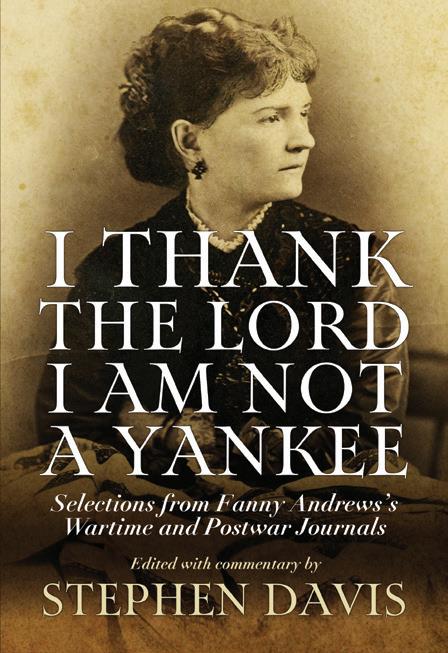
Henry Kyd Douglas’ recollections of Stonewall Jackson rendered me absolutely juvenescent.
Stephen Davis of Cumming, GA, as been contributing his monthly “Critic’s Corner” column to Civil War News for several years. He is the author of George N. Barnard: Photographer of the Atlanta Campaign (Historical Publications). His two-volume study of General John B. Hood has recently been published by Mercer University Press.
Ted Savas has termed Steve’s What the Yankees Did to Us: Sherman’s Bombardment and Wrecking of Atlanta (2012) as “by far the most well-researched, thorough, and detailed account ever written about the ‘wrecking’ of Atlanta.”
Edited
February
27 July 2023 27 July 2023 CivilWarNews.com CivilWarNews.com
Eliza Frances Andrews (1840–1931) received a strong education and was a successful writer and educator. Her War-Time Journal of a Georgia Girl surely ranks among the most observant and intelligent wartime memoirs by a Southern woman.
with commentary by Stephen Davis, I Thank the Lord I Am Not a Yankee includes selections of her wartime and postwar journals which are most expressive of her Confederate patriotism and Southern pride.
“I Thank the Lord I Am Not a Yankee...” www.mupress.org 866-895-1472 toll-free www.mupress.org
2023 • $35.00, hardback Stephen Davis is author of ten books on the Civil War, most of which treat the Atlanta Campaign. His two recent volumes on Confederate General John Bell Hood have won several prizes, including the Fletcher Pratt Award of the New York CWRT.
Henry Kyd Douglas head stone, Elmwood Cemetery, Shepherdstown, W.V. (Photo by Karl Stelly)
Henry Douglas’ uniform coat. (Antietam National Battlefield)
Douglas parole signed at the end of the war on April 10, 1865. (Antietam National Battlefield)
www.emergingcivilwar.com
Ninth Annual Emerging Civil War Symposium at Stevenson Ridge

preserved battlefield, complete with an interpretive trail and signs. Monuments commemorated lost stories of the enslaved. A fuller story began to blossom.
The Battle of Franklin fascinates many Civil War students, particularly because it turned the 1864 northward advance of the Confederate Army of Tennessee into a final death ride. That fate gives events there a tragic cast. It also (unfortunately) often turns the subsequent Battle of Nashville into a historical afterthought.
From the Editor
Franklin, Tenn., stands as one of the great success stories of battlefield preservation. Development nearly swallowed the battlefield whole, with postage-stamp sized landmarks offering a hint of the lost history.

An infamous pizza hut served as the poster child for “Worst Case Scenarios.” Nearby, the monument marking where Confederate Maj. Gen. Pat Cleburne died seemed to suggest that Cleburne died in a fight for cheap, convenient pizza.
The pizza hut came down, as did another nearby shop; so did a strip mall. More green space appeared. Archeology uncovered the position and character of the Federal defensive line. The Carter Farm’s cotton gin foundation appeared. Cannon rolled in. Other secrets revealed themselves.
On the east side of the battlefield, a golf course slated for development turned into
For me, though, the story of Franklin’s reclamation fascinates me even more. David Duncan, president of the American Battlefield Trust, recently evoked the old spiritual “Amazing Grace” to describe the success there, “It once was lost, but now is found.” One might even be tempted to call the Franklin Battlefield’s resurrection a miracle, except it’s not. Now we all have a battlefield again because of committed leadership, passionate volunteers, and a heap of financial support, all focused on an unwavering vision.
Even more exciting, is that the reclamation story is an ongoing saga; it’s still in progress. It’s participatory, too; we can all play a role because there’s more work to do. The battle for the battlefield isn’t over.
If you’ve never had the opportunity to visit Franklin, I highly recommend it. It’s a beautiful town with plenty to see, and thanks to years of hard work, there’s battlefield to see, too.
— Chris Mackowski, Ph.D. Editor-in-Chief
“1863: The Great Task Before Us;” is the theme for our upcoming 9th Annual Emerging Civil War Symposium at Stevenson Ridge, August 4-6 in Spotsylvania, Va. Keynote speaker Timothy B. Smith headlines a line-up of ten speakers, plus we’ll have a great tour of part of the Chancellorsville Battlefield.
Tickets for the full weekend are $250. For details, or to snag one of the few remaining tickets, visit: https://emergingcivilwar.com/ ecw_event/2023-symposium/.
News and Notes
From Sarah Kay Bierle: “May has been a month of leading tours! Two tours at New Market Battlefield around the anniversary date and my first all-day bus tour at Franklin Battlefield during American Battlefield Trust's Annual Conference.”

The semester is finishing up for Neil P. Chatelain. Commencement ceremonies for his students at Lone Star College occurred in mid-May, and the high school where he teaches is finishing up now. As far as the Civil War, Neil just published an article titled “The Ungentlemanly Porter-Miller Exchange” in the Spring 2023 issue of Civil War Navy magazine, which had its origins as an ECW blog posted a year ago. Now he is gearing up for a summer of travel, research, and writing.
Doug Crenshaw and Drew Gruber delivered a talk on the Peninsula Campaign at Hanover Court House. Doug also led a tour of the Richmond Battlefields on May 22, with another coming up June 1.
Meg Groeling presented “First Fallen: The Life of Elmer Ellsworth” to the North Bay CWRT in Santa Rosa. “It was lovely,” she says.
The big news for Dwight Hughes is that the ECW 10th Anniversary volume, The Civil War on The Water: Favorite Stories and Fresh Perspectives from the Historians at Emerging Civil War, finally landed on his doorstep and hopefully on many outlet shelves. It's Dwight's first effort as editor, backed up by Chris Mackowski, containing great navy stories from him and many other ECW authors.
From Frank Jastrzembski and his work with Shrouded Veterans: “A veteran headstone was placed at Brevet Brigadier General George W. Gowen’s grave. He was killed in action at Petersburg, Va., on April 2, 1865, age 25. A family friend returned his remains to Pennsylvania and they were buried at St. Luke’s Episcopal Churchyard in Germantown. Despite an impressive monument at Petersburg, only a fragment of Gowen’s original headstone marked his grave.” For more, see Frank’s post at ECW.
Chris Kolakowski appeared on the VIP Vanguard: Indo-Pacific podcast about the importance of military history. You can listen here: https://tinyurl. com/4pk7b92h.

From Chris Mackowski: “To quote Sarah Kay Bierle, ‘May has been a month of leading tours!’ In early May, I led a bus tour of Chancellorsville for the Harrisburg and Hershey Civil War Roundtables. In midMay, I led a pair of tours for the American Battlefield Trust during its conference in Franklin, Tenn. The first tour, co-led by Matt Atkinson, used landmarks around Franklin and Spring Hill to talk about various Confederate personalities, including John Bell Hood, Nathan Bedford Forrest, Earl Van Dorn, Leonidas Polk, Sam Watkins, and even Richard Ewell. The second tour, led by Joe Ricci, recounted one of the great lost opportunities of the Civil War, the Federal escape at Spring Hill.”
Terry Rensel made a research visit to the Hagen History Center
in Erie, Penn. He also visited the site of John Brown's 1825–1835 tannery in Crawford County, Penn., as well as the Pithole City, Penn., ghost town site near Titusville, where John Wilkes Booth was an oil field speculator during the summer/early fall of 1864. While in Titusville, he also paid his respects at the home of pioneering journalist Ida Tarbell.
Brian Swartz shared a Joshua L. Chamberlain program from Passing Through the Fire with the Penobscot County Retired Teachers Association during a May 11 meeting in Brewer, Maine.
Tim Talbott will be presenting about the Battle of New Market Heights at Gettysburg College's Civil War Institute on June 10.
Jon Tracey ventured to Indianapolis and, after a trip to see the living history museum at Conner Prairie, he spoke at the Indianapolis CWRT, which is nearing its 70th anniversary! He spoke on the service of the 27th Indiana Infantry and how one of its veterans wrote about and remembered that service later in life.
ECW Bookshelf
New from ECW’s “Engaging the Civil War” Series with Southern Illinois University Press! Without Concealment, Without Compromise: The Courageous Lives of Black Civil War Surgeons by Jill L. Newmark. Jill is a former curator and exhibition specialist at the National Library of Medicine, National Institutes of Health.
About the book: Of some twelve thousand Union Civil War surgeons, only fourteen were black men. This book is the firstever comprehensive exploration of their lives and service. Jill L. Newmark’s outstanding research uncovers stories hidden for more than 150 years, illuminating the unique experiences of proud, patriotic men who fought racism and discrimination to attend medical school and serve with the U.S. military. Their efforts and actions influenced societal change and forged new pathways for African Americans.
To find out more, or order a copy, visit SIU Press: http://www.siupress.com/ books/978-0-8093-3904-4.
New from Savas Beatie’s Emerging Civil War 10th Anniversary Series!
The Civil War on the War: Favorite Stories and Fresh Perspectives from the Historians of Emerging Civil War, co-edited by Dwight Hughes and Chris Mackowski.
“Nor must Uncle Sam’s
28 CivilWarNews.com July 2023 28 July 2023 CivilWarNews.com
Chris Mackowski
Bullet holes in the wall of the Carter Farm Office shed light on the ferocity of the fighting at Franklin.
Joe Ricci (left) gets the thumbs up from a bus full of happy explorers on the road to Spring Hill, Tenn., at the American Battlefield Trust’s annual conference.
web-feet be forgotten,” cautioned Abraham Lincoln. The latest book in the ECW 10th Anniversary Series looks at naval action on the open seas, along the coast, on the shores, and up and down the rivers. The volume provides a comprehensive overview of naval warfare, arranged roughly chronologically, while also highlighting major actions, key players, and lesser-known tales. To find out more, or order a copy, visit Savas Beatie: https:// www.savasbeatie.com.
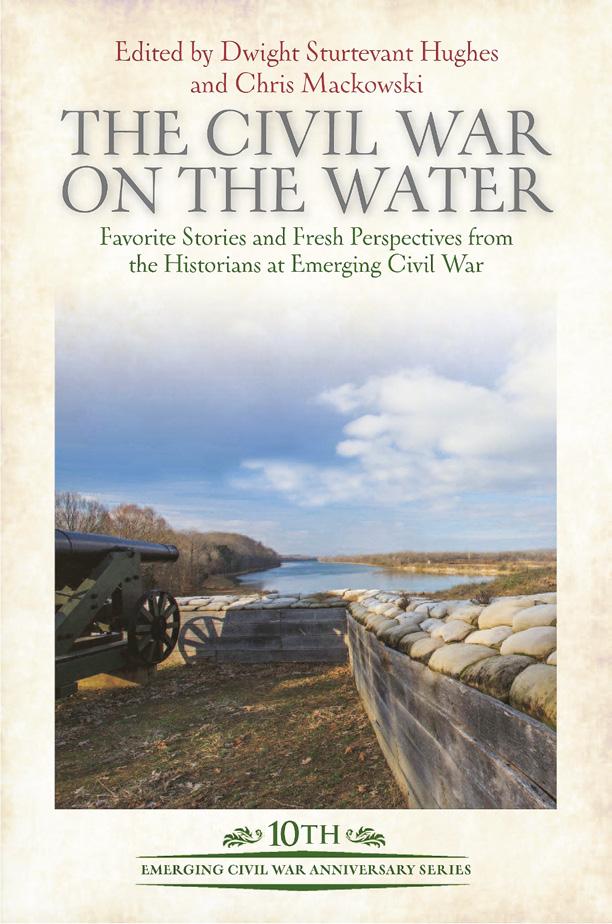
ECW Multimedia

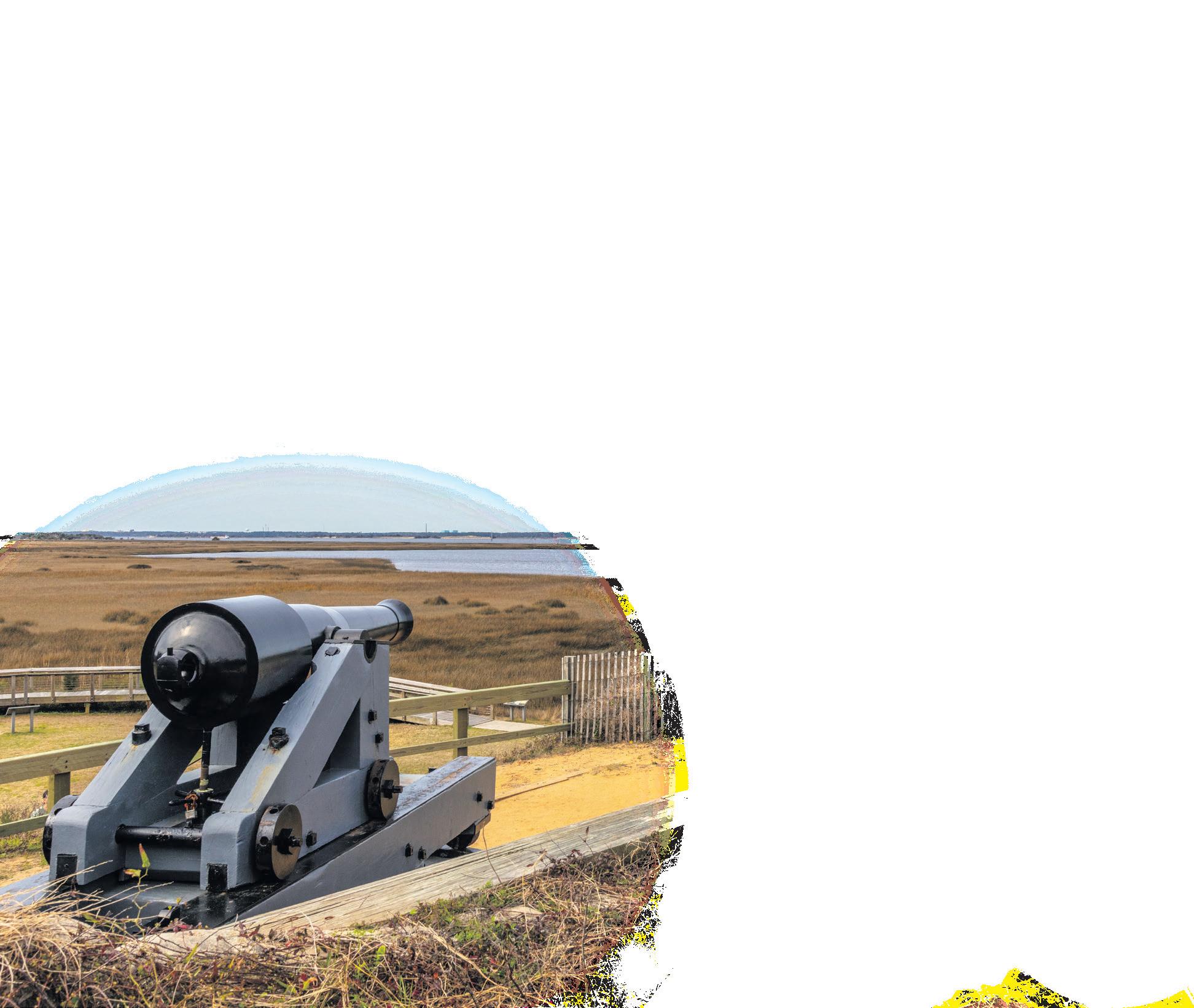
On the Emerging Civil War Podcast in May, we talked with









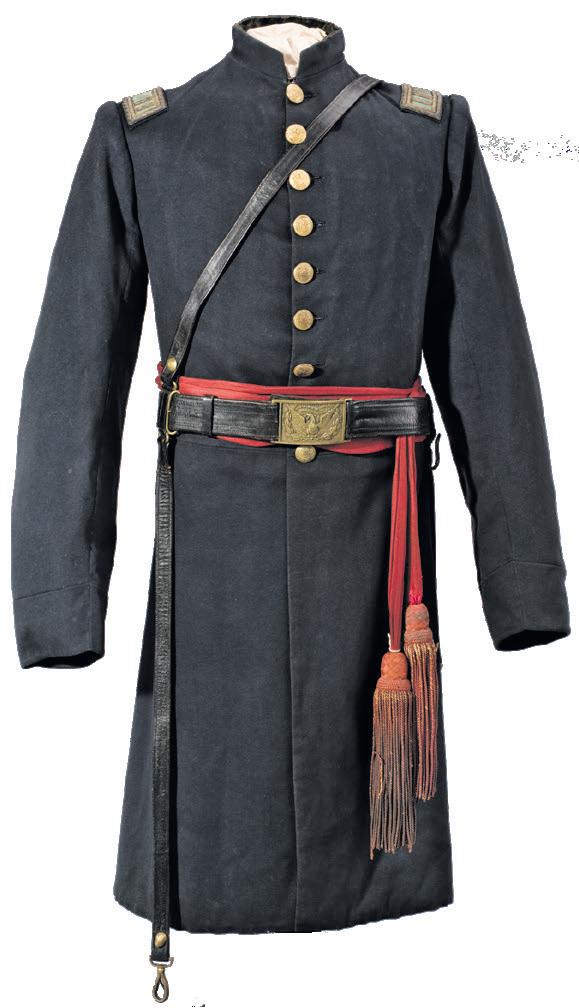
• living historian Curt Fields about how he, in his portrayals of Ulysses S. Grant, deals with Grant’s cigar smoking.

• historians Doug Crenshaw and Drew Gruber about their new book, To Hell or Richmond: The 1862 Peninsula Campaign.

The Emerging Civil War Podcast is available through Spotify, Apple Podcasts, and wherever fine podcasts are available. You can also subscribe to our podcast through Patreon (https://www.patreon.com/ emergingcivilwar), where we
by visiting our website: www. emergingcivilwar.com; you can mail us a check at the address below (make checks payable to “Emerging Civil War”); or you can make a gift through PayPal: com/donate/?hosted_button_ id=2L46N85FH8VWE.




29 July 2023 29 July 2023 CivilWarNews.com CivilWarNews.com Contact Mike at: 910-617-0333 • mike@admci.com Provenance a Must! Fort Fisher items wanted
The two newest titles from Emerging Civil War
Gina Denham of the Monuments for U.K Veterans of the American Civil War Association (left) visited with ECW’s Chris Mackowski at the American Civil War Roundtable of the U.K. in April.
Stream history on multiple devices Your favorite videos, wherever you want www.historyfix.com Escape into history through movies, documentaries, docudramas, and how-tos! Available on multiple devices Your favorite videos, wherever you want Try a 7 day free trial today and access exclusive content tailored to history buffs! Visit our website at: HistoricalPublicationsLLC.com
Finding Love In The Ruins Of War
By Joseph Wilson
A large lead ball fired from a musket inflicted a horrific injury when crashing into the human body. All the unfortunate soldiers who suffered such a gunshot wound likely wished they had never marched off to war. James Connell might be the exception. After suffering the misfortune of a being struck by a Confederate musket ball, the Ohio native found the love of his life.

Like most young men from Ohio, James Connell enlisted in the Union army after President Lincoln’s call for 300,000 volunteers to put down the rebellion. James signed on as a corporal to fight with the 124th Ohio Volunteer Infantry in September, 1862. Already 25 years old, his older age may have been a factor in entering the regiment with rank. Ohio provided the Union with a higher percentage of men from the ages of 18 to 45 than any other state. A total of 60% of eligible Ohio men joined the army to support the war effort.
The Buckeye state filled 198 infantry regiments with 320,000 patriotic boys ready to serve their country after Father Abraham’s plea to save the Union. From all over the state they answered the call to arms. Mostly from northeastern Ohio, the 124th gathered at Camp Cleveland along Lake Erie to be assembled into a fighting force. All the drilling and training would serve them well in the bloody action that awaited. By January 1, 1863, the regiment was mustered into Federal service.
Led by Colonel Oliver Payne, the 124th proudly marched out as a fine body of armed and uniformed troops. Attached to the Army of the Cumberland, the regiment fell under the overall command of General William Rosecrans.
After a stop at Louisville, Ky., Corporal Connell boarded a ship along with his Ohio comrades for a trip down the Ohio River that carried them closer to the seat of war in Tennessee.
The spring brought the mundane activities of marching, picket duty, and guarding wagon trains. Come summer, General Rosecrans began his campaign to drive General Braxton Bragg out of Tennessee. All felt pleased that a battle was brewing, a feeling that quickly dissipated.
Soon, they’d be before the enemy muskets questioning why they had been so eager.
Rosecrans succeeded in chasing Bragg from Chattanooga and followed the Southern

army into Georgia. The Union general finally caught up with Rebels along the banks of the Chickamauga Creek. General Bragg had no intention of withdrawing any farther. In a fight that had casualties second only to Gettysburg, the Union army suffered a devastating defeat.
At the September Battle of Chickamauga, James and the Ohioans felt a battle’s terror for the first time. Any Ohio soldier anxious to fight had their fill. The 124th suffered heavy casualties in Farmer Brock’s field, including a severely wounded Colonel Payne. James survived his baptism under fire unscathed and felt fortunate to have escaped intact. Defeat didn’t sit well with the Buckeye boys after their first real fight.
Regimental historian, Captain George Lewis later wrote, “It was, indeed, a sad hour. Two days before we had gone into this conflict with full ranks and high hopes of victory. Now we
were silently stealing away under cover of the darkness.” It didn’t take long for the 124th to redeem themselves
In eight weeks, the sweet taste of victory replaced the demoralizing sting of defeat for the 124th Ohio. On November 25, in the Battle of Missionary Ridge, the Ohio regiment was one of the lead units that charged the heavily defended ridge unrestrained and without orders to capture the ridge. The pride felt by the regiment when departing Camp Cleveland had been restored.
Captain George Lewis stated, “Every soldier of the 124th was instantly in position, and as the silvery notes of the bugle sounded the forward, the 124th, with clutched muskets, rushed forth to the charge of death. As soon as we emerged from the line of timber the rebel guns opened on us, and the whole ridge blazed like a volcano.” By securing Missionary Ridge the Federals controlled Chattanooga. Once again, Corporal James Connell dodged Confederate shot and shell.
Chattanooga served as a logistical base for General Sherman’s upcoming surge into Georgia. In the spring of 1864, the 124th marched into Georgia with Sherman while attached to General William Hazen’s brigade of the IV Corps. Connell now

marched with sergeant’s stripes on his sleeves.
The boys in the regiment remembered fighting in Georgia at places like Rocky Face Ridge and Resaca, but it was the Battle at Pickett’s Mill on May 27, 1864, that the survivors remembered due to an ill-advised charge. Unbeknownst to Union officers, 10,000 Confederates entrenched under General Patrick Cleburne waited for Hazen’s 1500 man brigade to move forward for the attack. The poorly planned action resulted in a humiliating rout. The regiment suffered their greatest loss in the charge against Cleburne’s superior numbers. Hazen’s Brigade, including the 124th Ohio, was carelessly sacrificed. Casualty reports listed 4 officers killed, 14 enlisted men killed, 44 wounded, and 10 missing. One casualty was a severely wounded Sgt. James Connell. For Connell, fate and a musket ball intervened at Pickett’s Mill to dramatically change the course of his life.
With darkness falling over the Pickett’s Mill battlefield, a counterattack by General Cleburne pushed back the Union line leaving the Confederates in possession of the battlefield. Injured Union soldiers cried out in vain to fleeing Union soldiers to carry them off the field, but to no avail. All the wounded fell
30 CivilWarNews.com July 2023 30 July 2023 CivilWarNews.com
Maj. Gen. William S. Rosecrans. (Library of Congress)
Grave of Cassandra, Oakland Cemetery, Atlanta. (FindaGrave.com)
Trenches located on the Pickett’s Mill Battlefield State Historic Site, Dallas, Ga. (Wikipedia)





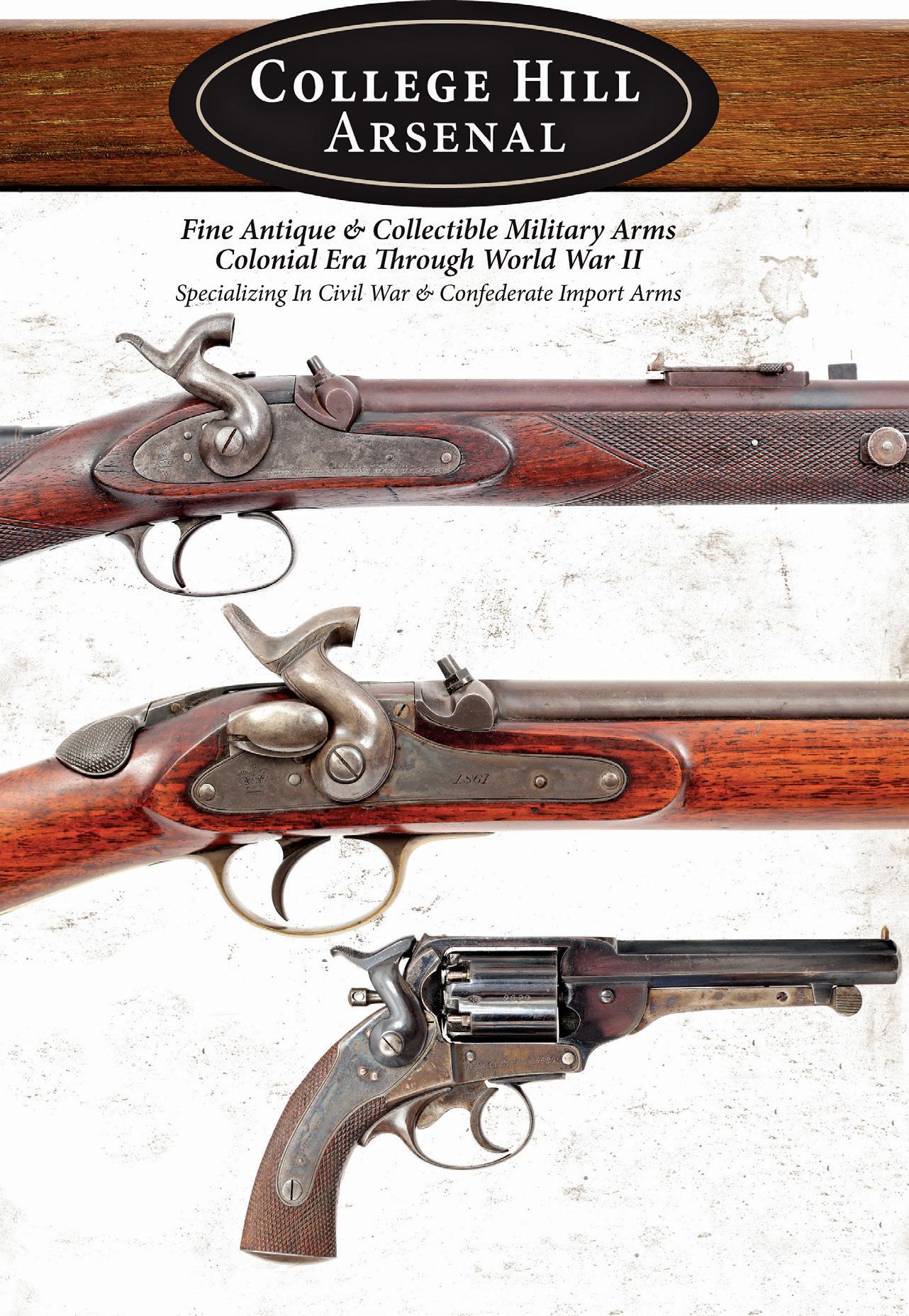

31 July 2023 31 July 2023 CivilWarNews.com CivilWarNews.com Want to Advertise in Civil War News? call 800-777-1862 or email us at ads@civilwarnews.com Visit our website at CivilWarNews.com and it will take you to HistoricalPublicationsLLC.com. The calendar is online and an updated before the print issue. To submit an event send it to: ads@civilwarnews.com www.CollegeHillArsenal.com Tim Prince College Hill Arsenal PO Box 178204 Nashville, TN 37217 615-972-2418 www.CollegeHillArsenal.com
into Southern hands. Sgt. Connell was now a prisoner of war still bleeding from a wound inflicted by a Confederate musket ball.
James was loaded onto a wagon bound for Atlanta where he received treatment for his injuries. Many wounded Confederate soldiers and Union men fell under the care of Dr. Samuel Stout’s hospital system. Doctors were in short supply, but many young women of Atlanta served as nurses in caring for the soldiers. Being both wounded and a prisoner should have been a depressing and a debilitating experience for any soldier. But for one Union sergeant in Atlanta, suddenly being a captive and wounded didn’t seem so bad.
While James waited for treatment in a makeshift hospital, she walked into his room. Her name was Cassandra and she served as one of the caregivers to
tend to James. The young nurse made quite an impression on the wounded Yank. Cassandra was a 24 year old orphan, whose father was killed early in the war. Her mother had left with another child on a ship bound for England.
Cassandra stayed behind along with her younger brother and sister. All three siblings were on their own in Atlanta. Being resourceful, she found a means of support caring for the wounded.
The fortunes of war never seem to smile on enlisted men, but for James, a treasure seemed at hand. Times spent with Cassandra proved to be the best medicine. A kind word and a tender touch offered daily can make the spirit soar. Emotions seemed to be stirring in the heart of a bed ridden Yankee. Cassandra had taken a liking to the Sergeant.
Days and weeks passed with a bond forming between the nurse
and her patient. Their budding relationship may have been a secret affair. A woman in the South romantically involved with a Yank may have been frowned upon by Southern men. A stolen kiss likely transpired behind closed doors. One can imagine the glee James felt when Cassandra entered the room. Love was taking hold in two individuals unexpectedly drawn together by the misfortunes of war.
With Sherman moving closer to capturing Atlanta in early September 1864, Dr. Stout moved all wounded Confederates out of Atlanta. Any Yankees in prison or the hospital system were left behind. Cassandra now had fewer patients and more time for James. She had additional time not only in treating his healing wound, but also idle time for talking and laughing.
Feelings blossomed in the
hearts of two youthful souls touched by the irresistible power of love. Connell’s health was steadily growing stronger, so was his affection for Cassandra. Thoughts of being a prisoner didn’t matter anymore. Information circulating around the city suggested Sherman’s capture of Atlanta was imminent. With his wound nearly healed, a forced separation from Cassandra wasn’t far off as James still had an obligation to the Federal Government.
General Sherman’s army liberated Atlanta on September 1, 1864. Connell was now a free man, but he still belonged to the Union army. To stay in Atlanta may not have been an option. Now able to travel, he left Atlanta for Cincinnati. Boarding the train and leaving his new love had to be devastating for the love-struck soldier. But Sgt. James Connell
promised never to forget his beloved Cassandra.
During the final months of the war Connell rehabbed back home and wasn’t fit for service.
Thoughts of Cassandra never strayed far from his mind. Plans for returning to Atlanta reigned supreme. After the war ended, Connell’s records show he was discharged on July 9, 1865. Most of the remaining boys of the 124th Ohio received the proper “mustered out” designation on the same date. It’s likely Connell’s discharge came with a surgeon’s certificate.
Once free from the constraints of his army obligations, James hurried back to Atlanta to be united with his precious Cassandra. A long awaited reunion brought two hearts together never to be separated again. The absence only carried their love to new heights. Their adoration for each other flourished in a country without war. Wasting no time, the loving couple married in Atlanta.
Cassandra brought into the marriage a readymade family counting her younger brother and sister. James packed up his new family and traveled back to Cincinnati. Eventually, three more daughters joined the family. In his hometown, he established himself in a successful steam boat fitting business.
With his success in the business world he was able to buy a tract of land on Peachtree Street in Atlanta. It was the same ground saturated with the sweat and blood of Confederate and Yankee soldiers who clashed in Sherman’s campaign to capture Atlanta. It wasn’t long before the Connell family packed up again and headed south back to Atlanta. Perhaps Cassandra and her siblings longed for friends in Georgia. Whatever the case, James and Cassandra made their permanent home in Atlanta. With James no longer a prisoner, the husband and wife freely continued an enduring love in Atlanta after a tumultuous war had finally ended. “Till Death Due Us Part” proved to be a promise kept. The couple had attained a love sought after and envied by every young man and woman.
From war comes great tragedy. Too many families found sorrow and pain in the Civil War. The Sergeant and his Nurse found each other!
Sometime around Nov. 8, George Barnard took a number of shots of a train being loaded at Atlanta’s downtown rail depot, called the “car shed.” Everyone knew that soon Sherman would be abandoning Atlanta, leading his army away on a march whose destination only a few high-ranking officers knew. But all could see the quartermaster and commissary officers loading northbound trains with supplies and equipment that would not be carried in wagons in the forthcoming march. The perspective is a long one, encompassing army wagons to the left, the car shed, and right behind it the light-colored Georgia Railroad Bank Agency and the three-story “Concert Hall”—which really wasn’t a concert hall (the Atheneum was). (Caption by Stephen Davis, photo by George Barnard, Library of Congress)

32 CivilWarNews.com July 2023 32 July 2023 CivilWarNews.com
Joseph F. Wilson is a member of the General Meade Society and the Old Baldy CWRT. He lectures on various topics of the Civil War. YouTube channel – “Joseph F. Wilson.” Contact the author at joef21@aol.com.
By George Franks
During the morning and early afternoon of July 14, 1863, the four brigades of Confederate General Henry “Harry” Heth’s Division, Hill’s Corps, battled Federal cavalry under Generals John Buford and Judson Kilpatrick. Two miles from the river crossing, Heth ordered Generals James Johnston Pettigrew’s North Carolina Brigade, Joseph Davis Mississippi Brigade, and Col. John Brockenbrough’s four regiments of Virginia Infantry. The decimated remnants of Gen. James Archer’s Tennessee and Alabama Brigade was led by Lt. Col. S.G. Shepherd. Heth had orders to hold back all Federal forces from his rear guard position on the road to the Falling Waters Potomac River crossing. Artillery, followed by General James Longstreet’s Corps and General A.P. Hill’s Corps had not yet completed crossing into
Battle of Falling Waters 1863
Virginia (now West Virginia) by way of the newly rebuilt pontoon bridge.
The battle began with a bold but disastrous charge ordered by Kilpatrick and carried out by Companies B and F, Sixth Michigan Cavalry, part of General George A. Custer’s “Michigan Wolverines.” During this initial fighting, Pettigrew was mortally wounded, Confederate soldiers and battle flags were captured, and a Federal Medal of Honor was won. By early afternoon, under orders from Hill, Heth’s Division withdrew to the river and crossed, destroying the bridge as the last North Carolina soldiers reached the Virginia shoreline.


Federal cavalry supported by light artillery remained in Maryland until crossing at Berlin days later. President Abraham Lincoln was reported to be deeply depressed as he had hoped General George Meade would
destroy Gen. Robert E. Lee’s army before it crossed back into Virginia.
The Battle of Falling Waters 1863 Foundation, Inc. a Maryland-based 501(c)3 is committed to saving, preserving, and interpreting the site of the final battle of the Gettysburg Campaign in Maryland.
See the events section for a one-day commemoration held on the site on July 8.
33 July 2023 33 July 2023 CivilWarNews.com CivilWarNews.com Want To Advertise In Civil War News? Email us at ads@civilwarnews.com Call 800-777-1862
Gallant charge by two companies of the 6th Michigan on Tuesday morning on the rebel rearguard, near Falling Waters...” Edwin Forbes, artist, 1863. (Library of Congress)
General Heth. (Library of Congress)
Civil War News book reviews provide our readers with timely analysis of the latest and most significant Civil War research and scholarship. Contact email: BookReviews@CivilWarNews.com.



U.S. Grant’s Mailman: Messenger of Joy
Delivered Under Fire: Absalom Markland and Freedom’s Mail. By Candice Shy Hooper. Illustrated, Notes, Bibliography, Index, University of Nebraska Press, www. nebraskapress.unl.edu, 2023, 317 pp., hardcover, $36.95.
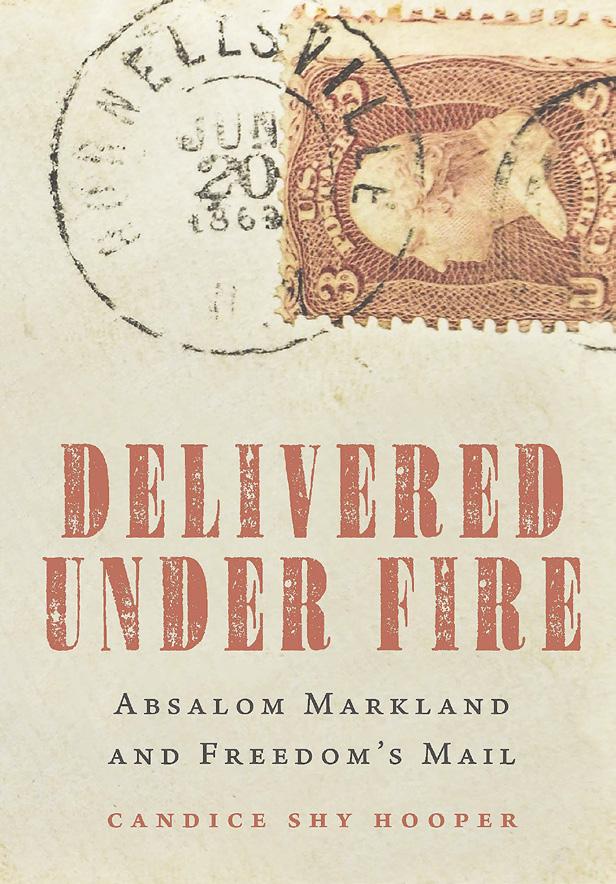
Reviewed by Wayne L. Wolf
Fascinating and Exciting Regimental History
The 117th New York Infantry in the Civil War: A History and Roster. By James S. Pula. Photos, maps, notes, indices, bibliography, index. 336 pp., 2023. McFarland & Company, Inc. www.mcfarlandpub.com Paperback. $49.95.

Reviewed by Robert L. Durham
to his commanders, and provided safety for funds shipped home to destitute loved ones. In addition to these functions, he supervised the creation of home mail delivery in 1863, the creation of the Postal Money Order system, and the use of railroads, ships, carriages, and even wagons to see the mail delivered to the troops. By November 1862 he was handling upwards of 180,000 soldier’s letters a day.
Candace Shy Hooper penned a thoroughly researched biography of Absalom Hanks Markland, the boyhood friend of Ulysses S. Grant, who became an unsung Civil War hero. While bearing the honorary title of Colonel, bestowed by Gen. Grant, he used his position as postal agent to keep the mails flowing during the Civil War to the endless thanks of the soldier in the field.
His early life as a schoolteacher, lawyer, steamboat man, newspaper reporter, clerk, and political activist illustrated not only his diverse interests but paled in comparison to the job that would define his life, Grant’s mailman. During the Civil War, he was with General Grant from Fort Henry to City Point and with General Sherman in Savannah and on his march through the Carolinas. During those four years he created the most efficient military mail system ever devised. His efforts kept soldiers and their families connected, passed important messages to generals, took confidential messages from President Lincoln
Yet, his influence was felt beyond his success with the mails. He helped Horace Greeley disseminate newspapers to all soldiers in the field supporting Lincoln’s reelection campaign. He assisted President Grant in obtaining the executive powers needed to combat the KKK during Reconstruction. He acted as an advocate for those seeking pensions after the war and for freed slaves seeking Civil Rights. He corresponded with numerous military leaders after the war to correct errors that appeared in newspapers, articles, and books. He defended his friend General Grant in his royalty battle with Adam Badeau, and while deaf at the end of his life, used his pen to set the war record straight. He was one of the few civilians with an insider’s view of the military during the war.
This book is well researched, historically sound, and very readable. It is a welcome addition to an area of the Civil War usually relegated to a footnote in military biographies. It should be a welcome addition to every historian’s bookshelf and is highly recommended.
Dr. Wayne L. Wolf is Professor Emeritus at South Suburban Collee and the author of numerous Civil War books and articles including Two Years Before the Paddlewheel, Heroes and Rogues of the Civil War, and The Last Confederate Scout, He is a frequent lecturer at Civil War roundtables and researches the lives of the common soldier for publications.
With the exception of the Petersburg Siege, the 117th New York did not take part in any major campaigns or battles. This is fortunate, for the 117th took part in many little-known actions, and the details James S. Pula discovered and reveals on these battles is outstanding. Pula’s bibliography is large, especially in primary sources. He has found an amazing number of first-person accounts in diaries and letters.
The 117th New York, also called the 4th Oneida because
they were the fourth regiment raised in Oneida, served first in the forts surrounding Washington, DC. There, they heard the guns at the Battle of Second Bull Run and saw the defeated Union regiments returning to the capital. Fearing they were missing out on the war, they served in the Washington defenses for eight months, before finally being ordered to Virginia. Instead of taking part in the Gettysburg Campaign though, they spent the end of June and beginning of July 1863 making a demonstration against Richmond to keep troops occupied there so they could not join General Robert E. Lee’s Army of Northern Virginia in their Northern invasion.. Next, the 117th Infantry sailed to Morris Island, SC, where they took part in unsuccessful Federal attempts to capture Charleston. In April 1864, they boarded ship again, returning to Virginia in time to take part in General Ulysses S. Grant’s Overland Campaign. Assigned to General Benjamin Butler’s Army of the James, they took part in the Bermuda Campaign. From June to September 1864, the 117th took part in the dreadful trench warfare of the Siege of Petersburg. There, they experienced the enervating, continuous boredom and danger, never able to relax, each man not knowing when he might be picked off by a Rebel sharpshooter. September 29, 1864, they assaulted Confederate fortifications at Chaffin’s Farm, followed by an attack on Fort Gilmer.
December 1864 found the 4th Oneida aboard ship to take part in the assault on Fort Fisher, NC. The capture of Fort Fisher would mean the fall of Wilmington, NC. As the last port on the East Coast open to blockade runners, it was a major source of supply for Lee’s army. Grant needed the port closed. The First Battle of Fort Fisher, in December 1864, resulted in a failure. The outcome of the Second Battle of Fort Fisher, in January 1865, was a hard-fought, bloody success. The battle, although little known and written about, was one of the most violent of the Civil War, ending in a tough hand-to-hand contest. Pula’s description of the Union assault is masterful. His telling, with the incorporation of eyewitness accounts of participants on both sides, cannot be excelled. I highly recommend The 117th New York Infantry, one of my favorite regimental histories, and I have read many. The regiment experienced aspects of the Civil War not usually studied, and James S. Pula delivers a virtuoso telling of those littleknown campaigns and battles. In his writing, Pula seamlessly incorporated eye-witness descriptions into his narrative.
Robert L. Durham is retired from the Defense Logistics Agency and is a freelance writer who has had many articles published in numerous historical publications. A life-long history buff, he recently went back to college for a history degree.
l34 CivilWarNews.com July 2023 34 July 2023 CivilWarNews.com
lPromoters of Quality Shows for Shooters, Collectors, Civil War and Militaria Enthusiasts Mike Kent and Associates, LLC • PO Box 685 • Monroe, GA 30655 (770) 630-7296 • Mike@MKShows.com • www.MKShows.com December 2 & 3, 2023 Middle TN (Franklin) Civil War Show
Mike@MKShows.com • www.MKShows.com Admission Coupon To Any MKShows Event $1 Off 770-630-7296
Another Good Battle Book from Dr. Hess
July 22: The Civil War Battle of Atlanta, by Earl J. Hess, University Press of Kansas, kansaspress.ku.edu, 2023. Hardcover, $44.95.

Reviewed by Stephen Davis
another similar book so soon after the last one. He declares his as more thoroughly researched, “tracking down every bit of information.” If that’s true, I can’t imagine the need for any other book on this fight.
After his failed attack at Peachtree Creek July 20, Hood saw another opportunity when Maj. Gen. James B. McPherson’s Army of the Tennessee approached Atlanta from the east without cavalry guarding his left. Hardee’s Corps marched all night to launch a flank attack early on the 22nd. The Confederates struck around noon, but by then a worried McPherson had taken steps to protect his line.
and invited the Rebel attack. Hood’s battle plan, calling for Hardee’s all-night march, was unrealistic.
The short history of the 53rd New York
“One of the most remarkable flank movements attempted by any army during the Civil War.”
“Hood’s greatest effort to stop Sherman.”
“Some of the most dogged and costly combat of the entire war.”
“One of the most interesting battles in American history.”
In this new work, Earl Hess is full of superlatives for the bloody battle fought east of Atlanta by the forces of Hood and Sherman on July 22, 1864. After that, he delivers a first-rate tactical history of one of the three big engagements of July 20-28, when Hood tried unsuccessfully to drive the Yankees away. The other two battles, Peachtree Creek and Ezra Church, bear distinctive names. For this one, first termed “Atlanta” by Grenville Dodge, I rather like Albert Castel’s suggestion of “the battle of Bald Hill,” although the name has yet to stick.
Students of the Atlanta Campaign will want to know how Hess’ book compares to Gary Ecelbarger’s The Day Dixie Died: The Battle of Atlanta (2010). Actually, the real question is why the prolific Dr. Hess should write
The Southerners, surprised to find enemy infantry positioned and ready, nevertheless made initial gains, capturing guns, prisoners, and killing General McPherson himself. Despite repeated Confederate assaults, and a secondary attack by Frank Cheatham’s Corps about 3 p.m., the Army of the Tennessee held onto its key position, a “bald hill” at the south end of the Federal line. When the Bald Hill came under attack from different directions, Federals had to jump from one side to the other over their parapet; they came to call it “Hardee’s Tactics.”
The Southerners withdrew by dark, and Hood lost another big battle. Casualties were 3,722 U.S. (15% of 25,000 engaged); Confederates lost 5,549 (18% of 30,000). Interestingly, though Hess occasionally disagrees with Ecelbarger on some details, he repeatedly cites his calculation of casualties.
With the narrative set, one looks for an author’s particular flavorings. Hood “had been promoted well above his competence level” (the famous Peter Principle). Sherman brought on the battle, and indirectly caused the death of his friend Mac, because he “was too obsessed with wrecking railroads”; sending Kenner Garrard off railroad-raiding exposed McPherson’s left flank
Despite Hess’ enormous research, there are instances when he frankly confesses “we know very little of their movements.” At the same time, he misses some sources. One of them is the letter of Lt. Robert M. Gill, 41st Mississippi, that Bell Wiley edited for CWTI back in April 1964. Gill wrote his wife that “I never enjoyed a thing better in my life. We had the pleasure of shooting at Yankees as they ran without being shot at much.” Gill was part of the Confederate assault that broke the Yankee line at the Troup Hurt house.
Hess includes lots of colorful vignettes, such as the fistfight between Union generals Sweeny and Dodge, though he left out some colorful dialogue, as when Sweeny called his superior officer an “inefficient son of a bitch.” In the cavalry fight at Decatur, he misses the writing of Mary Gay, who was an eyewitness.
Hal Jesperson’s lucid maps, conveniently set within the text, once again add much value. A not-to-be-overlooked treat is that Dr. Hess routinely writes the captions for his complementary illustrations, which are wellplaced alongside the narrative. The effect is to further strengthen this fine battle-book from the University Press of Kansas.
The author concludes with a chapter on the battle’s commemoration in the Cyclorama, the big painting produced by German artists in Milwaukee in 1886. Ironically, Hess considers the “new” Cyclorama at the Atlanta History Center, with its downplaying of the battle’s historical narrative, as part of current “efforts to take down or remove Lost Cause symbols.” But as many of us say, you take down the symbols, you erase the history.
We’ve still got books, though. And Earl Hess is writing a lot of good ones.
With ten Civil War books to his credit, Stephen Davis of Cumming, Ga., is trying to catch up with the prolific Dr. Hess. But he probably won’t.

After Steve bought Hess’ biography of Braxton Bragg (2016), his cat urinated on the book—justifying, he supposes, Hess’ claim that Bragg was “the most hated man in the Confederacy.”
Lionel Jobert and the American Civil War: An Atlantic Identity in the Making. By Stephen D. Bosworth. Illustrated, bibliography, index, notes, 189 pp., State University of New York Press, 2021, hardcover.
Reviewed by Wayne L. Wolf
John Tucks could not cross the sand bar to Cape Hatteras into Pamlico Sound and was ordered to return to Fort Monroe. Here General John Wool ordered the ship to Annapolis. After spending a month at Fort Madison drilling and parading, an inspection report found the 53rd disorganized, demoralized, and incompetently managed. This sealed the doom of Jobert’s regiment. General George McClellanordered the regiment disbanded on March 1, 1862, ending Jobert’s quest for fame.
Jobert tried unsuccessfully for the next two years to be appointed to a different military command. Failing in this, he took a job in the Treasury Department but shortly after headed to Philadelphia to establish himself as a patent solicitor. After five years and in debt, a condition that characterized him most of his life, he left for England, never to return.

Steven Bosworth has penned a definitive biography of Lionel Jobert d. Epineuil, Colonel of the 53rd New York Volunteer Regiment. Born in France, his life began on the sea, rising to the rank of a ship captain au long cours for the French Merchant Marine. From there to leading a Naval School in Haiti, he arrived in New York with his mistress, Mrs. Lloyd. Always looking to achieve a position where he could live the life of a gentleman, engage in leisure, and be admired for his legacy as a count, he sought out a position that would cement his position in society.
Thus, at the outset of the Civil War, he managed to get appointed as Colonel of the 53rd New York Volunteer Regiment, recruited French officers and all nationalities of privates, and outfitted them as d’Epineuil’s Zouaves.
After training on Long Island, his regiment, already plagued by desertions, infighting, and resentment at all French officers, left aboard the barge John Tucks. This boat was a filthy, crowded, vermin infested ship that was to transport the regiment to assist General Burnside in his seizure of Roanoke Island. However, the
Here he used his theatrical talents to try and cement his image as a cultured gentleman, married the daughter of a prominent family, and tried to live the life he always dreamed of-as a bon vivant, man-about-town. He died suddenly in 1881 never achieving the fame or position his ambition desperately craved.
Stephen Bosworth does a commendable, deeply researched job compiling this biography of Jobert. For Civil War historians, the service of the 53rd New York Volunteer Regiment comprised ninety days of doing nothing to prosecute the war. For those who desire to read about a failed regiment, characterized by internal dissension, desertion, jealousy, and idleness, this is a book to read. For general readers of history, it encompasses a small, select audience.
Dr. Wayne L. Wolf is Professor Emeritus at South Suburban College and the author of numerous Civil War books and articles including Two Years Before the Paddlewheel, The Last Civil War Scout and Soldiers, Sailors and Scoundrels of the Civil War. He is past president of the Lincoln-Davis Civil War Roundtable.
35 July 2023 35 July 2023 CivilWarNews.com CivilWarNews.com Want to Advertise in Civil War News? call 800-777-1862 or email us at ads@civilwarnews.com
Everything You Always Wanted to Know about Mary Lincoln
Mary Lincoln Demystified: Frequently Asked Questions about Abraham’s Wife. Donna D. McCreary. 366 pp., 2022. Southern Illinois University Press, $26.95 (Paper)
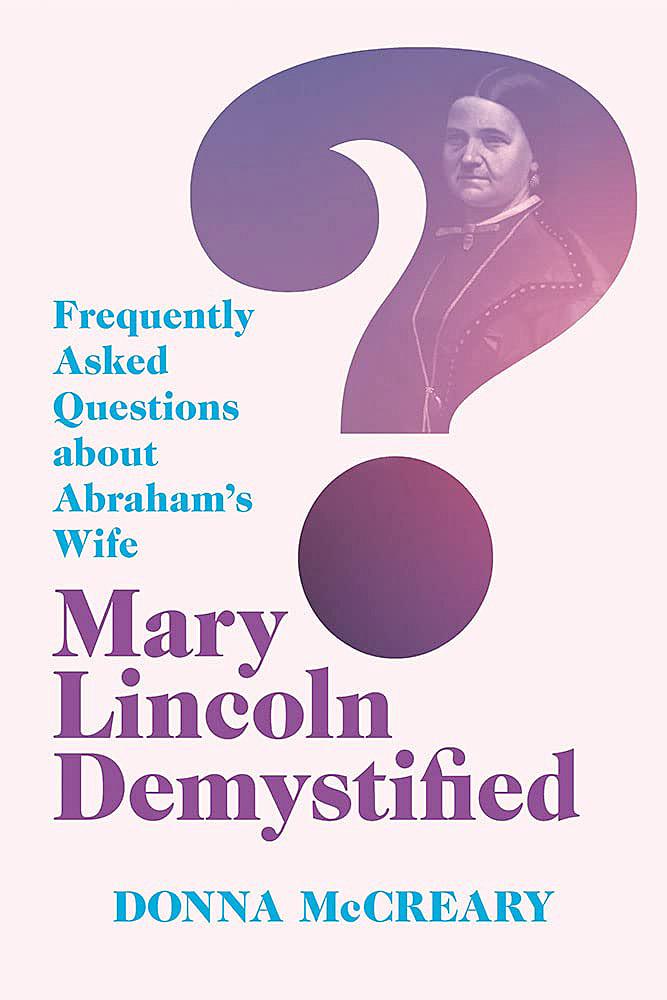
Reviewed by Sal
Cilella
to Know About Birds …But Were Afraid to Ask (2005). You get the idea.
Now comes Donna McCreary with her Mary Lincoln Demystified: Frequently Asked Questions about Abraham’s Wife. It’s a mind-boggling potpourri of important facts and trivia from a woman who has portrayed Mary Lincoln as an interpreter for twenty years. She is an author, lecturer, and performer and this book is a culmination her myriad experiences and talents. Her many enthusiastic audiences prompted her to put pen to paper and lay out in pristine detail everything she could discover about the wife of the 16th president.
Slavery, Freedom, and Reform in the Midst of War
about the changes in her family, the destruction of her life. She lost her comforter, her lover, her husband, her all.” (110)
In 1972, physician and surgeon with a specialty in psychiatry, Doctor David Reuben published his ground breaking and eyeopening book entitled Everything You Always Wanted to Know About Sex: But Were Afraid to Ask. It has been followed by imitators with titles such as Everything You Always Wanted To Know About Acting (But Were Afraid To Ask, Dear) [2013]; Everything You Always Wanted to Know about God (But Were Afraid to Ask): The Jesus Edition (2009); and Everything You Always Wanted
McCreary’s knowledge of Mary Lincoln is encyclopedic and deep. The question of Mary’s sanity is covered extensively, encompassing an entire chapter. As sad as her night of horror April 14, 1865 was, the ordeal with her perceived mental issues was equally tragic. She couldn’t understand why her surviving son Robert would label her a lunatic and have her committed to an institution. Was she insane? McCreary comes down on the side of “perhaps” and “perhaps not.” Critics and authors have speculated that Mary suffered from everything from PTSD to syphilis. (138)
Nothing is left untouched, Mary’s attitudes toward African Americans and slavery are dealt with as are her relationships with her family, what became of the Lincoln family afterward; her love interests before Abraham; her extravagance; her temperament; and her personality. The first five chapters are biographical with chapter five dealing exclusively with the assassination. McCreary fields such questions as who took Mary to the Peterson House; where were Tad and Robert at the time of the assassination; and eventually what Secretary of War Stanton really said. She maintains that whatever he said “Now he belongs to the Ages” or “Now he belongs to the angels,” Stanton’s comment “demonstrates the great admiration and respect that Stanton felt for Lincoln.”
(106) The author presents a wellbalanced view of Mary Lincoln, her foibles, her moods, her joys and her sorrows. Mary wrote of that night and McCreary points out that although the evening was a political and historical earthquake, “For Mary, it was
One of the “burning questions” often asked by Lincoln scholars and Civil War trivia masters is: Did Lincoln really say that “One ‘d’ was good enough for God, but not for the Todds?” It doesn’t appear that McCreary chose to wade into this historical debate. Perhaps she was comfortable with Stephen Berry’s extensive research revealed in the quote in his House of Abraham: Lincoln and the Todds, a Family Divided by War. Berry maintains that the original line probably came from governor David Tod of Ohio and Lincoln appropriated it and used it when the occasion presented itself. According to Berry, “the gag has existed for as long as there have been Todds and Tods.” (197).
This is not a book for that big lounge chair in your study as a winter fire warms you as you curl up with it and that glass of brandy. But it is one you need to have at the ready to answer all the questions you always wondered about Mary Lincoln, the Todds, and the Lincolns. Admirably, when McCreary doesn’t know the answer, she doesn’t guess but offers the pros and cons of the issue. She has constructed the work so that the reader can dip into the text at any point. It’s probably the best and only accessible resource on Mary Lincoln.
Navigating Liberty: Black Refugees and Antislavery Reformers in the Civil War South. By John Cimprich. 1 halftone, 2 maps, notes, index, 248 pp., Louisiana State University Press, www.lsupress. org, $45.00.
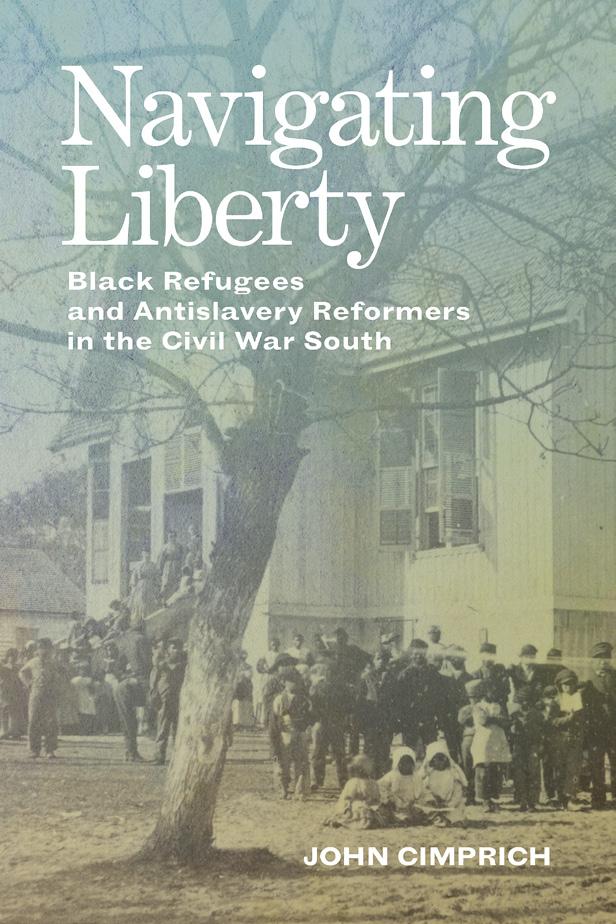
Reviewed by Paul Taylor
educated women who, as the author points out, considered this type of moral work as a more fulfilling calling than staying home and performing domestic work for kinfolk. Regardless of the reformer’s gender, the work was often hard, dirty, and occurred from dawn to well past dusk. One woman wrote of delivering food to the needy by “trudging through the mud as no other white woman of my status would do.” Nonetheless, the assistance they offered and its eventual acceptance became a give and take process that was far more complex and quarrelsome than readers may have previously thought.
After 43 years in the museum field, Cilella devotes his time collecting American prints and maps and writing. His most recent books are Upton’s Regulars: A History of the 121st New York Volunteers in the Civil War (U. Press Kansas, 2009). His two-volume Correspondence of Major General Emory Upton, (U. of Tennessee Press, 2017), received the 2017–2018 American Civil War Museum’s Founders Award for outstanding editing of primary source materials. Upton’s love letters 1868-70, (Till Death Do Us Part) was published in 2020 by the Oklahoma University Press. His current book, the memoirs of Dewitt Clinton Beckwith of Upton’s Regulars (McFarland Press) was published May 2023.
Throughout the Civil War’s four years, slaves across the South who escaped into Unionheld territory invariably began the slow process of learning what freedom really meant. In particular, they had to understand how to integrate themselves into a white-dominated, military-led society that often seemed to care little for their social or physical welfare. Yet at the same time, hundreds of northern antislavery reformers, both white and free blacks—trekked southward to assist these destitute and illiterate refugees in making that muddy transition from slavery to freedom. Those activists often consisted of unmarried yet
The Christian values, homefront practices, and racial stereotypes the reformers brought with them generated some initial internal discord over strategy. Paternalists argued that the reformers needed to maintain tight guidance and control over blacks due to the latter’s degraded condition. Laissez-fare proponents argued for offering self-help and choices to the escaped though with minimal intervention from whites. A third group, the egalitarians, advocated for immediate equal rights for blacks. Northern free AfricanAmericans certainly fell into this last camp though very few whites did initially.
The three differing perspectives certainly clashed with the needs and desires of their black audience. As slaves, black men and women were forced to adopt a cautious and wary attitude in their dealings with whites. Now as freed people, they often resented the reformers’ authoritarian
Eliza Frances Andrews (1840–1931) received a strong education and was a successful writer and educator. Her War-Time Journal of a Georgia Girl surely ranks among the most observant and intelligent wartime memoirs by a Southern woman.
Edited with commentary by Stephen Davis, I Thank the Lord I Am Not a Yankee includes selections of her wartime and postwar journals which are most expressive of her Confederate patriotism and Southern pride.

February 2023 • $35.00, hardback Stephen Davis is author of ten books on the Civil War, most of which treat the Atlanta Campaign. His two recent volumes on Confederate General John Bell Hood have won several prizes, including the Fletcher Pratt Award of the New York CWRT.
www.mupress.org
866-895-1472 toll-free

www.mupress.org

36 CivilWarNews.com July 2023 36 July 2023 CivilWarNews.com
“I Thank the Lord I Am Not a Yankee...”
attitudes or racial preconceptions. The result was that on occasion freed people chose to reject any educational or vocational aid offerings, instead seeking greater autonomy over their movements and actions. The famous AfricanAmerican missionary, Sojourner Truth, for example, on occasion considered her fellow blacks to be disgracefully dependent on white charity. The fact that a war was still raging generated opportunity and change yet often resulted in stubborn challenges and imperfect results.
Cimprich sets his work within the war’s 1861-65 timeframe while geographically, it primarily focuses on federally occupied territory within the Confederacy where slavery was still present. He points out that in the war’s early years of 1861-62, relatively few blacks sought freedom within the four loyal slave-holding Border States, as most federal garrisons there refused to welcome them. Those who escaped into federal lines elsewhere, along with the reformers on hand to assist them, faced immediate challenges regarding how best to provide necessities such as food, clothing, housing, and medical care. As the war wore on, the reformers continuously sought to instill their values and beliefs into the freedmen, many of which they believed would require significant elements of paternalistic supervision. For their part, blacks accepted those ideas they found meaningful though they also clung tenaciously to customs, thinking, and traditions found within their own culture. Clashes between the two groups sometimes resulted.
In this engrossing study, the author skillfully analyzes the sometimes rocky relationship between northern reformers and the enslaved people of the South who escaped to freedom. In modern jargon, the two groups often appeared to be “frenemies,” each relying upon yet pushing the other for their own desired ends.
Cimprich’s thorough work adds a fresh analysis to black selfemancipation, slavery’s end, and the long journey to racial equality within the United States.
Paul Taylor is an award-winning author of eight books pertaining to the Civil War era. His current manuscript is titled “Tis Not Our War:” Avoiding Military Service in the Civil War North and is currently under publisher review.
After 150 Years Words Still Resonate Today
A
Nation So Conceived
Abraham Lincoln and the Paradox of Democratic Sovereignty
–
, by Michael P. Zuckert. 2023, University Press of Kansa, Lawrence KS. 397 pp. $34.95.
Reviewed by Charles H. Bogart
The book opens with an examination of the words and phrases contained in Lincoln’s 1838 speech to the Springfield Young Men’s Lyceum “On the Perpetuation of Our Political Institutions.” This is followed by a discussion of Lincoln’s 1842 address to the Washingtonian Temperance Society in which he said he hoped that one day, “there shall be neither a slave nor a drunkard on the earth.” Next, the author examines Congressman Lincoln’s reactions to the War with Mexico. Here, Lincoln’s beliefs in Manifest Destiny collide with the specter of the spread of slavery. I remember in my college history class being told that Texas had the option of dividing itself into five states. No one mentioned that this ability was a subterfuge to increase the number of slave states if necessary. Lincoln would close out his one-year term in Congress by offering a bill to end slavery in Washington, D.C.
to the Confederacy’s belief that secession was allowed under the Constitution. Lincoln’s thought process in issuing his rebuttal is a crash course in United States history that reads, once you joined the Union you are thereafter for good or bad a part of it. This section is followed by three excellent essays that delve into 1) The suppression of Habeas Corpus; 2) The Emancipation Proclamation; and 3) The Gettysburg Address. These essays are thoughtful looks at what Lincoln saw as the bedrock upon which the relationship between those governed and those elected to govern was built.
what did “all men created equal” mean if one man could enslave another man?
This is truly a book for today. The political players of today have different names from those in this book, but the underlying story told is of events that took place over 150 years ago which still resonate within the United States. It is interesting that with all the books printed over the years on Lincoln, the politician, that there is still more to learn about this man. The author points out that throughout his political career, Lincoln feared that “this government by the people and for the people” might perish from this earth.
Throughout Lincoln’s adult life, the United States stumbled from one political crisis to another. Each of these crises, when stripped down to their basic fundamental cause, revolved around the question of slavery. It was the topic of slavery and its impact upon the United States that shaped Lincoln. In telling the story of Lincoln’s political growth, the author looks at the intellectual development of the man from 1845 through 1865, by chronologically examining speeches Lincoln gave during this time period. It is a shame that no recording exists of these speeches for, while the printed words resonate when read, it would be interesting to understand how Lincoln verbally delivered his speeches. The words of Franklin D. Roosevelt calling for war against Japan are stirring when read, as is Martin Luther King’s speech “I Have a Dream,” but they are both so much more powerful when heard spoken.
The author now moves on to reflect upon two eulogies offered by Lincoln. The first in 1850 for President Zachary Taylor and the second in 1852 for Senator Henry Clay. Both show the thought process of Lincoln as he reflects on the lives of these men in relationship to the citizens of the United States. The reflections are followed by a dissection of Lincoln’s 1854 “Faith of Our Fathers” address given at Peoria, Ill. This address was a rebuttal of Stephen Douglas’ speech in defense of the Nebraska Act. Lincoln saw the Nebraska Act as an overturning of a fundamental national understanding concerning control over the spread of slavery.

The year 1857 is seen by the author as a pivotal year in Lincoln’s political development. That is the year the Dred Scott Decision was rendered by the U.S. Supreme Court, which undid the national understandings that had allowed the “House Divided” to survive by drawing a line between where slavery was allowed and not allowed. Next, the author moves to the LincolnDouglas Debates concerning slavery under the concept of popular sovereignty as expressed in the Kansas-Nebraska Act. I found one of the author’s comments concerning these debates very interesting. Lincoln, in his debate speeches, “mapped out a path toward all-slave, but is remarkably quiet about a path to all-free.”
Next, the author critiques Lincoln’s July 4, 1861, response
Finally, the author scrutinizes Lincoln’s Second Inaugural Address. I am not sure that all readers will agree 100 percent with the author’s assertions concerning Lincoln’s thought process in laying out this speech. However, the author rightly points out that this speech is a pivotal point in plotting the direction the United States would from that day onward follow.
The reviewer, after reading this book, believes that too much emphasis can never be placed on Lincoln’s House Divided speech. As one reads over Lincoln’s speeches, one is struck with how often he expresses a fear about the spread of slavery, not only as it existed, but in its potential to encompass a larger and larger community of human beings. Just
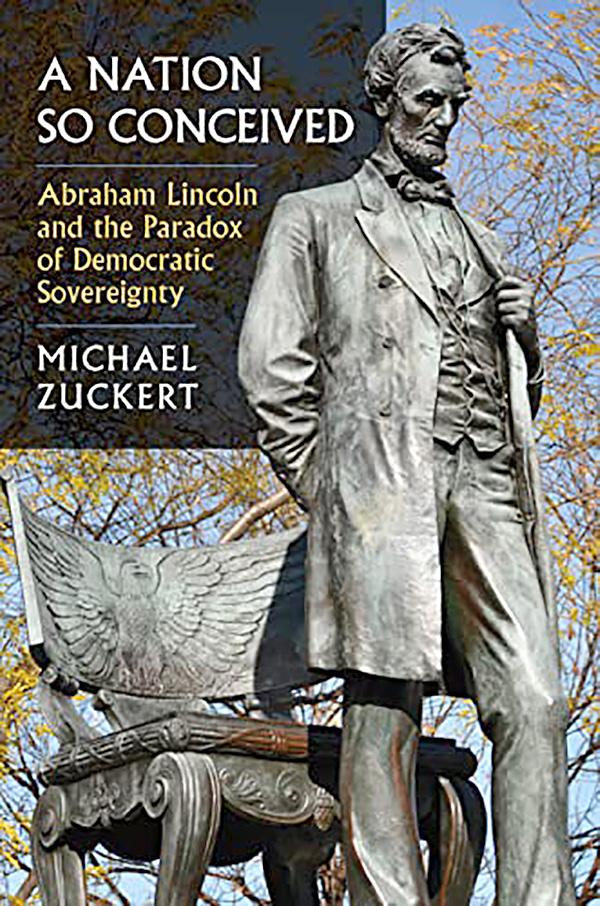
This book is a hard read. I found myself reading a chapter and then putting the book down to contemplate what I had just read, not only within the time period Lincoln uttered his speech, but its applications to today’s society. Much of today’s political and social rhetoric centers around human equality as it did in Lincoln’s lifetime. I believe one of the most telling comments the author makes is that more than 150 years after Lincoln gave his campaign and Presidential inaugural addresses, they are still read and studied, unlike the campaign speeches and inaugural addresses of the Presidents who have followed him.
Charles H. Bogart has a BA from Thomas More University and an MCP from Ohio State University. He is employed as a tour guide at the Fort Boone Civil War Battle Site in Frankfort, Ky., serves as President of the Frankfort Civil War Roundtable, and is a board member of the Kentucky Civil War Roundtable. He has written several books and articles on military and naval history.
37 July 2023 37 July 2023 CivilWarNews.com CivilWarNews.com
Subscribe online at CivilWarNews.com
Join the Crew! civilwarnavy.com 1 Year—4 Issues: $37.95 Subscribe Now at civilwarnavy.com Or send a check to: CSA Media, 29 Edenham Court, Brunswick, GA 31523 International subscriptions subject to postage surcharge. Visit our Website CivilWarNews.com
The Artilleryman is a quarterly magazine for collectors, competition shooters and those interested in ordnance from the Revolutionary War to World War II, primarily focusing on cannon, implements, projectiles and related artifacts from the American Civil War. This full color magazine features articles on cannon safety, artillery history, projectiles, fuses, places to visit, book reviews, competition events, and so much more. The annual quarterly subscription price is just $37.95.


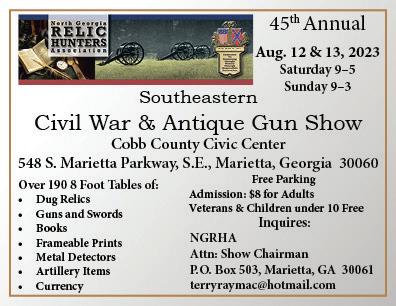


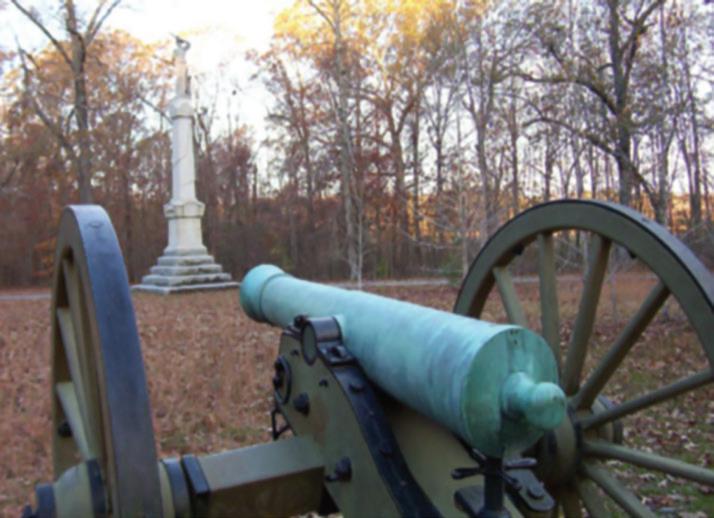




Military Antique Collector is a bi-monthly magazine with detailed high-resolution color photographs of some of the world’s most beautiful and unusual military collectibles. Dedicated to both the expert collector and novice alike, each issue is filled with informative articles written by leading authorities in their fields of expertise, including distinguished well-known authors, along with prominent museum and auction professionals. Issues spotlight rare and unusual military objects, craftsmanship works, and their relationship to historical figures dating from early American and European history to limited coverage of the post-1898 artifact. Priced at only $49.95 for 6 issues. It’s easy to see why Military Antique Collector magazine has become popular so quickly.






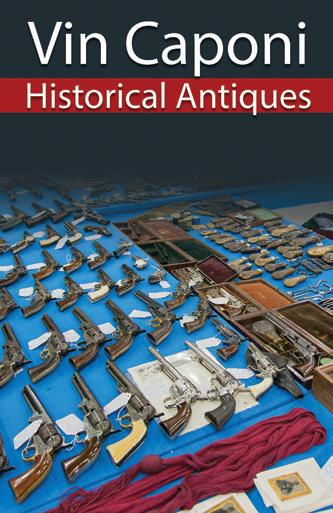



HistoricalPublicationsLLC.com















































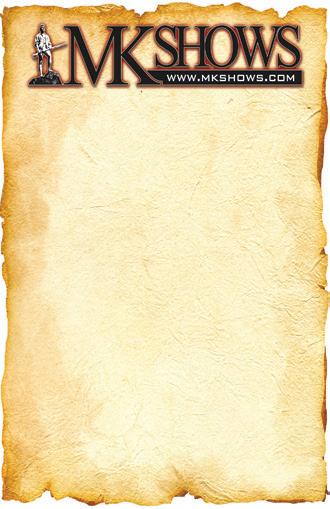




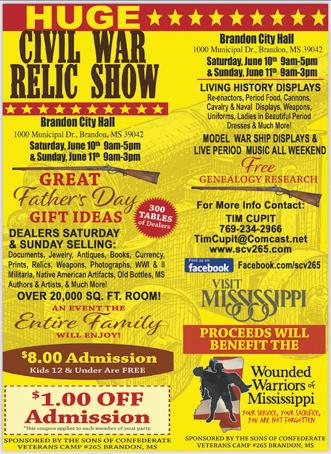













38 CivilWarNews.com July 2023 38 July 2023 CivilWarNews.com Museum Quality Civil War Union & Confederate Artifacts! WE HANDLE THE BEST Antique Bowie Knifes Civil War Swords Confederate D-guards Antique Firearms Dug Relics Buckles & Belts Identified Relics Letters & Documents Uniforms & Head Gear Images & Currency Flags ALLEN WANDLING 618-789-5751 • awandling1@gmail.com MidWestCivilWarRelics.com CONSIGNMENTS WELCOME Contact Glenn Dutton at: BUYING & SELLING Field & Heavy Artillery Cannon, Shells, Fuses & Etc. WE BUY ANTIQUE WEAPONS www.AndrewBottomley.com Mail Order Only Worldwide Shipping Calling the UK from overseas: +44 1484 685 234 Calling our UK cellphone from outside the UK: +44 7770 398 270 email: sales@andrewbottomley.com The Coach House, Holmfirth, England Scottish Highlanders Flintlock Pistol English Mortuary Basket Hilt Spanish Miquelet Pistol British Military Flintlock Blunderbuss Dated 1714 Your trusted source... ...for BOOKS, year-round author talks & appearances and MORE! www.GettysburgMuseum.com Operated by the nonprofit Gettysburg Nature Alliance Licensed Battlefield Guide tours available! 2023 Civil War Dealers Directory To view or download a free copy visit: civilwardealers.com/dealers.htm Promoters of Quality Shows for Shooters, Collectors, Civil War and Militaria Enthusiasts Military Collectible & Gun & Knife Shows Presents The Finest Mike Kent and Associates, LLC PO Box 685 Monroe, GA 30655 (770) 630-7296 Mike@MKShows.com • www.MKShows.com Northwest Georgia Trade Center 2211 Tony Ingle Parkway Dalton, GA 30720 February 4 & 5, 2023 Chickamauga (Dalton) Civil War Show Williamson County Ag Expo Park 4215 Long Lane Franklin, TN 37064 December 2 & 3, 2023 Middle TN (Franklin) Civil War Show l l over the image to go directly to the website for current show schedule. WALLACE MARKERT csacquisitions@gmail.com 16905 Nash Road Dewitt, Virginia 23840 804-536-6413 www.csacquisitions.com Shiloh 2405 Oak Grove Road Savannah, TN 38372 History@shilohrelics.com owner Rafael Eledge .com Dealing in the Finest Authentic Militaria Since 1995 Pistols, Muskets, Carbines, Rifles, Bayonets, Swords, Uniforms, Headgear, Belt Buckles, Cannon, Buttons, Bullets, Artillery Implements Etc. Are you… Afraid of buying “nice” piece just find RebelRelics.com “You gonna check out my website or whistle Dixie?” Brian “Rebel” Akins Greg Ton Buying the Finest in Confederate, Obsolete and Southern States Currency Greg Ton • P.O. Box 9 Franklin, TN 37065 Phone: 901-487-5944 • Email: GTon1@aol.com Since 1978 GregTonCurrency.com We have been a family business since 1965, buying and selling fine antiques. Our collection of antiques ranges from Civil War military to antique military and toys. the highest quality. As taught by my father before me, we sell original quality items that are backed by our family guarantee. Vin Caponi Historic Antiques 516-593-3516 516-353-3250 (cell) rampantcolt@aol.com 18 Broadway, Malverne, NY 11565 34 York St • Gettysburg, PA 17325 717-334-2350 CIVILWAR@UNIONDB.com uniondb www.CollegeHillArsenal.com College Hill Arsenal PO Box 178204 Nashville, TN 37217 615-972-2418 John Sexton ISA-CAPP 770-329-4984 CivilWarAppraiser@gmail.com OVER 40 YEARS EXPERIENCE AUTHENTICATION SERVICES FOR Consultations as to best monetize valuable objects or collections in Is your collection appraised and inventoried for your heirs and family? CONFIDENTIAL APPRAISALS & AUTHENTICATIONS Schedule essential estate planning appraisal www.CivilWarBadges.com badges@bellsouth.net 1036 Washington Ave. Woodstock, Georgia 30188 The Largest Selection of GAR & UCV Hundreds of Memorabilia Items from Rev War through Vietnam Secure & Easy Guaranteed Authenticity of Every Item Buttons, Belt Buckles, and Accoutrements. Allen Gaskins NC Relics BUYING AND SELLING AUTHENTIC Steve and Melody Strickland 770-633-5034 info@dixierelicsonline.com HTTPS://DIXIERELICS.COM The Maryland Arms Collectors Assoc., Inc. presents The “Original Baltimore” Antique Arms Show Since 1955 Maryland State Fairgrounds Timonium, MD North of Baltimore, York Road, MD. Rt. 45 March 18-19, 2023 Public Hours: Sat. to 5, Sun. 9 to 3. Admission: $10.00 – Modern Handguns are Prohibited –Complete information on web site: www.baltimoreshow.com Known as the “CROWN JEWEL” of Collector’s Shows! Welcoming Consignments complimentary estimate on single Get in touch! civilwarshop@gmail.com (252) 636-3039 WE BROKER! www.civilwarshop.com Life Member, Company Military Historians Sons of ConfederateVeterans BATTLEGROUND ANTIQUES, INC.
Vol. 39, No. 4 Fall 2018 $8.00 ArchaeologicalExcavationsataConfederateBattery•HistoricalArtilleryofLeHôpitaldesInvalides Coastal Artillery at Fort Moultrie • 100-Pounder Navy Parrott Shells Confederate 2.25-Inch Projectile Identified • The Evolution of Brooke Sabots Also in is issue:
Before making plans to attend any event contact the event host.
June 23-25, Pennsylvania. 50th Gettysburg Civil War Show
The nation’s premier Civil War relic and collectors show at the Eisenhower All Star Complex at 2634 Emmitsburg Rd., Gettysburg. Our 300+ tables are a great way to view and even purchase authentic Civil War artifacts. Browse the tables and speak with the vendors who are all well versed in history and artifact identification. Better than a museum! Every item has someone willing to give you its history lesson and answer all your questions. $100 VIP Charitable donation includes Friday and early admission for the serious collector. Hours: Sat. 10-5, Sun. 9-2. Admission $10, children under 12 free. For more information visit https://www.gbpa.org/event/annual-civil-warrelic-show.
July 8, Rain Date: July 9, Maryland. Battle of Falling Waters
Commemoration
14906 Falling Waters Road, Williamsport, MD 21795. Hours: 10 a.m. – 3 p.m. Parking on site and off site (directed). This year, the organization will hold an event on the actual battlefield to commemorate the July 14 events. Sixteen acres of pristine battlefield including the 1823 Daniel Donnelly House (exterior only), which are private property will be showcased during the event. Additionally, guests will have an opportunity to walk the 3 ½ acres adjoining the Donnelly House property, saved through partnership with the American Battlefield Trust, American Battlefield Protection Program, Heart of the Civil War Heritage Area and Visit Hagerstown. A Civil War Trails interpretive marker is a feature of that portion of the battlefield. Features of the one-day event: Civil War era medical displays and demonstrations, author Emilie Amt, talk and book-signing Civil War era military encampment and demonstrations (no reenactment), relic display, raffle, self-guided site and battlefield tours, military pontoon bridge display, beverages and food available, commemorative merchandise for sale. For questions or additional information, please contact: George Franks, President, Battle of Falling Waters 1863 Foundation, Inc., fallingwatersmd1863@ gmail.com, 301-379-0330.
July 15, Virginia. Walking Tour
Shenandoah University’s McCormick Civil War Institute will commemorate the 159th anniversary of the Battle of Cool Spring with a special walking tour, “Never to be Forgotten”: Reflections on the Battle of Cool Spring at the University’s River Campus at Cool Spring Battlefield (1400 Parker Lane, Bluemont, VA). Tour with Prof. Jonathan A. Noyalas focus on the histories of individuals engaged at the battle and how what occurred along the banks of the Shenandoah River on July 18, 1864, changed them. The tour will begin at 9:30 a.m. and last approximately 90 minutes. Event is free and open to the public. No pre-registration required. Questions: jnoyalas01@su.edu or 540665-4501.
July 22-23. Tennessee. Civil War & Artifact Show
American Digger® Chattanooga Civil War & Artifact Show, Camp Jordan Arena, 323 Camp Jordan Pkwy, East Ridge, Tenn. Info: 770-362-8671 or 716-574-0465; anita@americandigger.com or kesmas@localnet.com. Visit https://americandigger.com/upcoming-events.
Aug. 12-13, Georgia. Civil War Show and Sale
45th Annual Southeastern Civil War & Antique Gun Show in Marietta at the Cobb County Civic Center hosted by the North Georgia Relic Hunters Association. Cobb County Civic Center, 548 South Marietta Pkwy SE, Marietta, GA 30060. Hours Sat. 9 a.m. to 5 p.m., Sun. 9 a.m. to 3 p.m. Admission $8, veterans and children under 10 are free. Show chairman: Ray McMahan at terryraymac@hotmail.com. For more info visit www.ngrha.com.
Sept. 16, Virginia. Walking Tour
Shenandoah University’s McCormick Civil War Institute in partnership with the Fort Collier Civil War Center will offer a tour with Prof. Jonathan A. Noyalas, The Scene as I Remember It”: Reflections on Experiences at Fort Collier during the Civil War, in observance of the 159th anniversary of the Third Battle of Winchester. The tour, which will begin at 9:30 a.m. and last approximately seventy-five minutes, will take place at Fort Collier, 922
Martinsburg Pike, Winchester, Virginia. Event is free and open to the public. No pre-registration required. Questions: jnoyalas01@su.edu or 540-665-4501.
Sept. 23, Illinois. Civil War & Military Extravaganza
Zurko Promotions presents The National Civil War Collectors Fall Show and Sale which will be held at the DuPage County Fairgrounds, 2015 W. Manchester, Wheaton, Ill. Hours: 9 a.m. to 4 p.m. Admission is $10, Early Admission $25. Free parking. For more information visit www.chicagocivilwarshow.com or call Zurko Promotions at 715-5269769.
Oct. 6-8, Virginia, Annual Conference
Central Virginia Battlefields Trust hosts its 2023 annual conference, “1863: Chancellorsville-The Crossroads of Fire.” This year’s conference features a Friday tour of Moss Neck, Gen. “Stonewall” Jackson’s 1862-63 winter headquarters with historian Frank O’Reilly. That evening the President’s Reception will be at the Sentry Box, one of Fredericksburg’s most historic homes. Saturday features a tour of the Chancellorsville battlefield with historians Chris Mackowski and Kris White. Saturday evening includes a banquet and the annual meeting with a keynote address by Kris White at historic Belmont in Falmouth. Sunday brunch at Stevenson’s Ridge includes a panel discussion about “Chancellorsville as the Prelude to Gettysburg” with historians Sarah Kay Bierle, John Hennessey, Robert Lee Hodge, Scott Walker, and others. The weekend registration is $260.00 per person. More information and online registration are available at: https://www.cvbt.org/cvbt-annual-conference.
Oct. 6-8, Virginia. Period Firearms Competition
The North-South Skirmish Association 148th National Competition near Winchester. Over 3,000 uniformed competitors in 200 member units compete in live-fire matches with muskets, carbines, revolvers, mortars and cannon plus costume competitions and historical lectures. The largest Civil War live-fire event in the country. Free admission, large sutler area, and food service. For more information visit the N-SSA web site: www.n-ssa.org.
Oct. 21-22, Virginia. Reenactment
The 159th Anniversary Reenactment of the Battle of Cedar Creek recreating the last major battle in the Shenandoah Valley will be held the weekend of Oct. 21-22 at 8437 Valley Pike in Middletown, Va. See cavalry, artillery, and infantry soldiers in action and in camp. Battle scenarios, music, symposia, and medical, military, and civilian demonstrations are scheduled each day. Fundraising raffles, period merchants, and food vendors onsite. Don’t miss the Evening Candlelight Tour Program. 1-day, 2-day, and discount options available! Children 6 & under are free! For more information; 540-869-2064, Info@ccbf.us or www.ccbf.us.
Nov. 4, Virginia. Seminar & Tour
Shenandoah University’s McCormick Civil War Institute annual fall seminar and tour with Prof. Jonathan A. Noyalas, “Breaking the Shenandoah Valley’s Gibraltar: Battle and Reunion at Fisher’s Hill.” $25 registration fee covers morning lecture at Shenandoah University (1460 University Drive, Winchester, VA), lunch at SU, and vehicle caravan of sites. Event begins at 10:30 a.m. and concludes at 4:30 p.m. To register visit www.su.edu/mcwi. Questions: jnoyalas01@su.edu or 540-665-4501.
Nov. 10, Pennsylvania. US Marine Corps Birthday Observance
Join us at the Laurel Hill Cemetery, 3822 Ridge Ave, in Philadelphia at 11 a.m. at the grave of General Jacob Zeilin, 7th Commandant of the Marine Corps during the Civil War. A special ‘Veterans’ Day tour of heroes ‘killed in action’ and buried at Laurel Hill Cemetery will follow. sponsored by: The Legion Post 405; MOLLUS; General Meade Society. For information; 215-228-8200, awaski01@gmail.com, 215-423-3930 or www.thelaurelhillcemetery.org.
Nov. 18, Pennsylvania. Remembrance Day in Gettysburg
General Meade & his Generals and the veterans of the Battle of Gettysburg Honor/Dedication Ceremonies during the Remembrance Day Observance. Honoring all commanders and veterans of the Battle. Meet at the General Meade Equestrian Monument at 10 a.m. For information; Jerry McCormick at 215-848-7753 or gedwinmc@msn.com.
Nov. 18, Virginia. Civil War Show
In conjunction with the Central Virginia Civil War Collectors Association, Bullet and Shell is proud to present the 42nd Annual Central Virginia Military Antique Show (formally Mike Kent’s Capital of the Confederacy Civil War Show). This year, the show is moving to a new location at Meadow Event Park, 13191 Dawn Blvd, in Doswell, Va. The show will host vendors and displays of American military history from the Revolutionary War through WWII. Bring your relics for appraisal or to sell. Over 300 tables! There will be many historical items to add to your collection. Show hours are 9-5 on Saturday, vendor setup on Friday. Parking is free and admission is only $10/adults with children under 12 free. For more information; www.MilitaryAntiqueShow.com.
Dec. 3-4, Tennessee. Civil War Show and Sale
MK Shows presents the 36th annual Middle Tennessee Civil War Show and Sale at the Williamson County Ag Expo Park, 4215 Long Lane in Franklin. The nation’s largest Civil War show, featuring 750 tables of antique weapons, artifacts and memorabilia from top dealers and collectors around the country and encompassing all eras of military history from the Revolutionary War through World War II. Appraisers are always on hand to help you identify and value your military collectibles at no cost. Hours are 9-5 on Sat., 9-3 on Sun. Free Parking. Admission is only $10/ adults and children under 12 are free. For information; www.MKShows.com or Mike@MKShows.com.
Dec. 31, Pennsylvania. Annual General Meade Birthday Celebration
This year will mark the 208th annual anniversary of the birth of General George G. Meade. The General Meade Society of Philadelphia will celebrate his birthday at Historic Laurel Hill Cemetery, 3822 Ridge Ave. at noon. A champagne toast and reception will follow the program. For information; 215-228-8200 Laurel Hill Cemetery
https://www.historicalpublicationsllc.com/site/eventlistings.html for all 2023 events.
39 July 2023 39 July 2023 CivilWarNews.com CivilWarNews.com
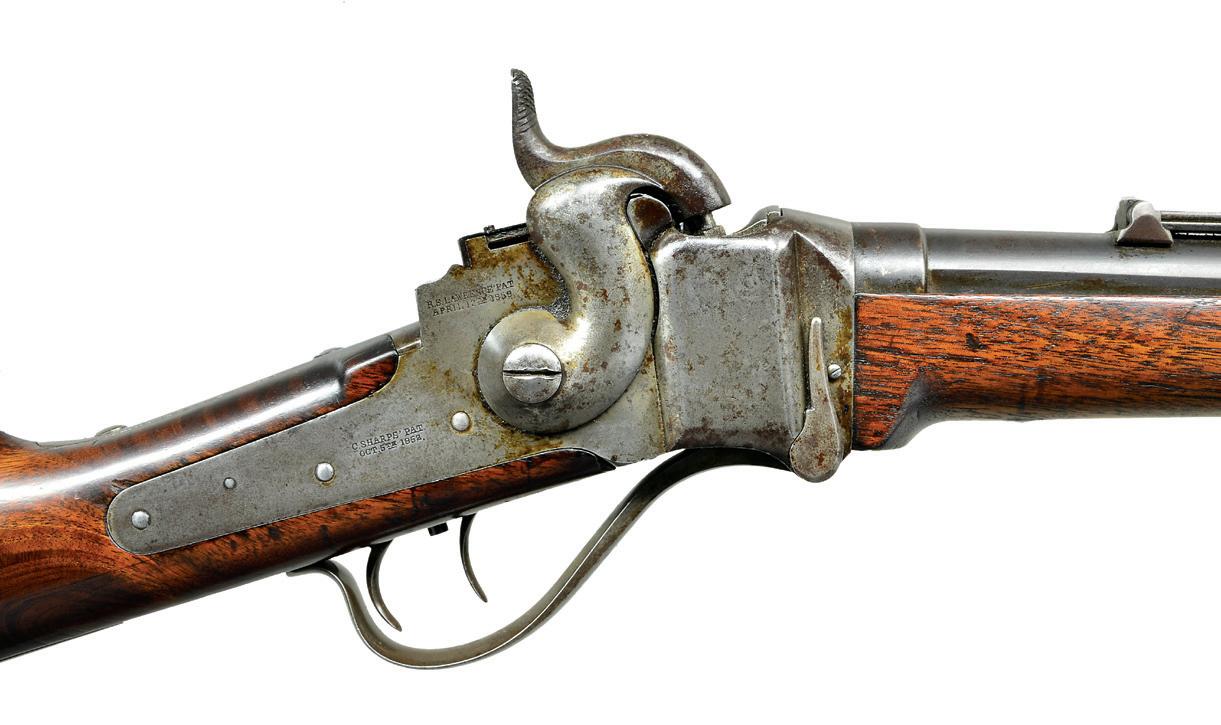


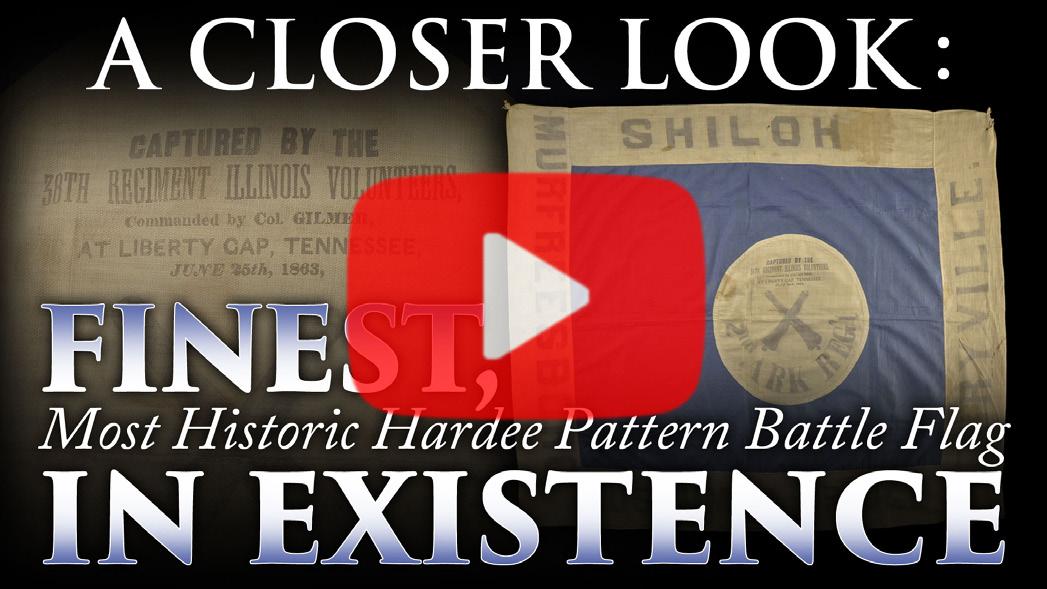



poulinauctions.com | 199 Skowhegan Rd, Fairfield, ME 04937 | Stephen Poulin, ME Lic # 1115 • Reputation - Sterling reputation for honest, straight forward business relationship with both buyers and sellers alike. • The Best Rates In The Industry - The Poulin & Julia family provides the most competitive commission rates in the industry. Including 0% or better seller’s commission on expensive items and valuable collections. • Finest Expertise - We utilize over 250 years of combined professional consultant experience and an additional three-generations of marketing expertise of nearly $1 BILLION in combined total sales by the Poulin & Julia Family. • Unique Auction Description Guarantee - We utilize honest, knowledgeable and detailed descriptions with the most comprehensive guarantee, building the highest level of confidence from bidders and generating the greatest return for consignors. • Presentation - Building interest and enthusiasm from potential bidders is crucial for achieving the maximum value for our consignors. Utilizing the finest detailed photography, catalog design and state of the art auction facility generates the highest level of excitement from potential bidders & the best results for your collectibles. • Additional Poulin & Julia Family Benefits - Fully insured, numerous bidding options available, complimentary consignment pick up for expensive items and valuable collections, massive client base of international and domestic clientele & extremely aggressive marketing campaign. Nearly IN COMBINED TOTAL SALES Contact Jim for a free consignment consultation at (207) 742-0007 or email jamesjulia@poulinauctions.com $1 BILLION THE TRADITION CONTINUES... FAMILY REUNION! His expertise and experience in marketing and achieving the best results for high end quality firearms & collectibles will help continue to grow our firm into the leading specialty firearms auctioneer in the world. We are pleased to announce the renewed partnership with the world-famous auctioneer... James D. Julia! 0% Or Better! Seller’s Commission On Expensive Items & Valuable Collections THE POULIN & JULIA FAMILY DIFFERENCE If you are interested in more information about consigning a single item or an entire collection, we would very much like to discuss with you the methods and strategies to generate you, the consignor, the greatest return. Contact James Julia for a free consignment consultation at: or by email: (207) 742-0007 jamesjulia@poulinauctions.com Sold $575,000 Visit Poulin Auctions On YouTube.com to view a large variety of in-depth videos! For more information, please visit: www.poulinauctions.com or call (207) 453-2114 and become a consignor today! ACCEPTING CONSIGNMENTS FALL 2023 PREMIER FIREARMS & MILITARIA AUCTION November 3rd, 4th, & 5th, 2023 | Fairfield ME Antiques & Auctions Inc. Sold$181,500 San Jacinto Armory Texas Confederate Bowie Knife w/ Original Belt & Sheath, Private Robert Hogan, 24Th Mounted Texas Infantry Sold $24,200 Exquisite Berdan Sharps, Wiley Sword Collection Sold $54,450 Auction World Record for a Civil War Martial Small Arm Sold $63,250 Auction World Record for a Confederate Kepi




































































































































































































































































